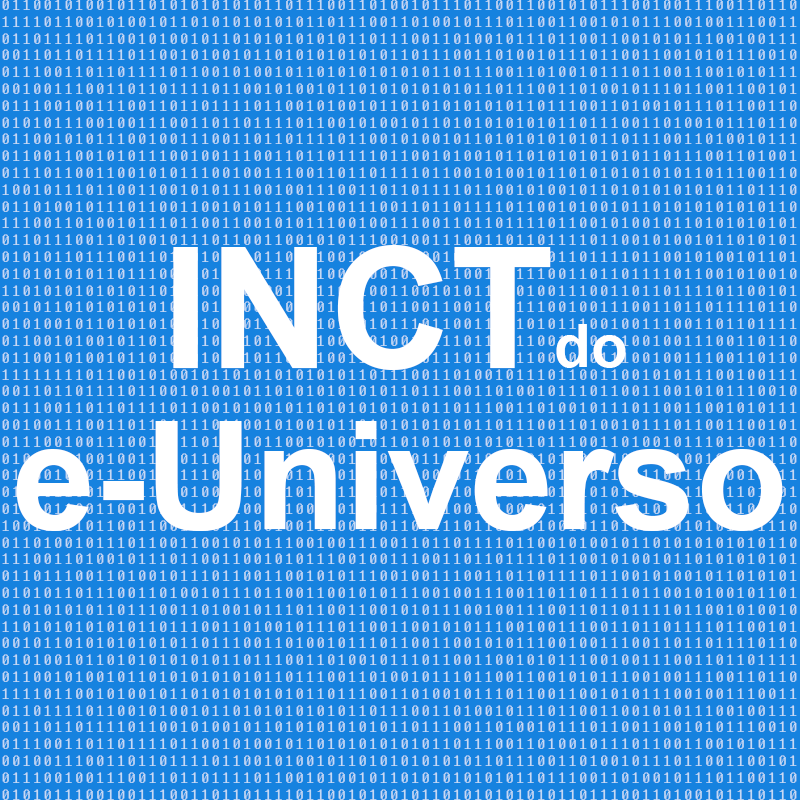Webinars 347
Since 2011 we promote webinars which are an important aspect of our personnel development. This allows collaborators anywhere in the world to join seminars about the latest developments in several astronomical and technical fields. Webinars are presented in english and announced to a mailing list. Click here if you want to subscribe.

Speakers 315
202420232022202120202019201820172016201520142013201220112024
2023
2022
2021
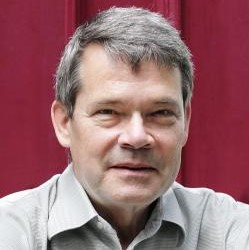
Richard Kron
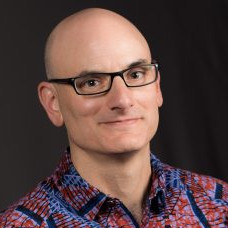
David Trilling
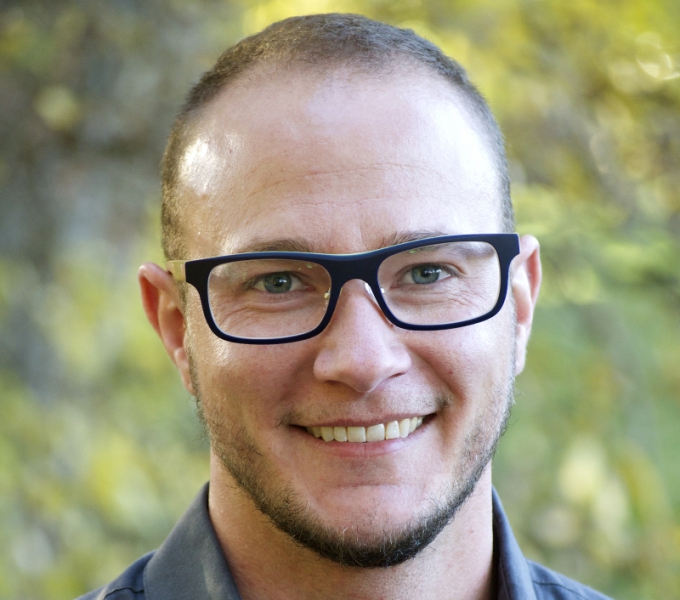
Troy Raen

Francisco Förster
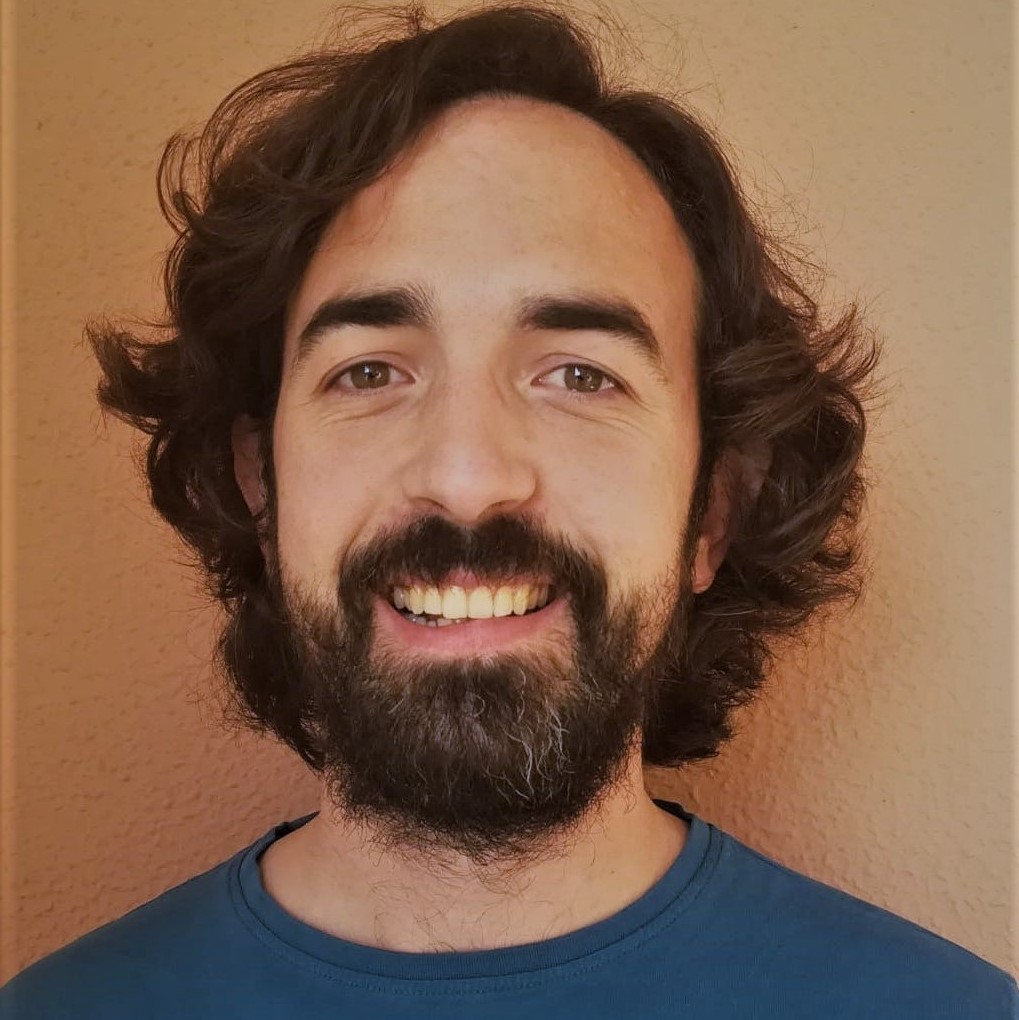
Andreu Font-Ribera
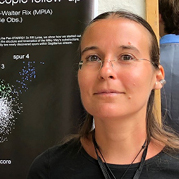
Nina Hernitschek
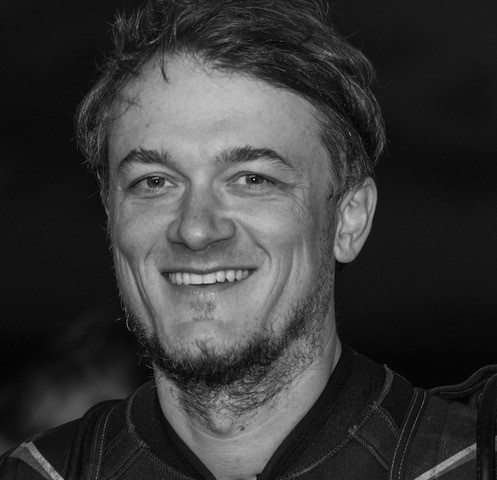
Dragan Huterer

Anais Möller
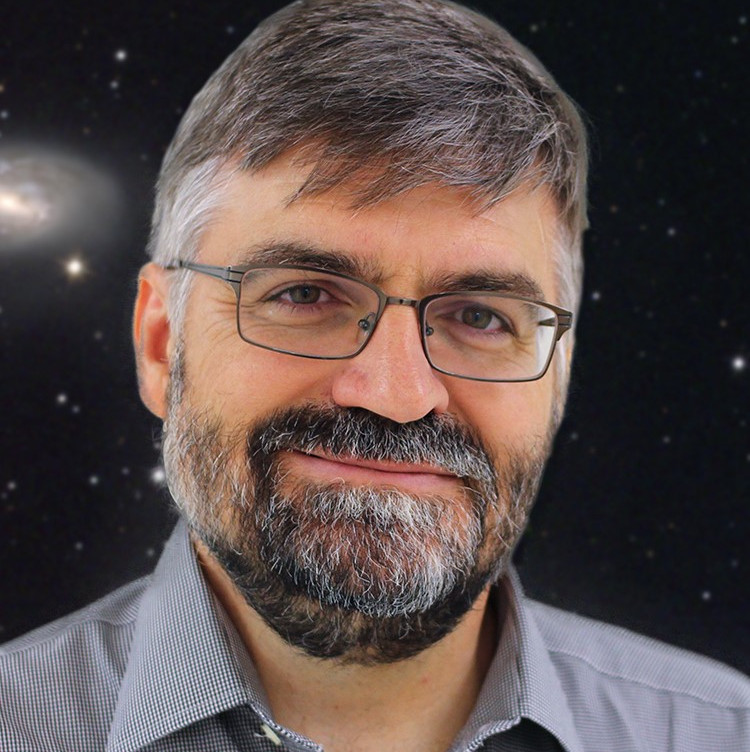
Thomas Matheson
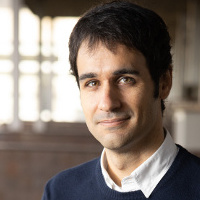
Héctor Gil-Marín

Robert Morgan
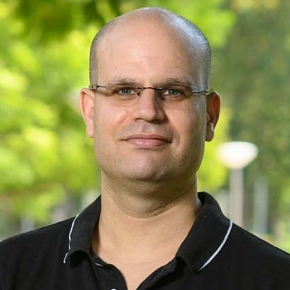
Barak Zackay

Tassia Ferreira
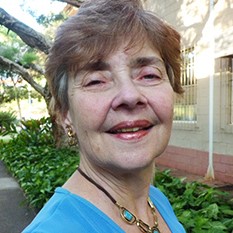
Claudia Bauzer Medeiros
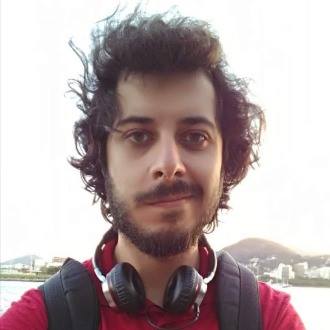
Edison Cesar Santos
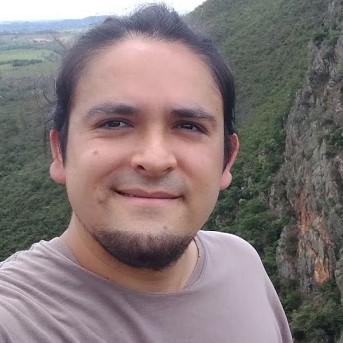
Hugo Camacho

Bruno Morgado
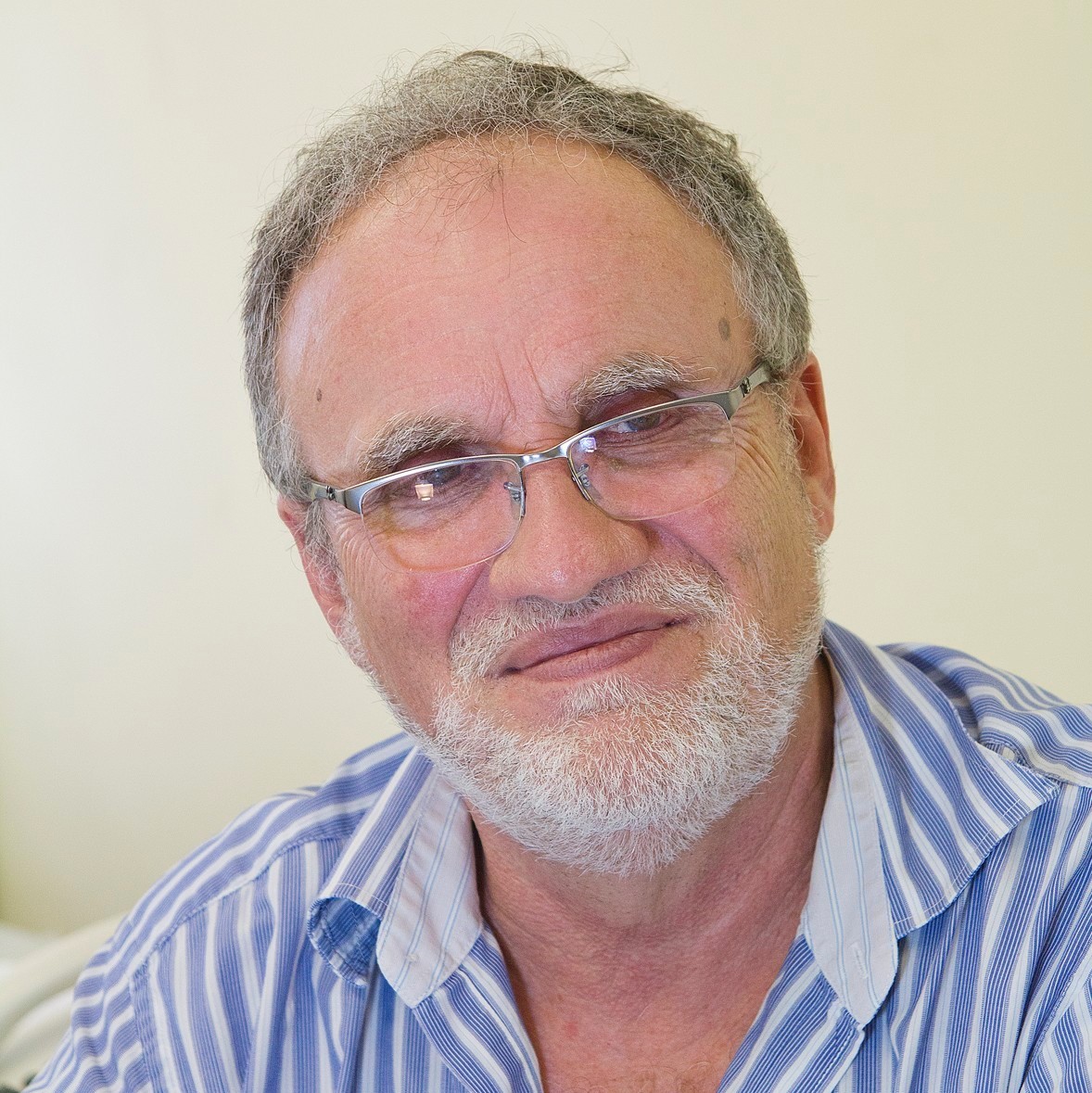
Jacques Lepine

Carlos Bengaly
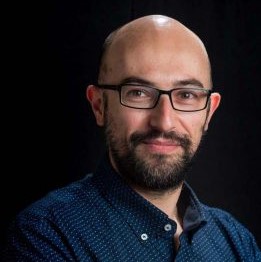
Davide Perna
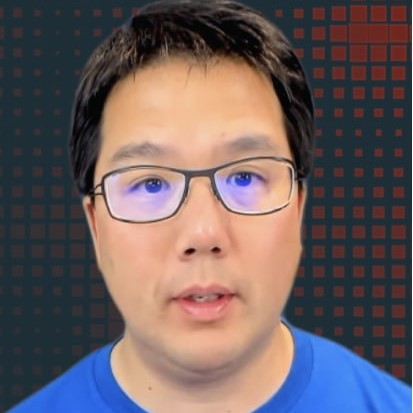
Denny Lee
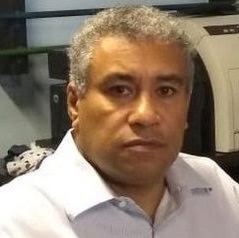
Wagner Corradi
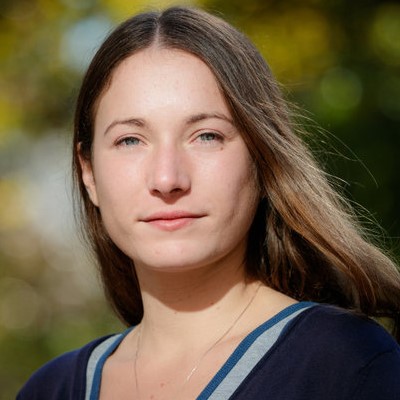
Dalya Baron
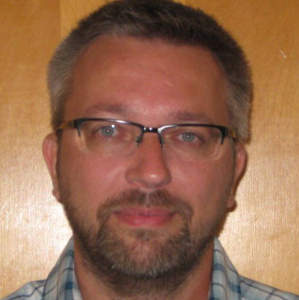
Robert Nikutta

Public Holiday
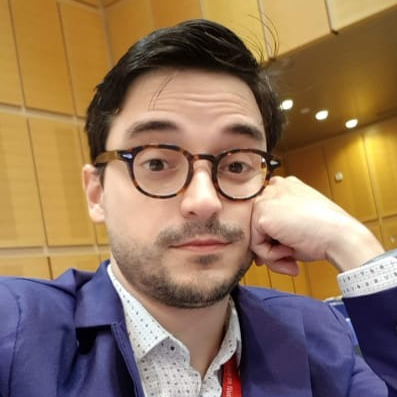
Willian Vieira de Abreu

Thaisa Storchi Bergmann
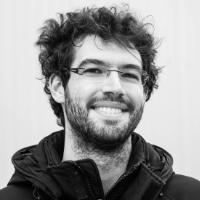
Francesco Valentino
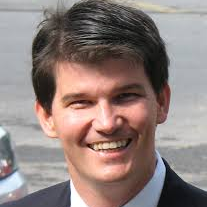
Michael Blanton
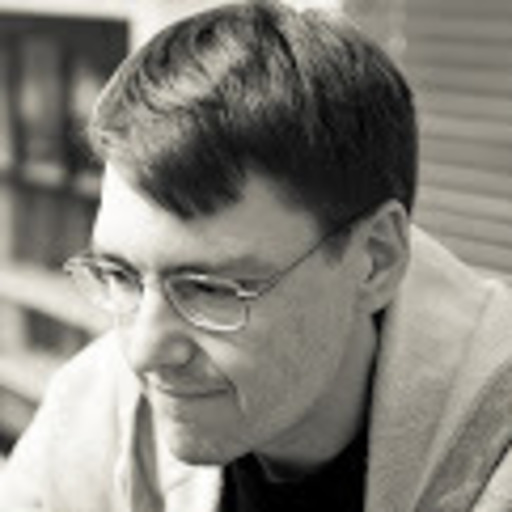
Samuel Schmidt

Allan Alves & Denise Köche
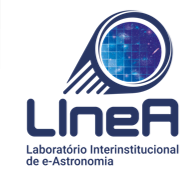
LIneA Workshop
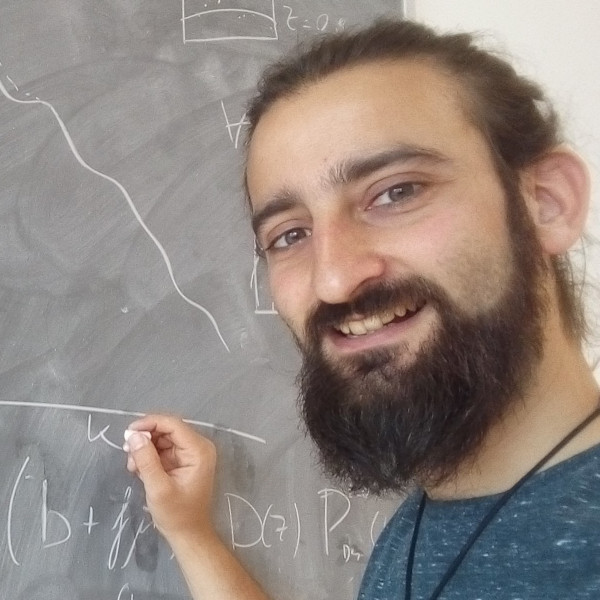
Santiago Àvila
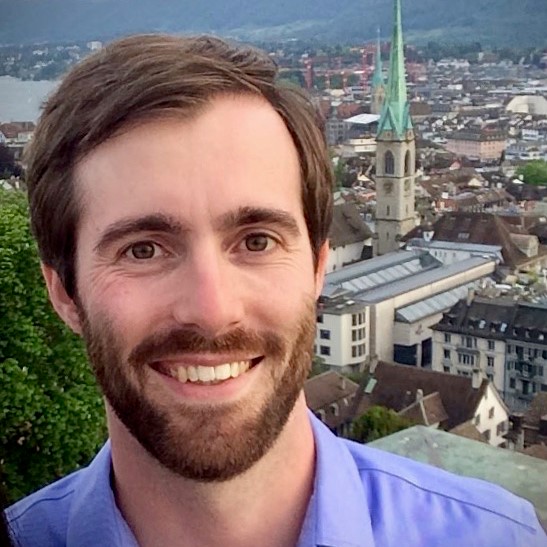
Tilman Troester
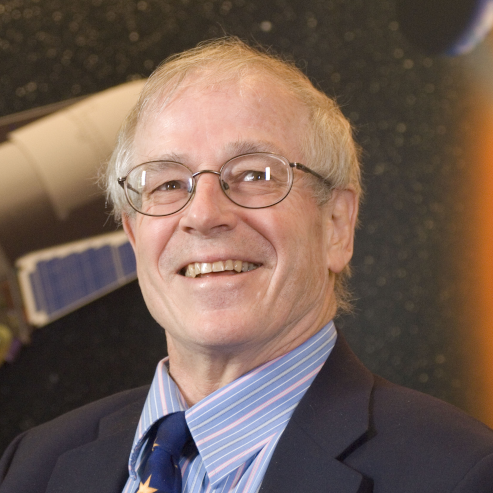
David Latham
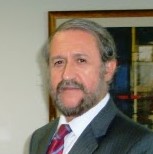
Eduardo Janot Pacheco

Sunil Mucesh
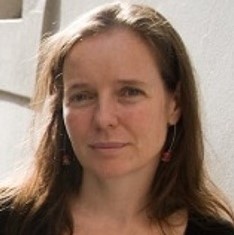
Leanne Guy
2020
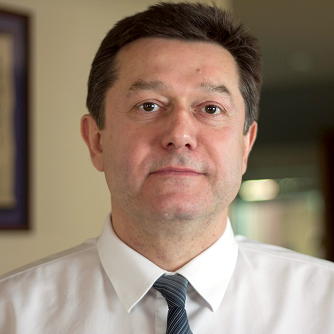
Željko Ivezić
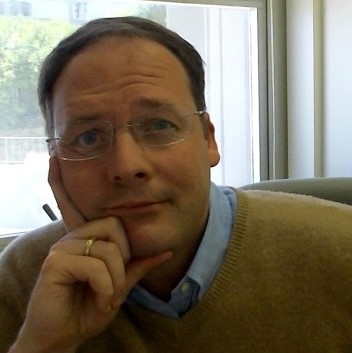
Peter Nugent

Alex Kim
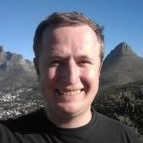
Peter Hatfield
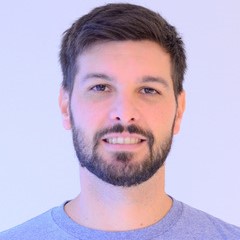
Santiago Ismael Ferrero
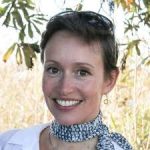
Carolina Ödman-Govender

Vivian Miranda

Emir Uzeirbegovic
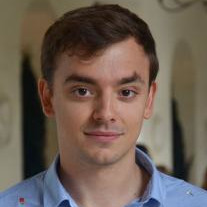
Cyrille Doux
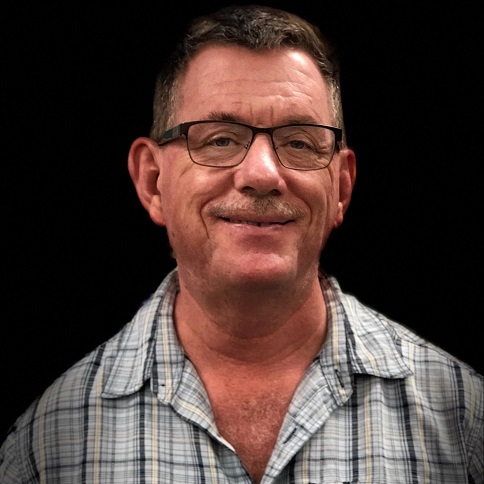
Peregrine McGehee

Mireia Montes
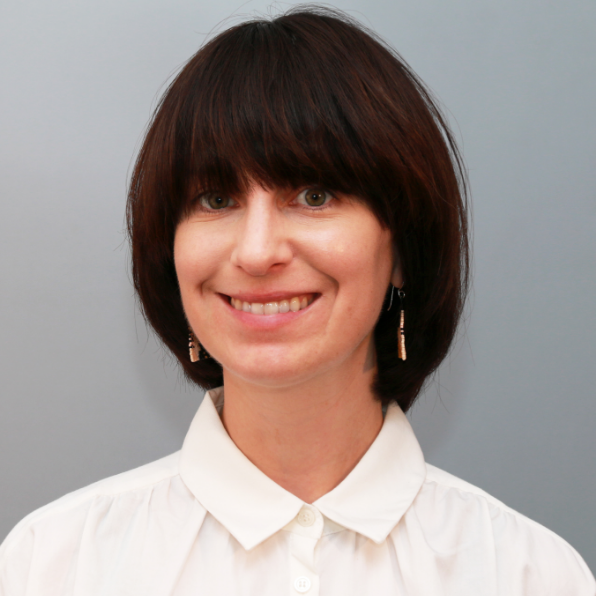
Allison Noble
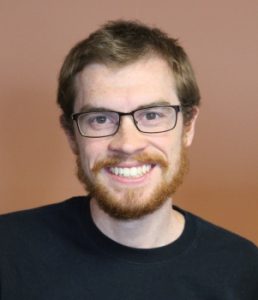
Keith Bechtol
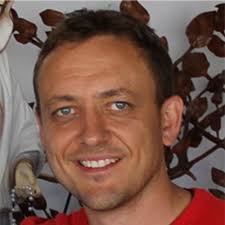
Petar Zecevic
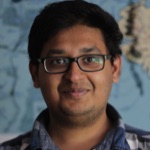
Kartheik Iyer

Luis F. R. Macedo
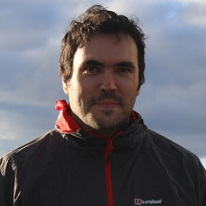
Matt Hilton
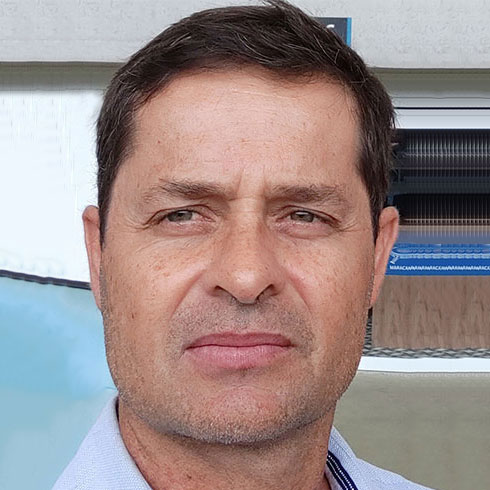
Fabio Porto
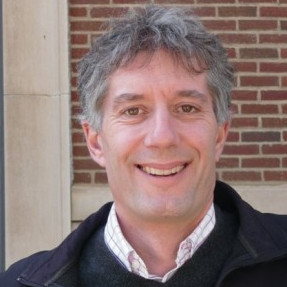
August (Gus) Evrard
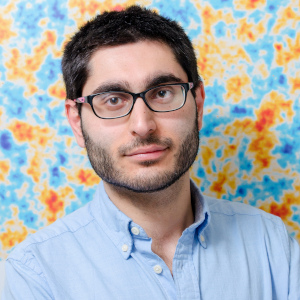
Dimitrios Tanoglidis

Kyle Chard
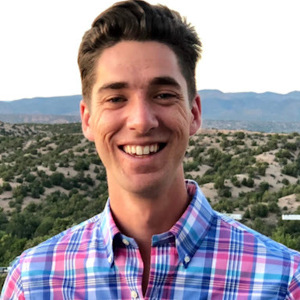
Ethan Nadler
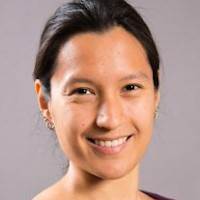
Camille Avestruz
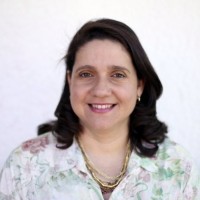
Michelle Wangham
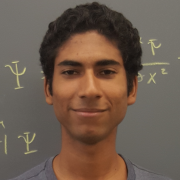
Justin Myles

François Lanusse

Pedro Bernardinelli
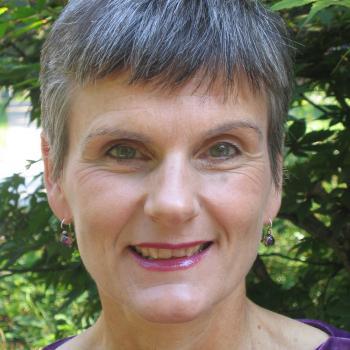
Eve Kovacs
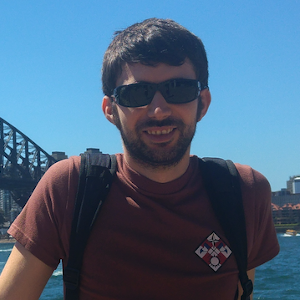
Paul Giles

Rachel Amey

Carlos Alexandre Wuensche
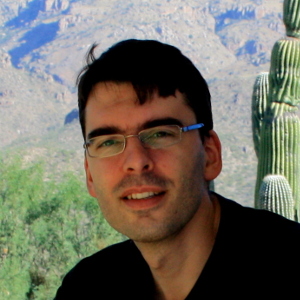
Mario Juric
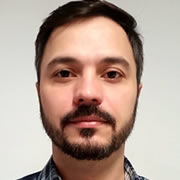
Rodrigo Boufleur
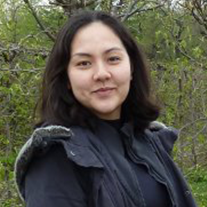
Emille Ishida
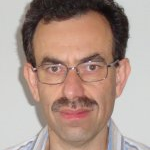
Emmanuel Lellouch

J D Prasanna Deshapriya

Marcelo Emilio
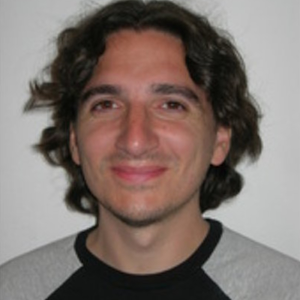
Ariel Sanchez
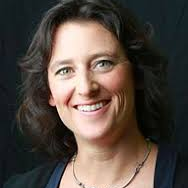
Tamara Davis
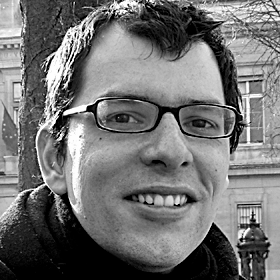
Jo Bovy
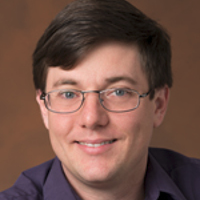
Joseph Masiero
2019
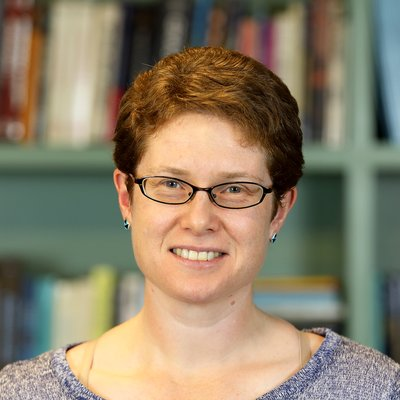
Rachel Street
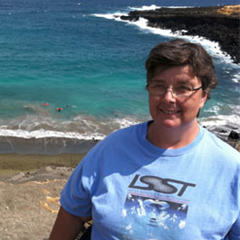
Ardis Herrold
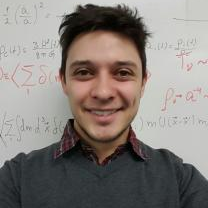
Lucas Secco

Mariana Vargas-Magana
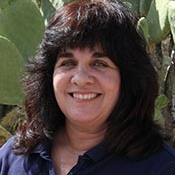
Connie Walker
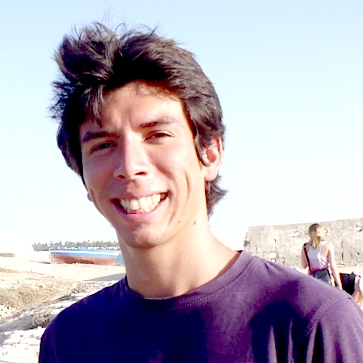
Julian Bautista

Matteo Costanzi
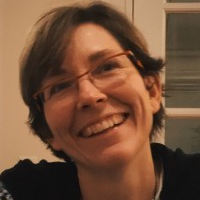
Jennifer Sokoloski

Matias Carrasco Kind
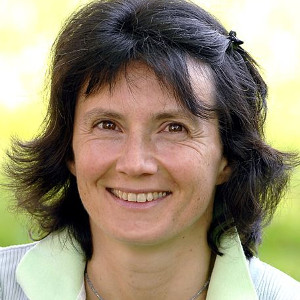
Nathalie Palanque-Delabrouille
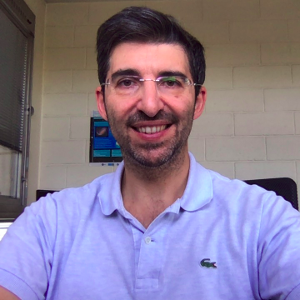
Andrea Cattaneo
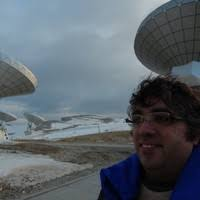
Pedro Beaklini
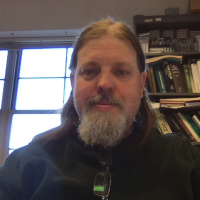
Robert Gruendl
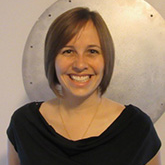
Kate Grier

Sugata Kaviraj
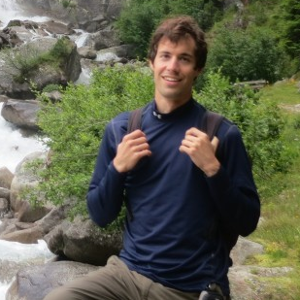
Edward Schlafly
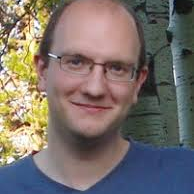
Joe Zuntz

Bryan Miller
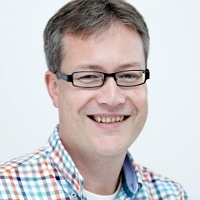
Henk Hoekstra
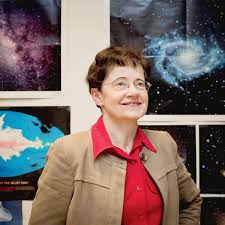
Françoise Combes
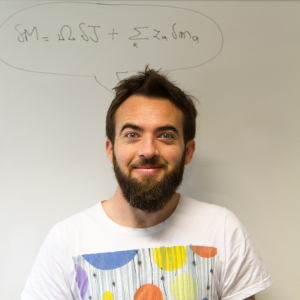
Alexandre Le Tiec
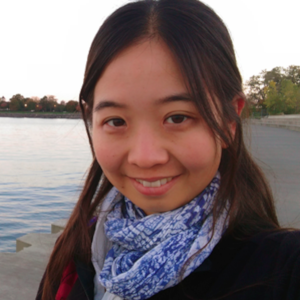
Chihway Chang
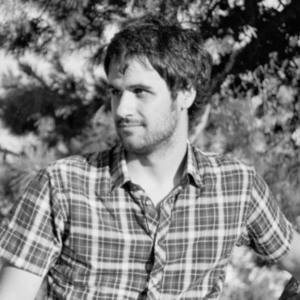
Hector Gil-Marin

Marika Asgari
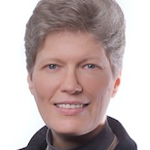
Eva Grebel

Fabian Schmidt

Katelyn Stringer
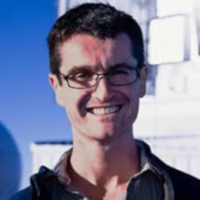
Wesley Fraser

Bruno Castilho

Paola Dimauro
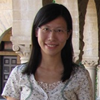
Hao-Yi Wu
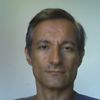
Adriano Pieres
.png)
Jennifer Marshall

Michael Wood-Vasey
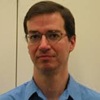
Brian Yanny

George Beckett
2018
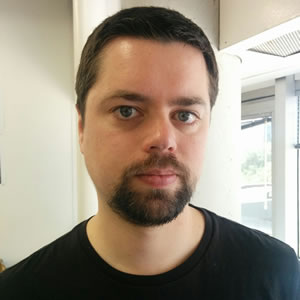
Martin Eriksen
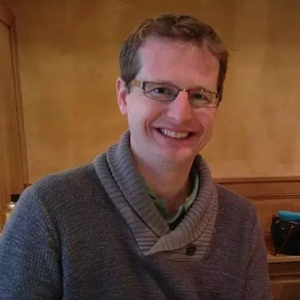
Jordan Raddick
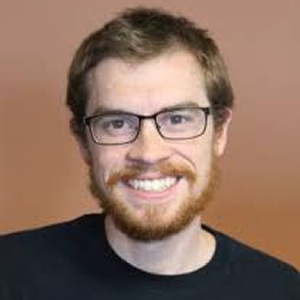
Keith Bechtol

Celso Mendes
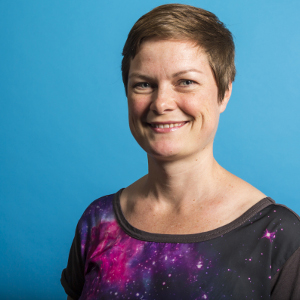
Amanda Bauer
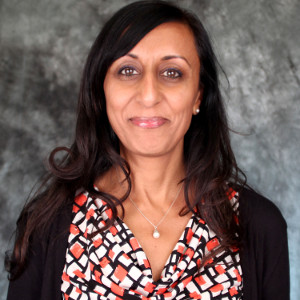
Ranpal Gill
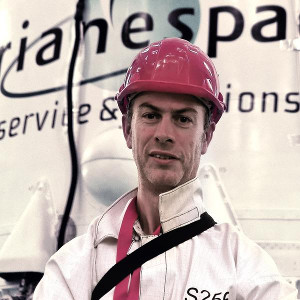
William O\'Mullane
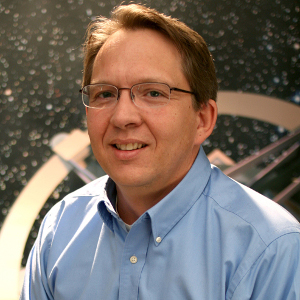
Victor Krabbendam
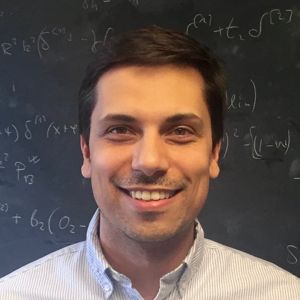
Marko Simonovic

William Hartley

Ian Shipsey
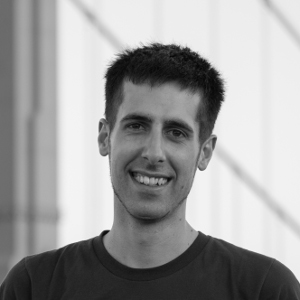
Marcel Schmittfull
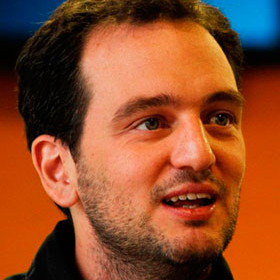
Ezequiel Treister
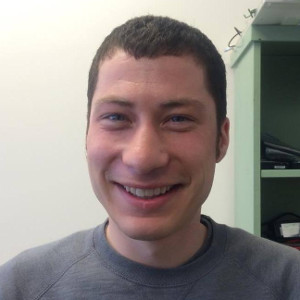
Seth Siegel
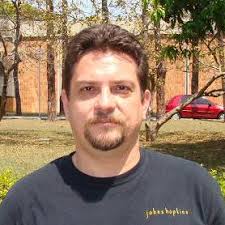
Rafael Santos
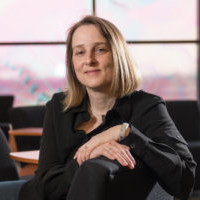
Katrin Heitmann
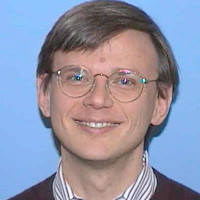
Gregory Dubois
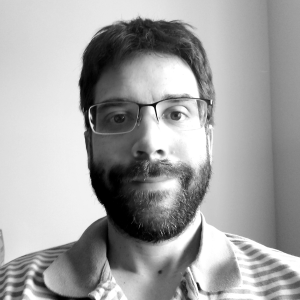
Matias Carrasco
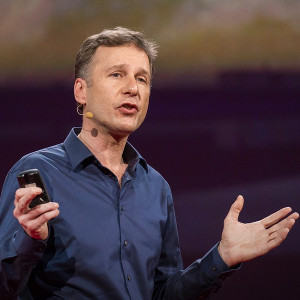
Andrew Connolly
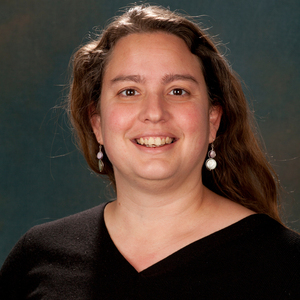
Jennifer Johnson
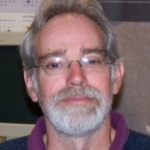
Scott Anderson
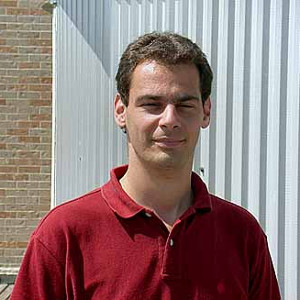
Niv Drory
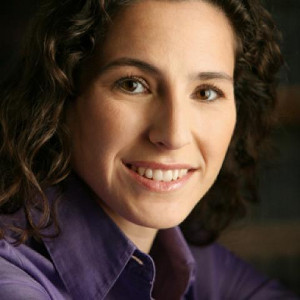
Juna Kollmeier
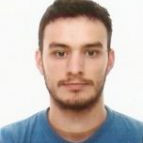
David Alonso
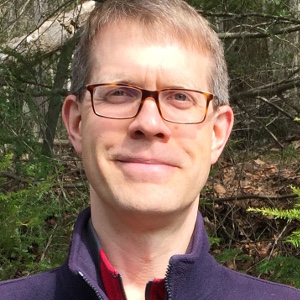
Niel Brandt
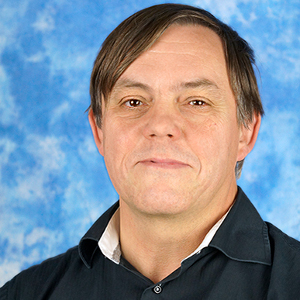
Dominique Boutigny
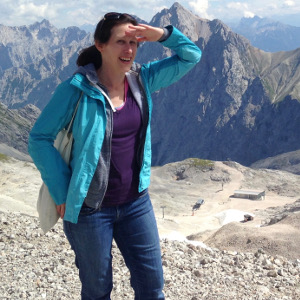
Melissa Graham
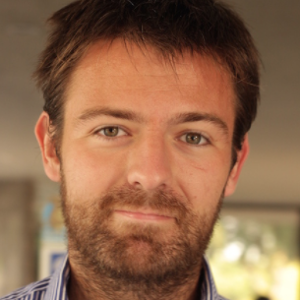
Francisco Javier
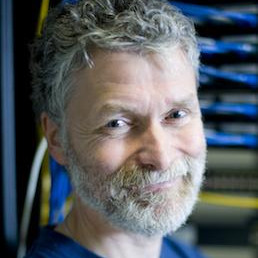
Andreas Wicenec
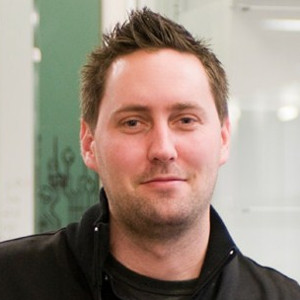
Kyle Chard
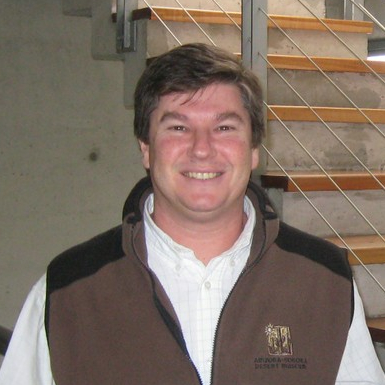
Dante Minniti
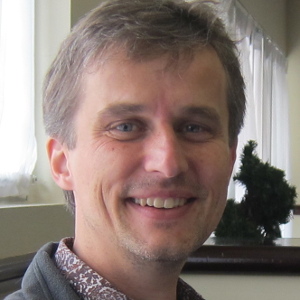
Knut Olsen
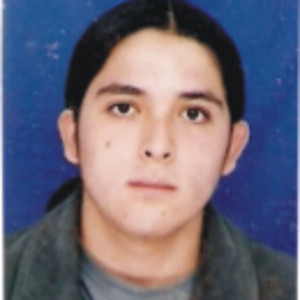
Hugo Camacho
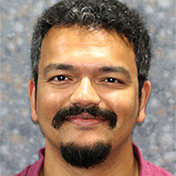
David Rosario
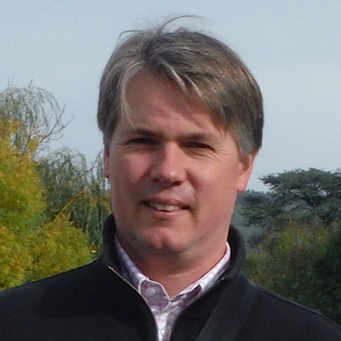
Mark G. Allen
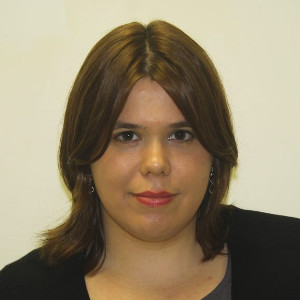
Meg Schwamb
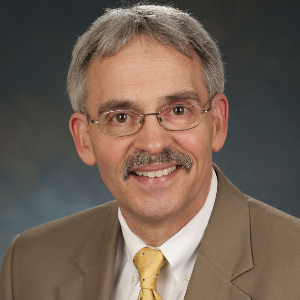
Bradley Peterson
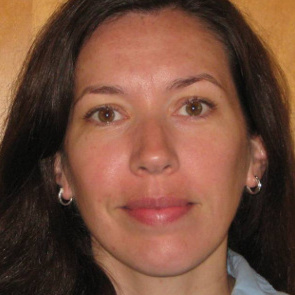
Stephanie Juneau
2017
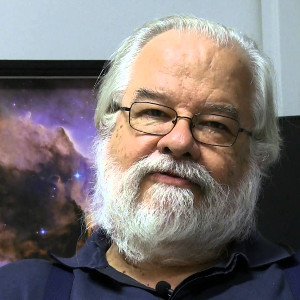
Roberto Vieira Martins
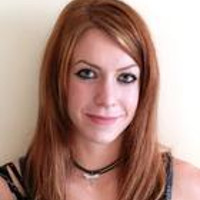
Antonella Palmese
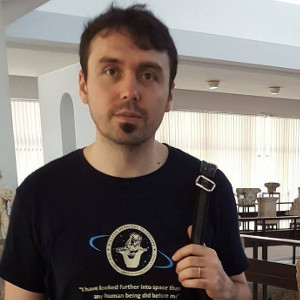
Marcel Popescu

Alexandre Refregier
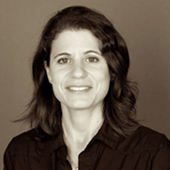
Rebecca Bernstein
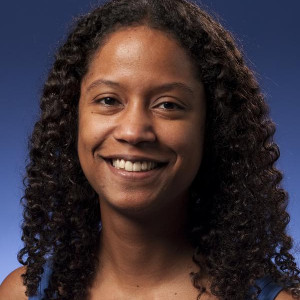
Marcelle Soares
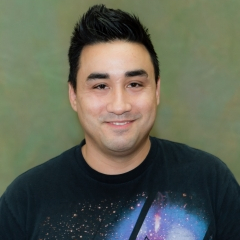
Johnny Greco
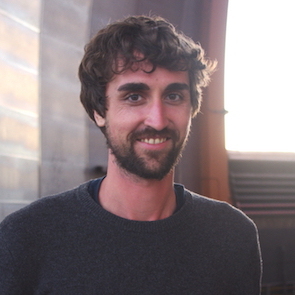
Daniel Gruen
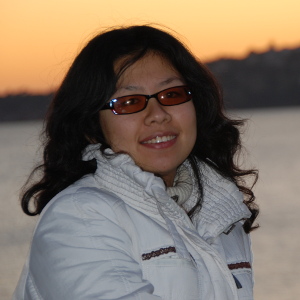
Ting Li
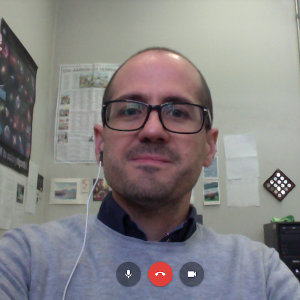
Alberto Molino
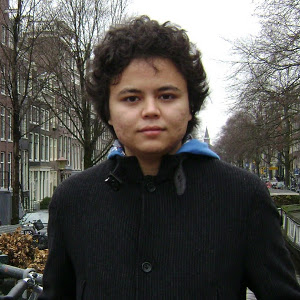
Michel Aguena
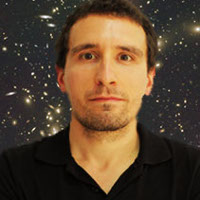
Pierluigi Cerulo
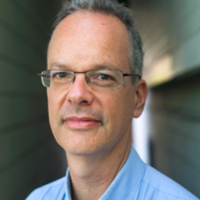
Rogério Rosenfeld
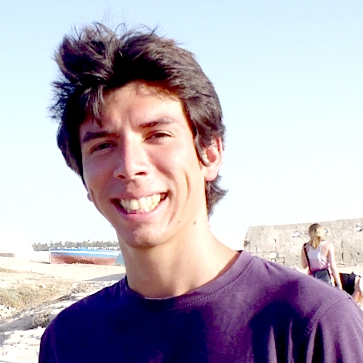
Julian Bautista
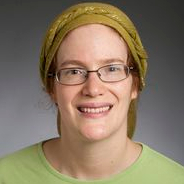
Rachel Mandelbaum
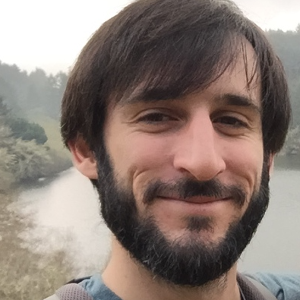
Joe deRose
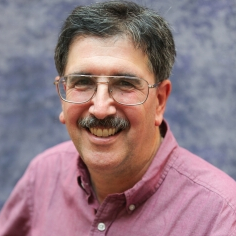
Michael Strauss

Bruno Sicardy
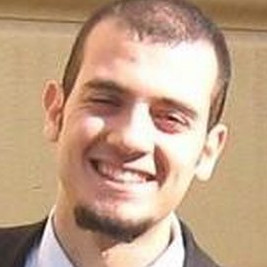
Antonino Troja
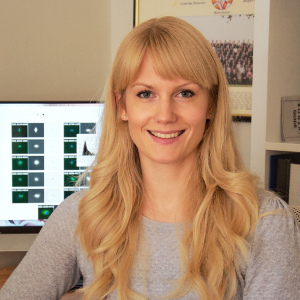
Dominika Wylezalek
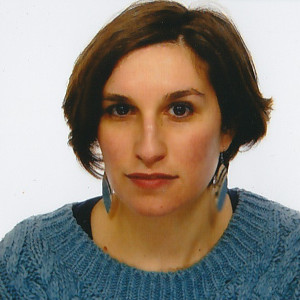
Helena Dominguez-Sanchez
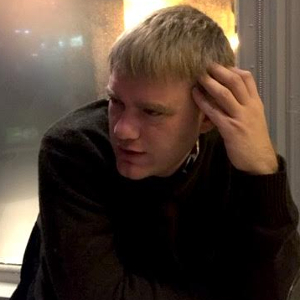
Eric Huff
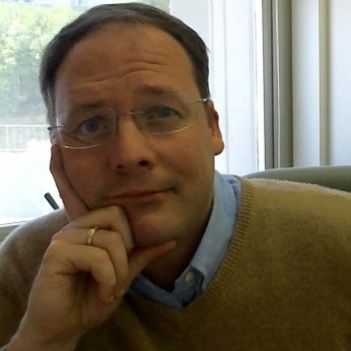
Peter Nugent
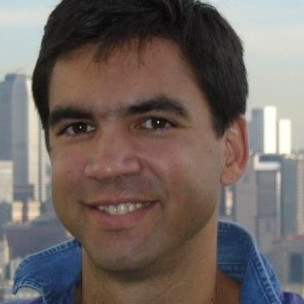
Ravi Sheth

Roberto de Propris
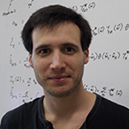
Fabien Lacasa
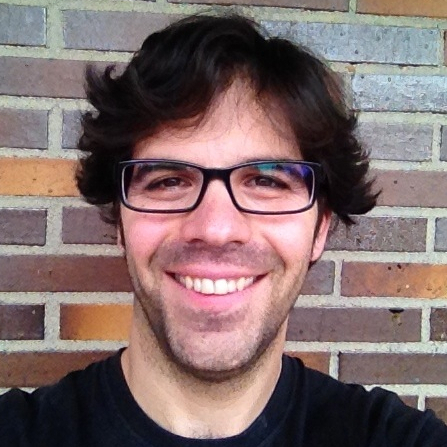
Bruno Merín
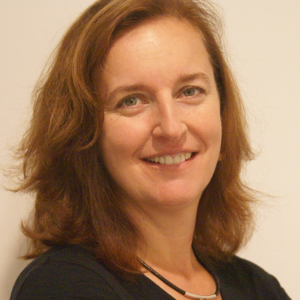
Ewa Deelman

Rossana Ruggeri
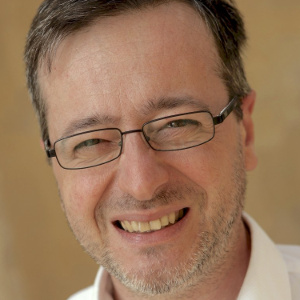
Paolo Tanga
2016
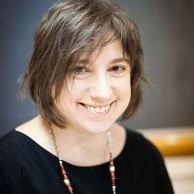
Frossie Economou
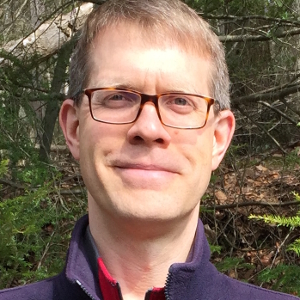
William Nielsen Brandt
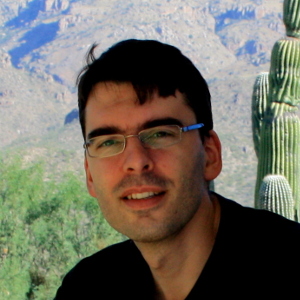
Mario Juric
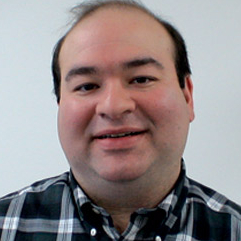
Jeff Newman
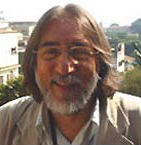
Luiz Nicolaci da Costa
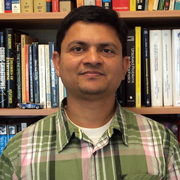
Ashish Mahabal
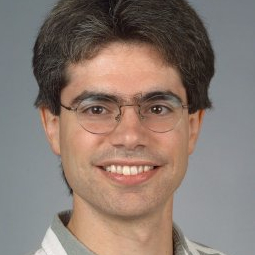
Tom Loredo
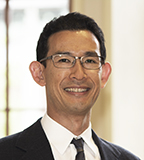
Masao Sako
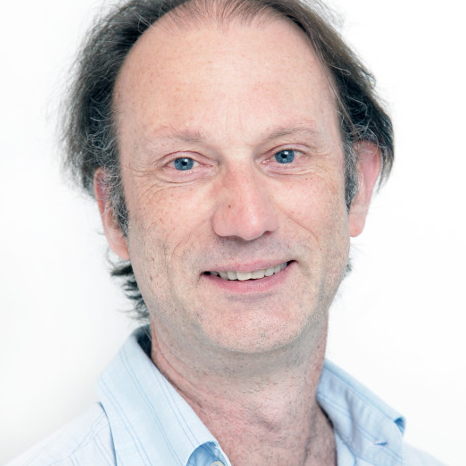
Koenraad Kuijken

Federica Bianco
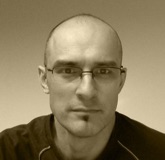
Ivan Minchev

Lucianne Walkowicz

Marc Huertas-Company
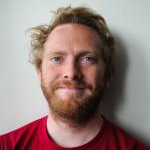
Alexander Mead
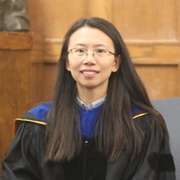
Yuanyuan Zhang
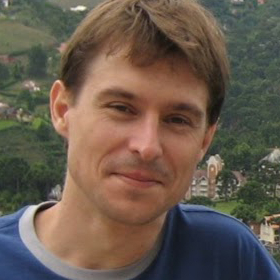
Angelo Fausti
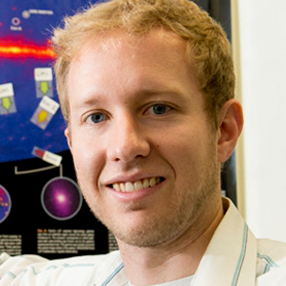
Alex Drlica-Wagner
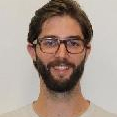
Eric Baxter

Edmond Cheung
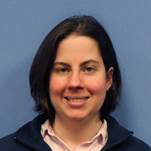
Lindsay Bleem
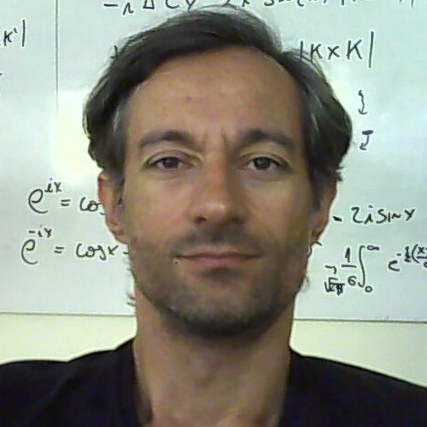
Adriano Pieres
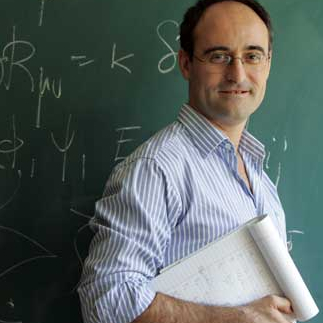
Juan Garcia-Bellido
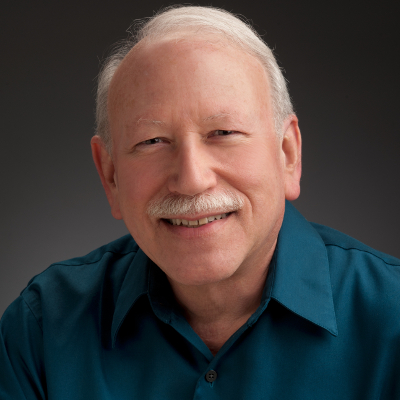
Joel Primack
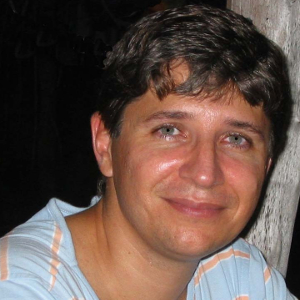
Francisco “Fubica” Vilar Brasileiro
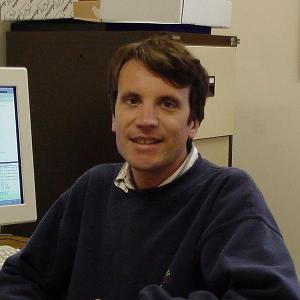
Jonathan Loveday
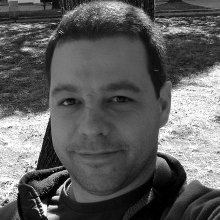
Fabricio Ferrari
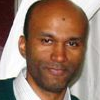
Roberto Souto

William Hartley
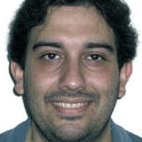
Filipe Abdalla
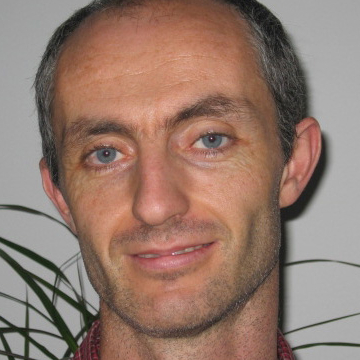
Francisco Castander
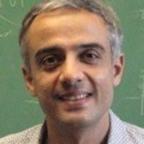
Bhuvnesh Jain
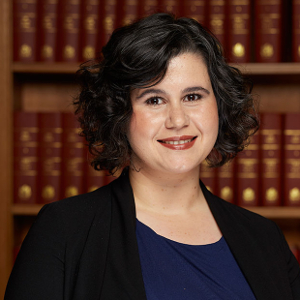
Rita Tojeiro
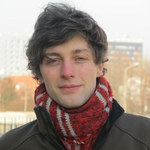
Friedrich Anders

Roy Maartens
2015
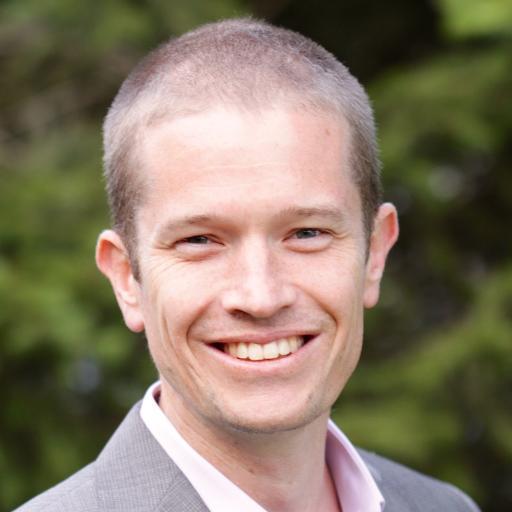
Jake VanderPlas
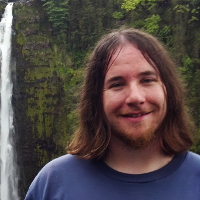
Erik Tollerud

Robin Ciardullo
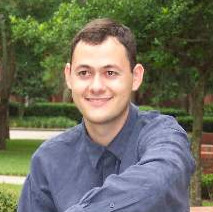
Anthony Gonzalez
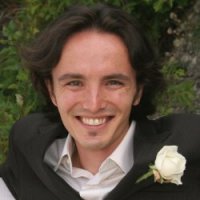
Dustin Lang
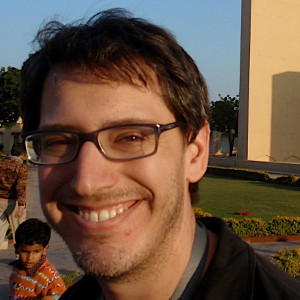
Jeremy Tinker
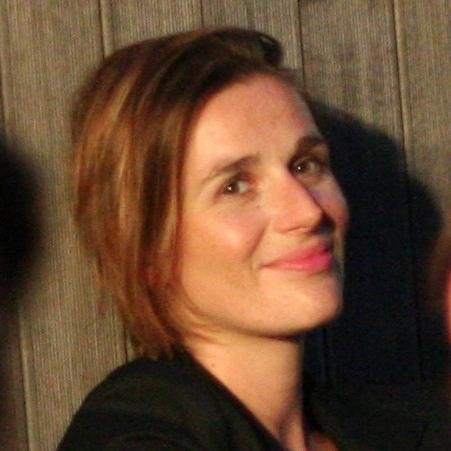
Sarah Kendrew
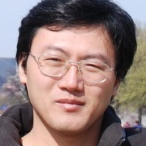
Zheng Zheng
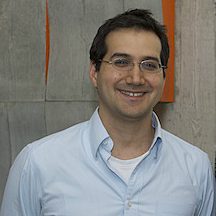
Adam Amara
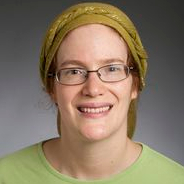
Rachel Mandelbaum
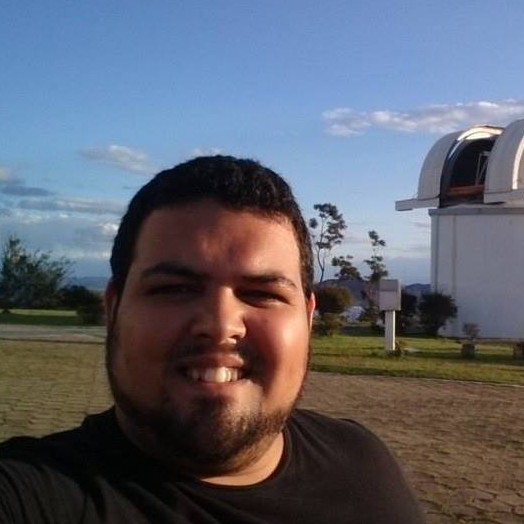
Alex de Oliveira
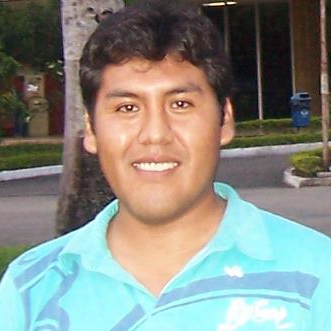
Elmer Luque
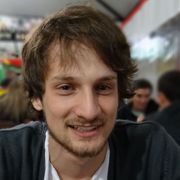
Helio Perottoni
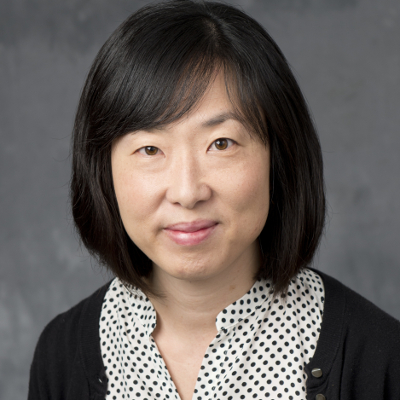
Kyoung-Soo Lee
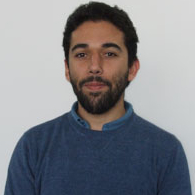
Francisco Förster Burón
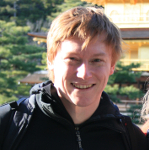
Tim Eifler
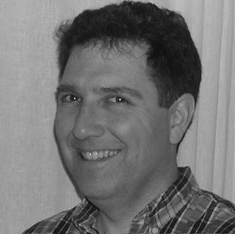
Gary Bernstein
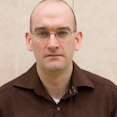
Henry McCracken
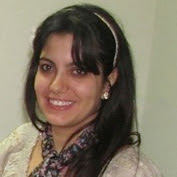
Flavia Sobreira
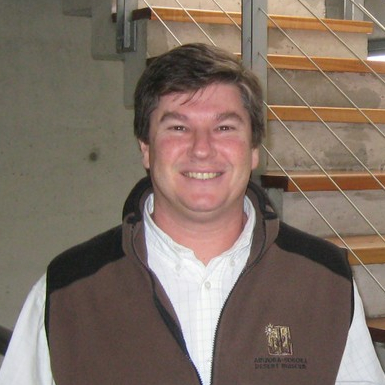
Dante Minniti
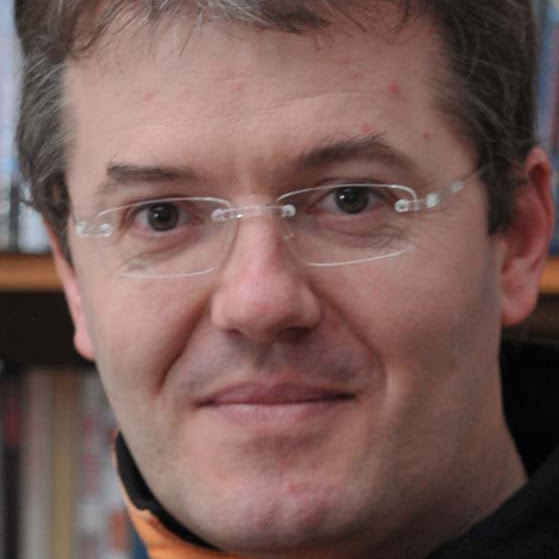
Emmanuel Bertin

Paolo Giommi
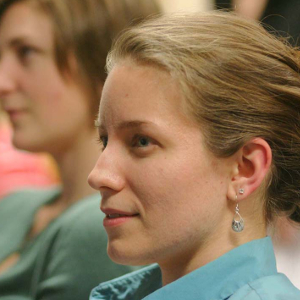
Gail Zasowski
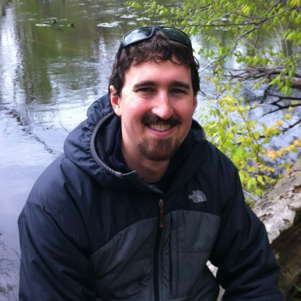
David Nidever Nidever
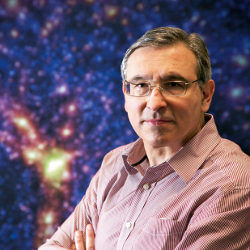
Carlos Frenk
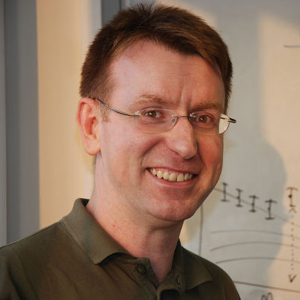
Bob Nichol
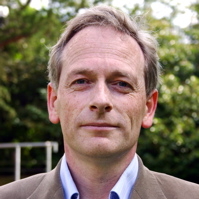
Richard McMahon
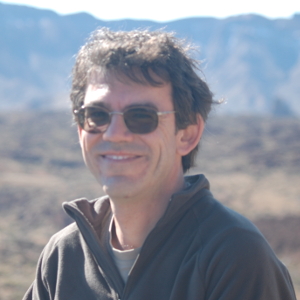
Alessandro Morbidelli
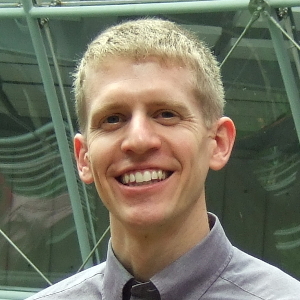
Eric Bellm

Christopher Bonnet
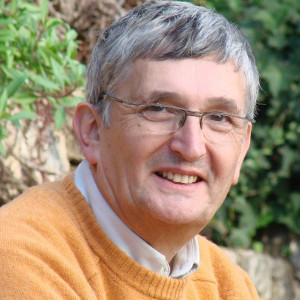
François Mignard
2014
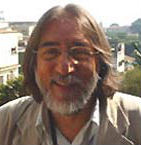
Luiz Nicolaci da Costa
Hendrik Hildebrandt
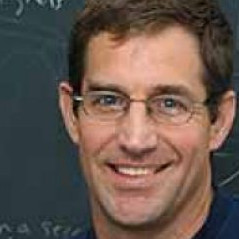
David Gerdes
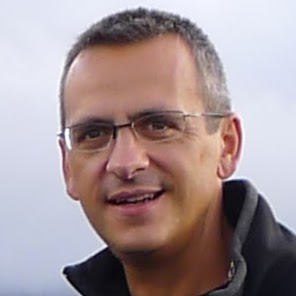
Stephane Arnouts
Ben Burningham
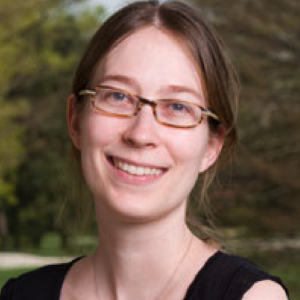
Beth Willman
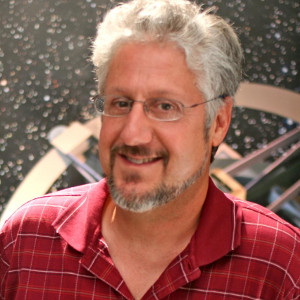
Jeffrey Kantor
Maria Teresa Crosta
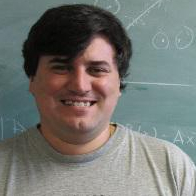
Eduardo Rozo
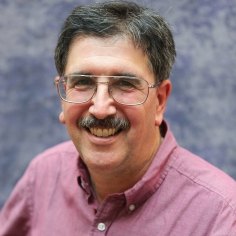
Michael Strauss

Stefano Borgani
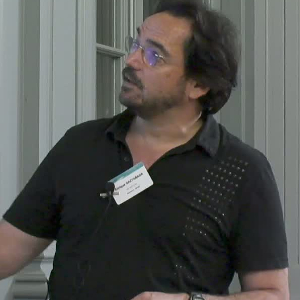
Enrique Gaztañaga
Basilio Santiago
Jo Bovy
Luciano Nicastro
Jeff Newman
Boris Leistedt
Jim Annis
Mario Mateo
Felipe Braga Ribas
Steven Kahn
Matias Carrasco Kind
Marla Geha
Jim Rich
Felipe Braga Ribas
Mario Juric
Roderik Overzier
Kevin Bundy
Patrick Petitjean
Ani Thakar
Daniel Eisenstein
Tsvi Piran
Daniel Thomas
David Weinberg
Nicolás G. Busca
2013
Martha Haynes
Luiz Nicolaci da Costa
Simon White
Markus Demleitner
Stephane Arnouts
Manda Banerji
Daniel Oliveira
Richard Kron
Jean-Paul Kneib
Stefan Müller
Flávia Sobreira
Nelson Pinto
Marcos Lima
Michael Blanton
Rogério Rosenfeld
Angelo Fausti
David Latham
Kathy Romer
Alex Kim
Scott Dodelson
August Evrard
Diego Capozzi
Sarah Bridle
Martin Crocce
Martin Groenewegen
Nikhil Padmanabhan
Keivan Stassum
Chris Miller
Ofer Lahav
Joe Zuntz
Fábio Porto
2012
Mauro Barbieri
Bruno Coelho
Daniel Thomas
Will Percival
David Gerdes
Alberto Krone-Martins
Eduardo Ogasawara
Michael Bucha
Carlos Cunha
Rodney Gomes
Roberto Cid Fernandes
Eduardo Bezerra
Thiago Gonçalves
Eduardo Balbinot
Karin Menendez
Rogério Rosenfeld
Antônio Guimarães
2011
Rogério Riffel
Flavia Sobreira
Alexandre Andrei
Gustavo Porto de Mello
Júlio Camargo
Letícia Dutra Ferreira
Thiago Gonçalves
Paulo Pellegrini
Luciano Casarni
Ricardo Ogando
Cristina Furlanetto
Monica Benjamin
Leo Girard
Rogério Rosenfeld
Cristina Chiappini
Helio Rocha-Pinto
Scheduled webinars 00
Past webinars 347
2024
002023
002022
002021
38


16/12 - 02:00 pm BRT
Richard Kron ( Fermilab )
News from the Dark Energy Survey
The Dark Energy Survey https://www.darkenergysurvey.org/, a major international effort to map the southern sky for cosmology, is actively producing scientific results in many areas of astrophysics. The DES data products are distinguished from other surveys by the combination of area of sky, depth, and photometric precision. The principal cosmological probes include measures of geometry from supernovae, the baryon acoustic oscillation feature, and counts of galaxy clusters, as well as measures of the growth of structure over cosmic time from galaxy correlations and from weak-lensing shear correlations. The Year 3 joint analysis has placed the tightest constraints on cosmological parameters for a survey of its kind and the complete Year 6 will follow. In addition, DES data are powerful for exploring structure within the halo of the Milky Way, such as discovering and characterizing ultra-faint dwarf galaxies and stellar streams. The time domain can be explored as well, especially within the special deep fields that were designed for discovery of supernovae. This talk will review the current status of the project and will outline some recent scientific results.



09/12 - 02:00 pm BRT
David Trilling ( Northern Arizona University )
SNAPS: The Solar System Notification Alert Processing System
The Vera C. Rubin Observatory is under construction in Chile. When completed, in 2024, it will be used to carry out the Legacy Survey of Space and Time (LSST), in which the entire night sky will be observed every few nights, for ten years. The LSST data set will revolutionize every field of astronomy because of both the scale and uniformity of the measurements. As an example, LSST will observe more than 5 million asteroids, allowing us a rich and detailed probe of the evolution of our Solar System. The LSST data stream will be so large that traditional methods of handling the data will not be successful - new, computationally efficient approaches are required. Our team is developing the Solar System Notification Alert Processing System (SNAPS), which is designed to ingest measurements of asteroids and derive their physical properties. We identify outliers - asteroids whose properties are unusual - both in real-time and in daytime processing. We are building a public interface to our database and results. In this talk I will present the overall structure and performance of SNAPS, provide some interesting examples, and talk about the science that we are presently doing, using the data stream from the Zwicky Transient Facility as a testbed.



02/12 - 02:00 pm BRT
Troy Raen ( University of Pittsburgh )
Building a 100% cloud-based alert broker: Pitt-Google
The Pitt-Google collaboration is developing a 100% Google Cloud-based alert broker for Rubin Observatory’s upcoming LSST. In this talk, I will discuss our pipeline model and the compute & data storage/delivery solutions we employ. These are significantly different from those of other brokers, and I will discuss the benefits and tradeoffs. Our pipeline uses an event-driven microservices model. It is highly modular and requires almost no infrastructure management. It runs predominantly on services like Cloud Functions and Cloud Run, which are triggered by individual alerts/messages and scale automatically. For data storage and delivery, we use BigQuery, Pub/Sub, and Cloud Storage. BigQuery is a data warehouse optimized for big-data analytics, and is accessible via standard SQL and (optionally) TAP/ADQL. Pub/Sub is a streaming message service, similar in function to Apache Kafka but requiring no data management. Each module in our pipeline publishes a stream. All of our data resources are public. Users can compute next to the data and take advantage of Google Cloud services, or take the data out of the Cloud via Google’s APIs. I will discuss these topics with an eye toward LIneA’s work on becoming an IDAC for LSST.



25/11 - 11:00 am BRT
Francisco Förster ( Universidad de Chile )
The universe in a stream: challenges and progress of the ALeRCE broker



18/11 - 11:00 am BRT
Andreu Font-Ribera ( Universitat de Barcelona )
Studying the expansion of the Universe with quasar spectra from the Dark Energy Spectroscopic Instrument
From 2009 to 2019, the Baryon Oscillation Spectroscopic Survey (BOSS) and its extension eBOSS used the SDSS telescope to obtain precise redshifts for millions of galaxies and quasars. From the distribution of these objects, we were able to get very accurate measurements of the Baryon Acoustic Oscillations (BAO) scale from redshift 0.2 to redshift 1.5. At the same time, BOSS and eBOSS obtained optical spectra of over 210 000 high redshift quasars (z>2.15) with the goal of detecting the BAO feature in the clustering of the intergalactic medium, using a phenomenon known as the Lyman alpha forest (LyaF). In this talk, I will overview the final results from the LyaF dataset of eBOSS, including a 1.5% measurement of the BAO scale at z=2.33 presented in du Mas des Bourboux et al. (2020). I will also give an update on the status of the Dark Energy Spectroscopic Instrument (DESI). In the next few years, DESI will increase the current spectroscopic dataset by an order of magnitude. It will provide an exquisite measurement of the expansion over cosmic time, while at the same time addressing other interesting questions: the sum of the mass of the neutrino species, properties of dark matter particles, tests of general relativity and the shape of the primordial power spectrum of density fluctuations.



11/11 - 02:00 pm BRT
Nina Hernitschek ( Vanderbilt University )
Rubin Observatory Community Brokers - real-time astronomical alert processing
Nowadays large-scale astronomical surveys enable us to see the universe in a much more detailed, and in particular different way than before. In the era of such large-scale surveys, methods to handle investigate these data, and especially to classify sources, become more and more important. The LSST survey, carried out by the Rubin Observatory, will distribute its data in a new way: LSST will produce a nightly so-called stream of public alerts that will disseminate new information about transient, variable, and moving objects within 60 seconds of readout. Software systems called \'community brokers\' will process the LSST alert stream, add scientific value by such as cross-matching with archival catalogs and machine-learning based identification of objects, thus providing science users with the ability to identify targets of interest and trigger follow-up observations in a timely manner. In this webinar I will give an overview of LSST community brokers in general, and specifically describe the \'Point of Interest\' broker developed by a small team at Vanderbilt University.



04/11 - 02:00 pm BRT
Dragan Huterer ( University of Michigan )
Probing the Universe with Dark Energy Survey: a Holistic View
I will outline the recent developments in mapping out the expansion rate of the universe and the growth of density fluctuations in order to better understand dark energy and, eventually, identify the physics responsible for universe\\\'s accelerated expansion. Then I will present a holistic overview of the recent Year-3 results from Dark Energy Survey, currently the largest experiment mapping the large-scale structure in order to probe dark matter and dark energy.



28/10 - 06:00 pm BRT
Anais Möller ( Swinburne University of Technology )
Fink broker enabling time-domain science with Rubin Observatory
In this decade, Vera C. Rubin Observatory will obtain high-resolution optical images of the Southern Sky at unprecedented depths. Rubin public alert stream will communicate the detection of millions of potential transient objects every night. The key to use this stream is to be able to select promising transients and to automatically connect them to teams and observing facilities. I will introduce Fink, a broker developed on high-end technology and designed for fast and efficient analysis of big data streams. It has being chosen to process the full Rubin optical time-domain data stream. Fink enables the selection of promising transients by providing preliminary classifications based on machine learning algorithms and combining information from catalogues and surveys. Within minutes, Fink is able to communicate these candidates to teams and follow-up facilities. We are already deployed using ZTF data and have ongoing collaborations in a wide range of science including supernovae and multi-wavelength/messenger events as kilonovae and Gamma Ray Burst afterglows.



21/10 - 02:00 pm BRT
Thomas Matheson ( NOAO )
ANTARES, An Astronomical Time-Domain Event Broker
ANTARES is a time-domain event broker developed and operated by the NSF\\\'s National Optical-Infrared Astronomy Research Laboratory. It provides a platform for community-driven processing of alerts. After ingesting alerts, the ANTARES system cross matches them with extant astronomical catalogs and annotates them with additional contextual information, including any past history of alerts at that location. The ANTARES processing pipeline then applies filters, which can be user-supplied, to sort and classify alerts based on features, both from the alert itself and the contextual information. These sorted subsets are then distributed to interested astronomers. I will provide an overview of the system including its performance in processing the public Zwicky Transient Facility alert stream, our scaling tests that will ensure we are ready for the Vera Rubin Observatory\\\'s Legacy Survey of Space and Time, and demonstrate how anyone can write a filter and begin getting personalized alerts now.



14/10 - 11:00 am BRT
Héctor Gil-Marín ( Universitat de Barcelona )
Cosmology from galaxy redshift surveys: current results and future techniques
In the first part of this talk I will review the state-of-the-art techniques used for the analysis of the results of the BOSS and eBOSS galaxy survey maps. In the standard approach galaxy clustering measurements from spectroscopic surveys are compressed into baryon acoustic oscillations (BAO) and redshift space distortions (RSD) measurements, which in turn can be compared to cosmological models. I will present the main cosmological results of BOSS-eBOSS which represent the state-of-the art cosmological measurements from galaxy spectroscopic surveys. In the second part of the talk I will introduce the on-going redshift survey DESI, and will present some novel techniques that will be used in this up-coming dataset to make the cosmological analysis blind and to extract further extra information beyond BAO and RSD signals.



07/10 - 11:00 am BRT
Robert Morgan ( University of Wisconsin-Madison )
Cosmological Spectacles: Novel Deep Learning Detection Strategies for Strongly Lensed Transients
The current tension on the measured value of the expansion rate of the Universe today (H0) has pushed the cosmological community to pursue more measurement techniques and larger datasets. One such technique, the characterization of systems with gravitationally lensed supernovae, is of particular interest in the Rubin Observatory era for two reasons: (1) thousands of these systems will be detectable by the Rubin Observatory when only a handful exist in current datasets, and (2) each identified system offers an independent measurement of H0, enabling high precision over the 10-year Legacy Survey of Space and Time. In this talk, I present a novel deep learning architecture for lensed supernovae detection that identifies more lensed supernovae (90 percent of the expected population) than any other previously proposed method.



30/09 - 10:00 am BRT
Barak Zackay ( Weizmann Institute of Science )
Exact astronomical image processing
In this talk, I would explain from basic principles the theory of detecting point sources in ensembles of astronomical images (Zackay & Ofek 2017 a, b) and the theory of \\\'proper image subtraction\\\' (also known as ZOGY) (Zackay, Ofek & Gal-Yam 2017). Then, time permitting, I would explain future efforts to extend these operations to undersampled images in preparation for the ULTRASAT space mission, led by the Weizmann institute of science.



16/09 - 11:00 am BRT
Tassia Ferreira ( UFES )
Cosmic shear covariance matrix comparison
Covariance matrices are among the most difficult pieces of end-to-end cosmological analyses. Advancements in cosmological surveys lead to larger data vectors and, consequently, increasingly complex covariance matrices, whose number of elements grows as the square of the size of the data vector. The most certain and forward way of comparing these matrices is in terms of their ability to reproduce cosmology, that is, by performing a full Bayesian analysis. This approach, however, can be very time consuming and computationally demanding. Using the concept and construction of compression schemes, which have become increasingly popular, we propose a fast and reliable way of comparing covariance matrices via a fast Monte Carlo simulation. In this talk, I will give an overview of cosmic shear, before moving on to the topic of covariance matrices. I will then motivate the use of compression schemes and show that they can be powerful tools for comparing covariance matrices. I will conclude by showing some of the exciting results obtained with our python algorithm.



09/09 - 02:00 pm BRT
Claudia Bauzer Medeiros ( Unicamp )
O ecossistema de Ciencia Aberta – compartilhando universos em mini, macro, mega e exa escalas.
A Ciência Aberta é um movimento mundial cujo principal objetivo é permitir que pesquisadores em qualquer lugar do mundo possam colaborar por meio do compartilhamento dos seus resultados de pesquisa - como por exemplo dados, software, modelos ou publicações. Os principais valores associados são inclusão, transparência, e pesquisa confiável e reprodutível. A astronomia é uma das áreas em que este movimento se destaca, pela ampla publicação de catálogos, pelo compartilhamento de dispositivos e software, e pelas publicações envolvendo uma grande quantidade de pesquisadores do mundo inteiro. O que falta fazer? Como outras áreas do conhecimento vêm tratando do assunto? Práticas de Ciência Aberta estão se tornando obrigatórias em um grande número de países e, inclusive, exigidas para submissão de projetos a agências de fomento de todo mundo. A palestra vai apresentar o movimento de Ciência Aberto a partir das diretrizes de 2021 da Unesco, e dar exemplos de como estão sendo seguidas, incluindo obstáculos para sua realização plena.



26/08 - 11:00 am BRT
Edison Cesar Santos ( UFES )
Charged black hole and radiating solutions in entangled relativity
The main goal of this seminar is to present a black hole solution in a new theory of gravity, which we call Entangled Gravity. In this theory, spacetime itself cannot exist without the presence of matter. To motivate the study of new theories of gravity, I will start by giving a broad review of Einstein\\\\\\\'s general relativity (GR) and recall some of its successes and failures. As we impose modifications to GR, Entangled Gravity will naturally appear as an adequate alternative to explain the Universe. In the context of this new theory, a black hole solution will be proposed which is indistinguishable from the usual Schwarzschild black hole solution from GR.



12/08 - 11:00 am BRT
Hugo Camacho ( UNESP )
Cosmological results from the first three years of observations of the Dark Energy Survey - an overview
The Dark Energy Survey (DES) has recently released cosmological analyses from its first three years (DESY3) of observations, imaging 5000 square degrees in the southern sky. We review the novel advances in the methodology required to extract and combine galaxy clustering and weak lensing information in the DESY3 data. We present some of the main results, focusing on the combination of three two-point correlation functions, the so-called 3×2pt, and the BAO feature detection analyses, and discuss its cosmological implications.



05/08 - 11:00 am BRT
Bruno Morgado ( Observatório Nacional )
An in-depth view of Centaur (10199) Chariklo and its rings from stellar occultations
The Centaur (10199) Chariklo is a small body moving in an elliptical orbit between Saturn and Uranus. In 2013, Braga-Ribas et al. (2014) discovered two rings orbiting this Centaur using stellar occultation, and this was the first time that rings were observed around a small body. In this talk, I will present the obtained results from stellar occultations by Chariklo observed between 2013 and 2020. I will present the global shape of Chariklo\\\\\\\\\\\\\\\'s rings system and the 3D shape of Chariklo\\\\\\\\\\\\\\\'s main body. The parameters obtained in this work should be useful for constraining dynamical models of Chariklo and its rings and provide new insights into the formation and evolution of this system.



29/07 - 11:00 am BRT
Jacques Lepine ( Universidade de São Paulo )
The role of the co-rotation resonance in the Galactic disk and its influence on the Sun and stars of the Solar neighborhood



22/07 - 11:00 am BRT
Carlos Bengaly ( (Observatório Nacional) )
Observational tests of the fundamental hypothesis of Cosmology
The standard model of Cosmology (SCM) consists on the LCDM model, which is dominated by cold dark matter and Cosmological Constant. Although this model provides the best description of cosmological observation thus far, the nature of these two components remain unveiled. Therefore, there is an urge to develop models to explain them, but on top of that, we need to put the fundamental hypotheses underlying the SCM under scrutiny. After all, statistically significant evidence of departure of these hypotheses may lead to complete reformulation of the SCM. In this talk, I present some observational tests I carried out with this goal. I will talk about some observational tests of the Cosmological Principle - namely, the assumption of large-scale homogeneity and isotropy of the Universe - using a variety of cosmological data. In addition, I will show results obtained by probing the validity of two fundamental assumptions which these data relies upon: the constancy of the absolute magnitude of Type Ia Supernovae, and the current temperature of the CMB.



15/07 - 11:00 am BRT
Davide Perna ( INAF Rome Astronomical Observatory )
Near-Earth Asteroids: Risks and Opportunities
The proximity of near-Earth asteroids (NEAs) allows us to investigate the physical properties of small bodies down to the decameter-scale. A dedicated space mission to such small NEAs will be key to shed light on accretion mechanisms that took place in the protoplanetary disk. Extended ground-based observations will be also fundamental to fully characterize the physical diversity of the NEA population, whose discovery rate is exponentially growing in recent years. Besides its relevance for our understanding of the solar system and planetary science, NEA investigation is also essential to assess the potential exploitation of the asteroidal mineral resources in the near future, as well as to increase our capacity of mitigating the asteroid threat of collision with the Earth. I will present and discuss some recent results and future perspectives related to the science of NEAs, with a particular focus on small-sized objects.



08/07 - 11:00 am BRT
Denny Lee ( Databricks )
Bringing Reliability to your Data Lake with Apache Spark and Delta Lake
Apache Spark has become the de-facto open-source standard for big data processing for its ease of use and performance. The open-source Delta Lake project improves Spark’s data reliability, with new capabilities like ACID transactions, Schema Enforcement, and Time Travel. This helps to ensure that data lakes and data pipelines can deliver high-quality and reliable data to downstream data teams for successful data analytics and machine learning projects. Join us to learn how Apache Spark 3.0 and Delta Lake enhance Data Lake reliability.



01/07 - 02:00 pm BRT
Wagner Corradi ( Universidade Federal de Minas Gerais / LNA )
Impacto da ciência realizada com os telescópios e instrumentos gerenciados pelo LNA
O Laboratório Nacional de Astrofísica (LNA) é a Unidade de Pesquisa do Ministério de Ciência, Tecnologia e Inovação (MCTI) responsável por planejar, desenvolver, promover, operar e coordenar os meios e a infraestrutura para fomentar, de forma cooperada, a Astronomia Observacional Brasileira. O LNA possui a importante tarefa de gerenciar o Observatório do Pico dos Dias (OPD) e a participação brasileira nos observatórios internacionais Gemini (Norte, no Havaí e Sul, no Chile) e SOAR, no Chile, além de outras iniciativas como o PanEOS, LSST e LLAMA, por exemplo. Além disso, participa ativamente na concepção e construção de novos instrumentos astronômicos e sistemas periféricos. Pretendemos apresentar os avanços na instrumentação e o impacto da ciência realizada com os telescópios gerenciados pelo LNA, a partir de uma perspectiva histórica, nesses 35 anos de sua existência.



24/06 - 09:00 am BRT
Dalya Baron ( Tel Aviv University )
Machine learning in astronomy: past, present, and future
Machine Learning and Deep Learning have revolutionized many domains, and have sparked a burst of interest in astronomy as well. Astronomical datasets, being large, rich, and consisting of the beautifully complex ingredients of our Universe, seem to offer the perfect testbed for such tools. Past, ongoing, and future surveys have provided or are expected to provide multi-color and multi-temporal observations of hundreds of millions of stars and galaxies in our Universe. The application of Machine Learning tools to these datasets may offer new and exciting opportunities, but it also raises several questions. Will Machine Learning revolutionize the field of astronomy as well? Will it have a dramatic impact on our data processing pipelines, on the models we deduce from the data, or on the types of scientific questions that we ask? In this talk I will review different types of Machine Learning algorithms and will present some example applications of these tools to astronomical datasets. I will describe the current state of the field, focusing on the challenges we face. I will finish by proposing an approach that might help us harness the full potential of these tools in the future.



10/06 - 02:00 pm BRT
Robert Nikutta ( NOIRLab )
Astro Data Lab - An open-access and open-data science platform
The Astro Data Lab (https://datalab.noirlab.edu), or Data Lab for short, is an astronomical science platform developed at NOIRLab. It is open and free to all who are interested in astronomy, data science, and education efforts. Launched 4 years ago to enable remote access and analysis of survey data products generated by NOAO\\\\\\\\\\\\\\\\\\\\\\\\\\\\\\\\\\\\\\\\\\\\\\\\\\\\\\\\\\\\\\\'s telescopes, such as the Dark Energy Survey, Data Lab now serves almost 100 TB of catalog data from all major NOIRLab-operated facilities, plus high-value external datasets (e.g. Gaia, unWISE/AllWISE, SDSS, and others). It also provides access to over 2 PB of images. As a science platform Data Lab combines big data holdings with a number of very useful data services, and with the powerful idea of remote analysis through a Jupyter notebook server. Data Lab user accounts come with a generous allocation of remote storage for files and personal databases. In this seminar I will introduce the concepts that underlie a science platform, and highlight the data services Data Lab is able to offer thanks to the co-location of big data and compute capacities. I will then discuss some of our current new developments, for instance to serve data products from massively-multiplexed spectroscopic surveys such as SDSS and DESI. Finally I would also like to discuss with everybody some of the challenges and pportunities for making science platforms more unified in terms of user experience, and more interoperable from the operators\\\\\\\\\\\\\\\\\\\\\\\\\\\\\\\\\\\\\\\\\\\\\\\\\\\\\\\\\\\\\\\' perspective. Time permitting, I can show a brief live demo of Data Lab.



03/06 - 12:00 am BRT
Public Holiday ( Corpus Christi )
No event scheduled
On that day there will be no LIneA webinar. Corpus Christi is a public holiday in some countries, including Brazil.



27/05 - 11:00 am BRT
Willian Vieira de Abreu ( Universidade Federal do Rio de Janeiro )
Divulgação científica na astronomia: experiências e perspectivas
A Astronomia e ciências afins despertam o interesse da população, oferecendo um grande potencial de estimular jovens a ingressarem em carreiras científicas e despertarem o interesse por temáticas relacionadas. Dentro desse contexto, a divulgação científica pode exercer um importante e necessário papel de impulsionadora de novos talentos e de facilitadora entre ciência e sociedade, podendo inclusive possibilitar um primeiro contato com as ferramentas técnicas da área. Mas o que os jovens pensam sobre a ciência? E os comunicadores da ciência: o que pensam e pesquisam? Discutiremos essas e outras questões a partir de estudos acadêmicos e de dados do Instituto Nacional de Comunicação Pública da Ciência (INCT-CPCT), bem como de pesquisas nacionais e internacionais.



20/05 - 11:00 am BRT
Thaisa Storchi Bergmann ( Universidade Federal do Rio Grande do Sul )
The relation between Supermassive Black Holes and their host galaxies probed by the MaNGA-SDSS survey
Supermassive Black Holes (SMBHs, masses of 106 – 109 MSun) inhabit the nucleus of most galaxies in the Universe. Although not even light can escape their event horizon, when capturing mass, they become the most efficient energy generators in the Universe via the emission of radiation, winds and jets by an accretion disk that surrounds them in active galactic nuclei (AGN). These are the so-called AGN feedback processes required by galaxy evolution models in order to reproduce the mass distribution of galaxies in the Universe. Nevertheless, the actual processes involved are not yet well constrained by observations. In this talk, I will discuss studies that provide constraints to these processes via MaNGA-SDSS observations of a sample of AGN and a matched control sample of non-active galaxies. These observations have been used to investigate answers to two of the most important questions on the relation between SMBHs and their host galaxies: (I) What are the necessary conditions for triggering/maintaining AGN in galaxies? (II) Which is the impact of the nuclear activity on the host galaxy and its environment?



13/05 - 11:00 am BRT
Francesco Valentino ( University of Copenhagen )
The life and death of massive galaxies
The majority of the stars in the local Universe belong to massive, red, spheroidal, old galaxies that died several billion years ago, ceasing their active formation of new stars. In our current view, these galaxies experienced an intense burst of growth immediately followed by a sudden death early in the history of the Universe, so that we routinely observe a numerous population of such dead cosmic giants already in place 10 Gyr ago at z~2 comfortably reproduced by many galaxy formation models and simulations. However, the coherent scenario that we have been building during the last 15 years has been recently shaken by the discovery of the existence of massive dead galaxies already at z~4, only 1.5 Gyr after the Big Bang. How is it possible to assemble 100 billion Suns in such a short time, given the expected theoretical limits on the sustainable star formation rate? What can we learn about such a dramatic production of stars? What are the progenitors of these quiescent galaxies at z>4? And why do these cosmic giants die so early in the history of the Universe? Here I will present the results of a spectroscopic campaign targeting massive quiescent galaxies at z~4. These include a compact system at z=4.01 with a measured stellar velocity dispersion fully consistent with z~2 objects, showing that quiescent galaxies can be remarkably mature also from a dynamical standpoint. The absence of nebular emission lines and the lack of far-infrared detections confirm a suppressed star formation. From the joint modeling of the spectra and the SEDs, we derive stellar masses of log(Mstar/Msun)~11, placing these galaxies >1-2 dex below the main sequence. Such modeling suggests that these sources experienced a strong (SFR~1200-3500 Msun/yr) and short (~50 Myr) burst of star formation in their past, properties reminiscent of the population of sub-mm galaxies (SMGs) generally indicated as candidate progenitors. We thus compare the comoving number densities and the expected properties of the progenitors of our and other samples in the literature with observations of z>4 SMGs. We find a fair agreement between these two populations only for the deepest sub-mm surveys detecting the most extreme starbursts, but also more normal galaxies. Exploring the Illustris-TNG simulation, we do retrieve populations of quiescent galaxies at z~3-3.5 with number densities and properties in rough agreement with the observations, but in increasing tension at higher redshifts. We find that not all the progenitors of z~4 quiescent galaxies in the simulation shine as bright SMGs in their past and, conversely, not all bright SMGs quench by z~3, supporting the observational evidence and suggesting the existence of different paths to form massive galaxies in the early Universe.



07/05 - 03:00 pm BRT
Michael Blanton ( University of New York )
Galaxies Near and Far with the Sloan Digital Sky Survey
I will discuss the recent work of the Sloan Digital Sky Survey on cosmology and galaxy evolution, based on the observations from its fourth phase, which completed its six year program on the morning of January 21, 2021. This spectroscopic survey mapped the Milky Way galaxy, ten thousand nearby galaxies, and finished the largest three-dimensional map of the universe to date. I will describe a sampling of what we have learned, focusing on: tests of the \\\\\\\"simplest\\\\\\\" model of the universe\\\\\\\'s expansion (which seems to be the right one); observations of star-formation and the flow of gas within galaxies; and on the formation history and migration of stars within our own galaxy.



29/04 - 02:00 pm BRT
Samuel Schmidt ( University of California Davis )
Rubin Obs. Dark Energy Science Collaboration Photometric Redshifts: Challenges and Opportunities
In the era of large area, deep imaging surveys the ability to follow up even a small fraction of objects with spectroscopy is prohibitively expensive. As a result, these surveys will need to rely on other means to determine the distance to objects and turn the observed 2D sky into a fully three-dimensional map of the Universe using only the limited information available from broad band fluxes. In this talk I will discuss the challenges inherent in estimating redshifts for cosmology measurements in the Rubin Observatory Dark Energy Science Collaboration (DESC), which has extremely stringent requirements on knowledge of both individual galaxy redshifts and the redshift distribution of ensemble collections. I will discuss the end-to-end photometric redshift pipeline being developed by DESC, from simulated catalogs, to template and machine learning-based estimation algorithms, to systematic calibrations, that will enable the cutting edge science of the coming decade.



22/04 - 11:00 am BRT
Allan Alves & Denise Köche ( Agência Propósito )
O que pensa e o que busca a comunidade científica na chegada do LSST
No webinar, a empresa de comunicação Propósito dividirá aprendizados sobre a pesquisa e os workshops realizados com a comunidade científica junto ao LIneA durante o mês de Março de 2021, com as percepções em relação aos impactos e expectativas do uso de big data na astronomia brasileira, assim como as barreiras e expectativas para o futuro.



15/04 - 11:00 am BRT
LIneA Workshop ( LIneA )
On the Future of Data Centers and eScience Institutes: Celebrating LIneA’s 10th Anniversary
This workshop will bring together representatives of some of the more important data centers, eScience institutes and IT companies to discuss current solutions and new technological trends as data volumes from modern experiments such as LSST, Euclid and SKA continue to grow. The workshop will take place remotely April 13-15, 2021. Inquiries can be sent to workshop2021@linea.gov.br.



08/04 - 11:00 am BRT
Santiago Àvila ( Universidad Autónoma de Madrid )
The effect of the galaxy-halo connection on galaxy clustering in the advent of stage-IV experiments
Studies of the Large-Scale Structure via galaxy clustering is a fundamental observational pillar of the standard model of cosmology, LCDM. As we enter the era of sub-percent precision cosmology, we need to understand very well the connection between the dark matter halos and the observed galaxies ir order to obtain unbiased cosmological parameters. In this talk I will analyse all the assumptions that enter into the Halo Occupation Distribution (HOD) model to understand how they can affect the clustering of galaxies, with a focus on Emission Line Galaxies (ELGs), key to the next generation of experiments. I will study the shape of the mean halo occupation curves, the probability distribution function of the satellite galaxies and the position and velocity profiles of the satellite galaxies around the halo centers. Later, I will fit the HOD model to ELG data from the completed extended Baryonic Oscillation Spectroscopic Survey (eBOSS) under different assumptions. Finally, I will show what effect the galaxy-halo connection could have on cosmological constraints and will discuss its relevance in the context of future surveys such as Euclid or DESI.



01/04 - 11:00 am BRT
Tilman Troester ( Royal Observatory, Edinburgh )
Cosmology with the Kilo-Degree Survey
I will present the recent cosmological analyses of weak gravitational lensing observations from the Kilo-Degree Survey (KiDS-1000), with redshift-space galaxy clustering observations from the Baryon Oscillation Spectroscopic Survey (BOSS), and galaxy-galaxy lensing observations from the overlap between KiDS-1000, BOSS and the spectroscopic 2-degree Field Lensing Survey (2dFLenS). I will summarise the methodology and discuss the cosmological constraints, both within the the standard model of cosmology of a spatially flat Universe filled with cold dark matter and dark energy, and several extensions thereof. These results are then put in the context of the S8 tension: the disagreement between measurements of the cosmic microwave background by Planck and late-time analyses, such as ours, on how strongly matter in the Universe is clustered.



25/03 - 04:00 pm BRT
David Latham ( Harvard-Smithsonian Center for Astrophysics )
TESS - Transiting Exoplanet Survey Satellite
NASA’s Transiting Exoplanet Survey Satellite finished its primary mission and started its first extended mission on July Fourth, 2020. I will trace the history of the mission and the lessons we learned from Kepler and K2, ending with some of the recent highlights.



18/03 - 11:00 am BRT
Eduardo Janot Pacheco ( Universidade São Paulo )
The PLATO mission: Brazil chasing exoplanets
PLATO is a medium-class mission of ESA’s Cosmic Vision Program. It will address fundamental questions such as: How do planetary systems form and evolve? Are there other systems with planets like ours, able to develop life? The PLATO instrument consists of 26 small aperture telescopes providing a wide field-of-view and a large photometric magnitude range. It will target bright stars in wide fields to detect and characterize by photometric transit planets in the Habitable Zone down to Earth-size. Asteroseismology will be performed for the host stars to obtain unprecedentedly accurate stellar parameters, including masses and ages. Planet parameters accuracy are intended to be: 2%, 4-10% and 10% for planet radii, masses and ages, respectively. Up to 1,000,000 stars in about 50% of the sky will be observed and hundreds of small planets and thousands of Neptune to gas giants will be characterized, providing the first large-scale catalogue of bulk characterized planets with accurate parameters. The data will allow for the first time robust statistical analysis on physical characteristics of planets, of planetary formation, migration, architecture and evolution and its dependence on spectral type, metallicity and age of the host stars. Thirteen European countries and Brazil are participating in PLATO construction and scientific planning. Brazilian scientists of universities and research centers from all over the country are participating in the preparation of the PLATO mission. We will explore the satellite’s data mainly in the fields of stellar seismology, variable stars, white dwarfs, stellar rotation and exoplanets. Brazilian engineering is developing hardware and software components: a simulator for testing the image reading front-end electronics, photometric masks for imaging extraction, part of the altitude control system and jitter correction. We will give in this talk an overview of the PLATO mission and of the Brazilian participation.



11/03 - 11:00 am BRT
Sunil Mucesh ( University College London )
A machine learning approach to galaxy properties: Joint redshift-stellar mass PDFs with Random Forest
Point estimates of galaxy properties determined with a small number of photometric bands are imprecise. To fully characterise uncertainties in the estimates, accurate probability distribution functions (PDFs) are required. These PDFs must also reflect the correlations between different quantities of interest. Traditionally, such PDFs are derived by fitting model spectra to photometric data. However, this approach quickly becomes impractical for fitting modern datasets, where sample numbers can exceed hundreds of millions. In this talk, I present a novel method based on the Random Forest (RF) machine-learning (ML) algorithm to generate accurate joint redshift-stellar mass PDFs. I discuss different techniques used to validate both the marginal and joint PDFs. Finally, I demonstrate GALPRO, a Python package capable of producing multivariate PDFs of galaxy properties on-the-fly at incredible speeds, and discuss some of its applications.



04/03 - 01:00 pm BRT
Leanne Guy ( Vera Rubin Observatory )
Opportunities for Early Science with Rubin/LSST
Starting in 2023, the Vera C. Rubin Observatory will spend its first 10 years conducting the Legacy Survey of Space and Time (LSST). LSST will observe the entire visible southern sky and provide the widest, fastest and deepest view of the night sky ever observed. The resulting astronomical archive will be vast; 500PB of image data products and a 15PB final catalog of ~ 40 billion Objects. LSST will dramatically advance our knowledge in many fields including dark energy and dark matter, as well as galaxy formation and potentially hazardous asteroids. In this talk I give an overview of the Rubin Observatory and the Legacy Survey of Space and Time and talk about opportunities for early science and how to get involved.
2020
41


17/12 - 02:00 pm BRT
Željko Ivezić ( University of Washington )
LSST: the greatest movie of all time!
The Legacy Survey of Space and Time (LSST), the first project to be undertaken at the new Vera C. Rubin Observatory, will be the most comprehensive optical astronomical survey ever undertaken. Starting in 2023, Rubin Observatory will obtain panoramic images covering the sky visible from its location in Chile every clear night for ten years. The resulting 60 petabytes of raw image data, essentially a digital color movie of the night sky, will include about 40 billion stars and galaxies, and will be used for investigations ranging from cataloging dangerous near-Earth asteroids to fundamental physics such as characterization of dark matter and dark energy. I will start the presentation with an overview of LSST science drivers and system design, and continue with a construction status report for Rubin Observatory. I will conclude with a brief discussion of a few Big Data challenges posed by LSST dataset.



10/12 - 02:00 pm BRT
Peter Nugent ( University of California Berkeley )
The La Silla Schmidt Southern Survey
We are proposing a 5-year public, wide-field, optical survey using an upgraded 20 square degree QUEST Camera on the ESO Schmidt Telescope at the La Silla Observatory in Chile - The La Silla Schmidt Southern Survey (LS4). We will use LBNL fully-depleted CCDs to maximize the sensitivity in the optical up to 1 micron. This survey will complement the Legacy Survey of Space and Time (LSST) being conducted at the Vera C. Rubin Observatory in two ways. First, it will provide a higher cadence than the LSST over several thousand square degrees of sky each night, allowing a more accurate characterization of brighter and faster evolving transients to 21st magnitude. Second, it will open up a new phase-space for discovery when coupled with the LSST by probing the sky between 12-16th magnitude - a region where the Rubin Observatory saturates. In addition, a Target of Opportunity (ToO) program will be able to trigger on Multi-Messenger Astronomy (MMA) events with localization uncertainties up to several hundred sq. deg. in multiple colors very quickly. This project has direct relevance to several cosmology and fundamental physics efforts including: peculiar velocity measurements, and hence fundamental constraints on general relativity, with supernova as standardized candles; gravitational wave standard sirens as probes of the expansion of the Universe and gravity; measurements of the Hubble constant through Type Ia and II-P supernovae; and probes of dark matter through low surface brightness galaxies and intra-cluster light.



03/12 - 02:00 pm BRT
Alex Kim ( Berkeley Lab )
Peculiar Velocity Surveys Using Supernovae Discoveries from ZTF-II and the Vera C. Rubin Observatory
The motions of galaxies on top of the Hubble expansion, peculiar velocities, are a probe of clustering and the growth of structure in the Universe. For distance indicators, peculiar velocities manifest themselves as residuals on the Hubble diagram. Ongoing and upcoming wide-field surveys measuring unprecedented numbers of distance indicators, together with improvements in the calibration of Type Ia supernova brightnesses, will provide exquisite precision in the mapping of the peculiar velocity field or more precisely the peculiar distance field. There is an international effort to organize follow-up resources to obtain redshifts, classifications, and distance measurements of transients from DESI, the Zwicky Transient Facility (ZTF), ZTF-II, and the Rubin Observatory in order to produce compelling constraints on the laws of gravity responsible for the growth of structure.



26/11 - 11:00 am BRT
Peter Hatfield ( University of Oxford )
Probing the Relationship Between Galaxies and their Dark Matter Haloes Over Cosmic Time
Deep wide-field surveys are important data sets for studying galaxy evolution over cosmic time, as both depth and width are needed for probing both sides of the knee of the stellar mass over a range of environments and redshifts. In this talk I will highlight work measuring galaxy environment via non-linear clustering in VISTA surveys as a function of stellar mass over 0.5 < z < 1.7 and modelling these measurements within the HOD phenomenology, in particular finding that environmental dependence of quenching only emerges at z ~1.5. We also measure the clustering of a sample of the most luminous LBGs at z ~6, finding that they are in the densest parts of the early Universe, supporting the claims in Bowler (2014, 2015) that this redshift is the onset of quenching. Collectively these results begin to put time constraints on when the main two pathways for quenching start operating. We validate our results Horizon-AGN, a hydrodynamical cosmological simulation with the volume and resolution necessary to compare with VIDEO and UltraVISTA. We find using mock catalogues that the known physics differences between Horizon-AGN and the real Universe are reflected in clustering measurements, and also study the impact of using photometric redshifts and stellar masses on conclusions. Finally I also highlight new developments in the use of machine learning for calculating photometric redshifts, using the ML code GPz code combined with template based methods.



19/11 - 11:00 am BRT
Santiago Ismael Ferrero ( University of Oslo )
A Unified Scenario for the Origin of Spiral and Elliptic Galaxy Structural Scaling Laws
Elliptical (E) and spiral (S) galaxies follow tight, but different, scaling laws linking their stellar masses, radii, and characteristic velocities. Mass and velocity, for example, scale tightly in spirals with little dependence on galaxy radius (the “Tully-Fisher relation”; TFR). On the other hand, ellipticals appear to trace a 2D surface in size-mass velocity space (the “Fundamental Plane”; FP). Over the years, a number of studies have attempted to understand these empirical relations, usually in terms of variations of the virial theorem for E galaxies and in terms of the scaling relations of dark matter halos for spirals. We use Lambda Cold Dark Matter (LCDM) cosmological hydrodynamical simulations to show that the observed relations of both ellipticals and spirals arise as the result of (i) a tight galaxy mass-dark halo mass relation, and (ii) the selfsimilar mass profile of CDM halos. In this interpretation, E and S galaxies of given stellar mass inhabit halos of similar mass, and their different scaling laws result from the varying amounts of dark matter enclosed within their luminous radii. This scenario suggests a new galaxy distance indicator applicable to galaxies of all morphologies, and provides simple and intuitive explanations for long-standing puzzles, such as why the TFR is independent of surface brightness, or what causes the “tilt” in the FP. Our results provide strong support for the predictions of LCDM in the strongly non-linear regime, as well as guidance for further improvements to cosmological simulations of galaxy formation.



12/11 - 11:00 am BRT
Carolina Ödman-Govender ( University of Western Cape )
Socio-economic benefits from astronomy
In this talk, I will explore how scientific excellence can be a tool for development. Using the example of astronomy in South Africa, I will illustrate what major shifts have happened to stimulate science and technology, among others through the development and of a skilled workforce. I will draw examples from the Square Kilometre array project as well as other initiatives and I will describe how we plan socio-economic benefits in future projects.



29/10 - 02:00 pm BRT
Vivian Miranda ( University of Arizona )
The Connected Universe: Relating Early, Intermediate and Late Universe with cosmological data



22/10 - 11:00 am BRT
Emir Uzeirbegovic ( University of Hertfordshire )
Eigengalaxies: describing galaxy morphology using principal components in image space
We demonstrate how galaxy morphologies can be represented by weighted sums of \\\\\\\\\\\\\\\"eigengalaxies\\\\\\\\\\\\\\\" and how eigengalaxies can be used in a probabilistic framework to enable principled and simplified approaches in a variety of applications. Eigengalaxies can be derived from a Principal Component Analysis (PCA) of sets of single- or multi-band images. They encode the image space equivalent of basis vectors that can be combined to describe the structural properties of large samples of galaxies in a massively reduced manner. As an illustration, we show how a sample of 10,243 galaxies in the Hubble Space Telescope CANDELS survey can be represented by just 12 eigengalaxies. We show in some detail how this image space may be derived and tested. We also describe a probabilistic extension to PCA (PPCA) which enables the eigengalaxy framework to assign probabilities to galaxies. We present four practical applications of the probabilistic eigengalaxy framework that are particularly relevant for the next generation of large imaging surveys: we (i) show how low likelihood galaxies make for natural candidates for outlier detection (ii) demonstrate how missing data can be predicted (iii) show how a similarity search can be performed on exemplars (iv) demonstrate how unsupervised clustering of objects can be implemented.



15/10 - 10:00 am BRT
Cyrille Doux ( University of Pennsylvania )
Deblending galaxies with Variational Autoencoders: a joint multi-band, multi-instrument approach
Blending of galaxies has a major contribution in the systematic error budget of weak lensing studies, affecting photometric and shape measurements, particularly for ground-based, deep, photometric galaxy surveys, such as the Rubin Observatory Legacy Survey of Space and Time (LSST). Existing deblenders mostly rely on analytic modelling of galaxy profiles and suffer from the lack of flexible yet accurate models. We propose to use generative models based on deep neural networks, namely variational autoencoders (VAE), to learn probabilistic models directly from data. We train a VAE on images of centred, isolated galaxies, which we reuse, as a prior, in a second VAE-like neural network in charge of deblending galaxies. We train our networks on simulated images including six LSST bandpass filters and the visible and near-infrared bands of the Euclid satellite, as our method naturally generalises to multiple bands and can incorporate data from multiple instruments. We obtain median reconstruction errors on ellipticities and $r$-band magnitude between $\\\\\\\\pm\\\\\\\\num{0.01}$ and $\\\\\\\\pm\\\\\\\\num{0.05}$ respectively in most cases, and ellipticity multiplicative bias of 1.6\\\\\\\\% for blended objects in the optimal configuration. We also study the impact of decentring and prove the method to be robust. This method only requires the approximate centre of each target galaxy, but no assumptions about the number of surrounding objects, pointing to an iterative detection/deblending procedure we leave for future work. Finally, we discuss future challenges about training on real data and obtain encouraging results when applying \\\\\\\\textit{transfer learning}. Our code is publicly available on GitHub.



08/10 - 02:00 pm BRT
Peregrine McGehee ( College of the Canyons )
Mapping the Milky Way and Beyond
The Legacy Survey of Space and Time [LSST] is an ambitious program undertaken at the Vera C. Rubin Observatory, which is presently under construction on the summit of Cerro Pachon in Chile. Within the LSST there are four main science themes: Understanding Dark Matter and Dark Energy Hazardous Asteroids and the Remote Solar System The Transient Optical Sky The Formation and Structure of the Milky Way The LSST Stars, Milky Way, and Local Volume [SMWLV] science collaboration is focused on that fourth theme concerning the past and present state of the Milky Way Galaxy and its neighbors. During this webinar we will explore the diverse working groups within SWMLV including their science goals and relationships across the broader community.



01/10 - 09:00 am BRT
Mireia Montes ( The University of New South Wales Sydney )
The Intracluster Light: the missing piece in the galaxy cluster evolution puzzle
There is a huge amount of astrophysical events that remain barely studied due to the lack of large, multiwavelength and deep surveys. These events are those which are very faint and extend over large areas of the sky. For instance, only a handful of galaxy clusters have been observed with enough depth to witness the intracluster light (ICL), a byproduct of interactions between galaxies in clusters. In the course of these interactions, individual stars are stripped from their galaxies and float freely, following the potential of the cluster and forming this diffuse light. Therefore, characterising the ICL is key to understanding the assembly mechanisms occurring inside galaxy clusters. Despite its importance, little is known about this light as it is very difficult to observe due to its low surface brightness. The availability of deep surveys, such as the Hubble Frontier Fields, have expanded our knowledge of the properties, and therefore the origin, of the ICL. In this talk, I will present the latest advances in our understanding of the ICL. I will also talk about the technical challenges of low surface brightness imaging and the possibility to explore the dark matter distribution in galaxy clusters by using this diffuse light.



24/09 - 12:00 pm BRT
Allison Noble ( Arizona State University )
Dissecting Galaxies in the Heart of Galaxy Clusters over Cosmic Time
A comprehensive understanding of galaxy evolution requires a holistic view into the anatomy of galaxies and the baryonic processes that shape their growth. Using a triad of properties—environment, mass, and time—I will present multi-wavelength studies of the extreme end of these parameters: the rare, dense regions of galaxy clusters; the most massive galaxies in the Universe; and the peak epoch of star formation. I will focus on the first spatially-resolved images and kinematics of molecular gas and star formation within high-redshift clusters, from infalling galaxies to the massive Brightest Cluster Galaxy (BCG) at the heart. Enabled by interferometric observations on the Atacama Large Millimeter Array (ALMA), I will highlight potential evidence for gas stripping and an unexpected channel for stellar mass growth in the centers of galaxy clusters at high redshift. With ALMA, this regime is burgeoning from case studies to a rich field of data science, allowing us to push further back in cosmic time and opening up the potential for many new discoveries.



17/09 - 11:00 am BRT
Keith Bechtol ( University of Wisconsin-Madison )
View of the Milky Way Stellar Halo from the Dark Energy Survey
The stellar halo of the Milky Way represents only ~1% of the total stellar mass of our Galaxy, but is rich with clues regarding the formation history of the Milky Way, the properties of the first stars and galaxies, and the local distribution of dark matter. The current generation of wide-field optical/NIR imaging surveys including SDSS, DES, Pan-STARRS, Gaia, and HSC-SSP has allowed us to catalog more than a billion individually resolved stars out to the Milky Way viral radius and beyond with precise multiband photometry, proper motions, and light curves for variable stars. These datasets, in combination with follow-up spectroscopy, provide new perspectives on the dynamical and chemical history of the Milky Way and its satellites, and ever more stringent constraints on the fundamental nature of dark matter. I will discuss these topics, with a focus on recent results from the Dark Energy Survey (DES), a 5000 square degree imaging survey of the south Galactic cap to ~24th magnitude in the grizY bands.



10/09 - 11:00 am BRT
Petar Zecevic ( University of Zagreb )
Using AXS for large-scale astronomical analyses
AXS is a distributed system based on Apache Spark used for fast cross-matching of astronomical catalogs and for doing general analyses of astronomical data. In this talk, Petar will give a short introduction to Apache Spark and AXS and delve into inner workings of AXS and explain what makes it so fast. He will also show a live demo with several examples.



03/09 - 11:00 am BRT
Kartheik Iyer ( University of Toronto )
Probing the timescales of galaxy evolution with simulations and observations
A diverse range of physical processes are responsible for regulating star formation across galaxies. Understanding their relative contributions to galaxy growth and quenching at different epochs is one of the key questions in galaxy evolution today. Since processes like mergers, winds, and feedback from supernovae and active galactic nuclei (AGN) are thought to have characteristic time-scales, identifying them and studying the strength of SFR fluctuations on these time-scales allows us to disentangle their relative contributions for a population of galaxies. In this talk, I will give a brief summary of current work focusing on (i) establishing a formalism to study the stochasticity of star formation at a given time-scale, (ii) analyzing a variety of cosmological galaxy evolution simulations using this formalism, and (iii) observational methods of reconstructing star formation histories, which yield constraints on the time-scales of galaxy growth, morphological transformations, and quenching. Taken together, simulations and observations leverage the predictive power against observational constraints to obtain a fuller picture of how galaxies evolve over time.



01/09 - 01:30 pm BRT
Luis F. R. Macedo ( VMware Tanzu )
Bancos de dados para grandes volumes
Análise de dados com grandes volumes de informação sempre foi um desafio computacional. Quando temos um volume de dados acima do que um computador consegue trabalhar de forma razoável temos que partir para soluções de computação distribuída que muitas vezes são complexas e pouco eficientes. O Greenplum Database é um banco de dados paralelo baseado em PostgreSQL que pode administrar petabytes de dados sem a necessidade de hardwares proprietários e com uma familiar interface SQL.



27/08 - 11:00 am BRT
Matt Hilton ( University of KwaZulu-Natal )
Searching one third of the sky for galaxy clusters using the Atacama Cosmology Telescope
The Atacama Cosmology Telescope (ACT) is a 6m telescope located high in the Chilean Andes that first began observations of the sky at millimetre wavelengths in 2007. Since 2016, ACT has been conducting a high-resolution cosmic microwave background survey over most of the southern sky, using its new receiver: Advanced ACTPol. In this talk, I will present the results of a search for galaxy clusters in all ACT data obtained up to 2018, using the redshift independent Sunyaev-Zel\\\\\\\'dovich (SZ) effect. This allows us to construct an effectively mass-limited cluster sample, and chart the growth of massive structures over the past 10 billion years, regardless of how distant the clusters are. We have assembled a sample of more than 4000 SZ-selected, optically-confirmed clusters with redshift measurements, reaching to redshift 2 - making this larger than all previous SZ-selected cluster samples to date. This was possible thanks to the overlap with new deep, wide area optical surveys such as the Dark Energy Survey, the Hyper Suprime-Cam Strategic Program, and the Kilo Degree Survey. I will give an update on our efforts to improve our knowledge of cluster mass calibration - which is needed to unlock the full statistical power of this cluster sample to constrain cosmological parameters - and briefly describe our follow-up with SALT and MeerKAT, aimed at topics related to galaxy evolution and extended non-thermal emission.



25/08 - 01:00 pm BRT
Fabio Porto ( Laboratório Nacional de Computação Científica )
Introdução ao Ecosistema e Modelo de Programação no Apache Spark
O processamento de grandes volumes de dados passou a ser a norma no suporte a pesquisas in-silico, como acontece com a eAstronomia. Neste webminar, discutiremos o framework Apache Spark que já vem se tornando uma referência de processamento Big Data. Apache Spark é integrado ao sistema de arquivos distribuídos HDFS para oferecer um ambiente de execução baseada em localidade de dados, com escalabilidade para grande número de nós de computação, e mecanismos de tolerância à falhas. O framework adota o modelo de processamento em memória reduzindo significativamente o custo evolvido em tarefas envolvendo iterações, muito utilizadas em processos baseados em aprendizagem.



20/08 - 11:00 am BRT
August (Gus) Evrard ( University of Michigan )
Holistic Population Models for Massive Halos and Galaxy Clusters
Advances in cosmological hydrodynamics methods over the past three decades have ridden Moore’s law to establish rich predictive models for population statistics of the dark matter halos that host galaxies, groups, and clusters of galaxies. In this talk, I will first review evidence from multiple simulations teams, each incorporating custom recipes for AGN feedback, for common forms of galaxy occupation statistics — specifically the triad of total stellar mass, central stellar mass, and satellite galaxy count — conditioned on halo mass and redshift. The simulations generally support a multivariate Gaussian form for such features, and the anti-correlation of hot gas and stellar mass fractions seen in such models has recently been confirmed in lensing-mass conditioned statistics of the nearby LoCuSS cluster sample. I’ll close with efficient analytic forms to express multivariate cluster population statistics as halo mixtures to help motivate the coming future of multi-survey, multi-simulation analysis.



13/08 - 11:00 am BRT
Dimitrios Tanoglidis ( University of Chicago )
Searching for shadows in the dark: Discovering Low Surface Brightness Galaxies in DES
Low-surface-brightness galaxies (LSBGs) are expected to dominate the galaxy population by number and may account for a significant fraction of the dynamical mass budget in the present-day Universe. They are observationally defined as galaxies with central surface brightness fainter than the night sky – thus, by definition, they are objects difficult to detect and study, especially across a wide sky area and different environments. In this talk, I will present the search for LSBGs in the Dark Energy Survey (DES), its challenges, and the resulting galaxy catalog - the largest such catalog so far. I will also touch upon the future directions in the LSBG searches, with a strong emphasis on the development of automated, deep learning-based, pipelines that will be extremely valuable in the advent of future surveys like the planned Legacy Survey of Space and Time (LSST) on the Vera C. Rubin Observatory



11/08 - 11:00 am BRT
Kyle Chard ( University of Chicago )
funcX: a federated function serving fabric for science
Exploding data volumes and velocities, new computational methods and platforms, and ubiquitous connectivity demand new approaches to computation in the sciences. These new approaches must enable computation to be mobile, so that, for example, it can occur near data, be triggered by events (e.g., arrival of new data), be offloaded to specialized accelerators, or run remotely where resources are available. They also require new design approaches in which monolithic applications can be decomposed into smaller components, that may in turn be executed separately and on the most suitable resources. To address these needs we present funcX—a distributed function as a service (FaaS) platform that enables flexible, scalable, and high performance remote function execution. funcX’s endpoint software can transform existing clouds, clusters, and supercomputers into function serving systems, while funcX’s cloud-hosted service provides transparent, secure, and reliable function execution across a federated ecosystem of endpoints. We motivate the need for funcX with several scientific case studies, present our prototype design and implementation, show optimizations that deliver throughput in excess of 1 million functions per second, and demonstrate, via experiments on two supercomputers, that funcX can scale to more than more than 130,000 concurrent workers.



06/08 - 11:00 am BRT
Ethan Nadler ( Stanford University )
Constraints on Dark Matter Microphysics from Dwarf Galaxies
As luminous tracers of the smallest halos, dwarf galaxies offer a unique window into the physics of dark matter (DM). The (lack of) a cutoff in the abundance of low-mass halos informs a variety of DM properties, which is crucial given the breadth of theoretical models that have gained popularity following the search for canonical WIMPs. In this talk, we describe recent advances in measuring and modeling small-scale structure tracers, focusing on the population of Milky Way (MW) satellite galaxies. In particular, we combine a state-of-the-art census of the MW satellite population with a rigorous model of the galaxy--halo connection in order to place the strongest astrophysical constraints to date on warm, interacting, and fuzzy DM. We discuss the implications of these constraints for specific DM candidates, including sterile neutrinos and ultra-light axions.



30/07 - 11:00 am BRT
Camille Avestruz ( University of Michigan )
Simulations for Cluster-Based Cosmology
Observations of galaxy clusters have thus far supported the standard model of cosmology and provided constraints on non-standard models including evolving models of dark energy and modifications of gravity. The statistical power of galaxy clusters is at a golden age, where forthcoming observations will provide data for tens of thousands of galaxy clusters. However, our ability to further use clusters as probes is now limited by how well we measure cluster masses and quantify systematic effects in how we detect and measure galaxy clusters. To calibrate observations and understand underlying astrophysical processes, we need simulations that capture both those relevant astrophysical processes and the diversity within a large sample of galaxy clusters. I will discuss ongoing modeling efforts and software infrastructure development that allows us to best leverage the data in upcoming surveys.



23/07 - 11:00 am BRT
Michelle Wangham ( Universidade do Vale do Itajaí )
Diretrizes e Boas Práticas para Adequação à LGPD (Guidelines and Best Practices for LGPD compliance)
A Lei Geral de Proteção de Dados (LGPD) altera significativamente o marco normativo referente à proteção dos dados pessoais mantidos por todas as organizações (empresariais e públicas). As corporações que já começaram sua jornada de conformidade têm encontrado inúmeras dificuldades para a construção de suas diretrizes de tratamento de dados pessoais e de políticas para prevenção e mitigação em caso de incidentes. A partir de uma abordagem interativa, analisarei nesta palestra as etapas para adequação à LGPD e as principais dores e desafios da jornada da conformidade. Abordarei um conjunto de diretrizes e boas práticas para proteção de dados que aliem técnicas de segurança cibernética, segurança jurídica e governança corporativa. -- The Brazilian General Data Protection Law significantly changes the regulatory milestone related to personal data protection, adopted by all public and private organizations. The organizations that have already initiated this compliance journey have come across many difficulties in building their guidelines for personal data treatment and preventing and mitigating security incidents. I shall analyze the steps for LGPD compliance and its main challenges from an interactive approach. I shall also discuss a group of best practices to protect personal data that align cybersecurity controls, legal security, and corporate governance. (This talk is in Portuguese)



16/07 - 11:00 am BRT
Justin Myles ( Stanford University )
Measuring Lensing Survey Redshift Distributions with Self-Organizing Maps
Measuring the distribution of redshifts of galaxies observed by wide-field cosmology surveys like the Dark Energy Survey is an essential component to mapping the matter density field in three dimensions and thus understanding large-scale structure. This problem remains one of the key challenges to achieving state-of-the-art cosmology constraints from lensing surveys. In this talk I will describe sompz , a method for determining redshift distributions and show preliminary results from the application of this method to DES Year 3 data. I will discuss the importance of using deep, many-band photometric information to properly reweight the probability distribution of a set of known, reliable redshifts according to their prevalence in the wide-field survey samples from DES. I will present how Self-Organizing Maps are a flexible tool that facilitate this reweighting procedure by constructing photometric phenotypes that categorize each galaxy sample.



09/07 - 11:00 am BRT
François Lanusse ( CEA Paris-Saclay )
Merging deep learning with physical models for the analysis of modern cosmological surveys
The upcoming generation of cosmological surveys such as LSST will aim to map the Universe in great detail and on an unprecedented scale. This of course implies new and outstanding challenges at all levels of the scientific analysis. In this talk, I will illustrate how recent advances in Deep Learning, and associated automatic differentiation tools (i.e. TensorFlow), can help us tackle these challenges and rethink our approach to data analysis for cosmological surveys. At the image level, combining physical models of the instrument (which account for noise/PSF) with deep generative models (which account for complex galaxy morphologies) can allow us to solve a range of astronomical inverse problems ranging from deconvolution to deblending galaxy images. At the cosmological analysis level, I will present our efforts to implement N-body simulations directly in TensorFlow, opening the door to a range of novel and efficient inference techniques.



02/07 - 11:00 am BRT
Pedro Bernardinelli ( University of Pennsylvania )
Characterizing the outer solar system with the Dark Energy Survey
Trans-Neptunian objects (TNOs) are remnants of the formation of the solar system, with their orbits, sizes and colors telling us their dynamical history. I will present an ongoing search for these objects using the Dark Energy Survey (DES), which covered 5000 sq. deg. of the sky between 2012 and 2018 in the grizY bands. Being a cosmology survey, the DES typically images each spot on the sky twice per filter per season, which makes the identification of moving objects challenging. The search, however, is feasible with the use of dedicated algorithms, and has yielded the detection of 316 objects in the first four years of data, with over one hundred newly discovered objects (Bernardinelli et al 2020a, ApJS, 247, 32). I will highlight some of the dynamical properties of these objects, including the sample of extreme TNOs in relation to the Planet 9 hypothesis, which predicts that such objects will be clustered in orbital space, an effect not seen in the DES data when observational biases are considered (Bernardinelli et al 2020b, arXiv:2003.08901). I will conclude by describing the status of the search in the full 6 years of data, where the catalogs are 0.4 mag deeper in completeness, at the expense of ~5x increase in source density.



25/06 - 12:00 pm BRT
Eve Kovacs ( Argonne National Laboratory )
CosmoDC2: A Synthetic Sky Catalog for LSST
CosmoDC2 is a large synthetic galaxy catalog designed to support precision dark energy science with the Large Synoptic Survey Telescope (LSST). The catalog is based on a trillion-particle, ($4.225$~Gpc)$^3$ box cosmological N-body simulation, the `Outer Rim\\\' run. It covers $440$~deg$^2$ of sky area to a redshift of $z=3$ and matches expected number densities from contemporary surveys to a magnitude depth of 28 in the $r$-band. Each galaxy is characterized by a multitude of galaxy properties including stellar mass, spectral energy distributions, broadband filter magnitudes, host halo information and weak lensing shear. We populate dark-matter halos with galaxies using a new hybrid technique that combines data-based empirical approaches with semi-analytic galaxy modeling. A wide range of observation-based validation tests has been implemented to ensure that cosmoDC2 has sufficient realism to enable the science goals of the analyses planned for the catalog.



18/06 - 11:00 am BRT
Paul Giles ( University of Sussex )
Galaxy cluster science with XCS and DES
The XMM Cluster Survey (XCS) has analysed the entire XMM public archive with the primary aim of producing a large catalogue of X-ray selected clusters. To date, over 5,000 extended sources have been identified as clusters of galaxies. Most of those have associated redshift and X-ray temperature information. In this talk I will preview the second XCS data release and utilise recent DES data to describe a series of recent science results that include: the evolution and interpretation of various scaling relations (optical richness to T_x; L_x - T_x; M_x - T_x; velocity dispersion - T_x; M_lens - T_x; Y_sz - T_x); the evolution of the red sequence; constraints on modified gravity models. The talk will feature several joint XCS-DES (Dark Energy Survey) results, and outlooks for the future of cluster studies.



11/06 - 11:00 am BRT
Rachel Amey ( University of Delaware )
Looking Under the Hood of Identity Threat
Increasing national interest in science, technology, engineering, and math (STEM) domains has led to the largest STEM workforce of men and women in the U.S. However, despite current interest, women remain underrepresented. Studies examining the gender gap typically rely on behavioral measures, indexing the thoughts, feelings, and performance of stigmatized individuals in identity threatening STEM contexts. The present work highlights how looking beyond behavioral measures by indexing physiological, cognitive, and environmental factors provides essential insight into why the STEM gender gap remains and how individuals can increase diversity in STEM.



04/06 - 11:00 am BRT
Carlos Alexandre Wuensche ( INPE )
21 cm cosmology and the BINGO radio telescope
Cosmology in the XXI century is experiencing a \\\\\\\"Golden Age\\\\\\\", with observations and theoretical models contributing to a large-scale description of the Universe. The current view is that it can be well described by the so-called Lambda-CDM model, but some open problems challenge physics and cosmology, including the origin and properties of so-called dark energy. The so-called baryonic acoustic oscillations (BAO), detected for the first time in 2005, are considered one of the most effective probes to understand the properties of dark energy. However, given the implications of these measurements, it is important that they are confirmed at other wavelengths and measured over a wide range of redshifts. The radio band provides a unique and complementary observation window, by emitting 21 cm of neutral hydrogen. The redshifted 21 cm (1420 MHz) emission of the hyperfine transition of neutral hydrogen is measured at lower frequencies, so that the observation frequency is converted directly into information about the source\\\\\\\'s redshift. The BINGO radio telescope (BAO from Integrated Neutral Gas Observations) is a new instrument, designed specifically to observe BAO, mapping a redshift band between 0.13 and 0.45. This seminar will present the basics of 21 cm BAO cosmology, the intensity mapping technique used and describe the current development status of the BINGO radio telescope.



28/05 - 04:00 pm BRT
Mario Juric ( University of Washington/LSST )
Minimoons to Planet X: Mapping Solar System Populations with ZTF and LSST
The small bodies of the Solar System are a valuable tracer of its present-day structure, its evolution, and ultimately provide clues into the early times of its formation. In the next 5 years, the known sample of all small body populations will grow 10-50x, driven largely by large survey programs. For example, the LSST alone will generate a billion measurements of millions of Solar System objects, with simulations predicting ~100,000 new discoveries of nearby NEOs (Jones et al. 2017), 5.5 million for the main belt, and ~40,000-200,000 for the trans-Neptunian populations (Ivezic et al 2008; Juric et al. 2018). In this talk I will discuss what to expect from this sample, especially in the early years. I\\\'ll briefly overview the LSST and ZTF surveys, and what they are expected to discover (and -- in the case of ZTF -- already have discovered). The talk will discuss the techniques to find small bodies in survey datasets, and places where improved algorithms could significantly increase the yields. I will conclude with an overview the science opportunities this new sample is bringing.



21/05 - 11:00 am BRT
Rodrigo Boufleur ( ON/LIneA )
ROSA – Rede de Ocultações Sul-Americana
O projeto ROSA tem como objetivo instalar e operar uma rede de telescópios robóticos de 40 cm de abertura, separados por distâncias de aproximadamente 100 km no sentido norte-sul. Inicialmente a rede está projetada para ter 50 telescópios e deverá ser instalada no território brasileiro. Um dos principais objetivos desta rede é a observação de ocultações de estelares por objetos do Sistema Solar com ênfase na região transnetuniana. Estas ocultações deverão ser previstas a partir do refinamento de órbitas obtidas pelas sucessivas observações do telescópio de 8.4 metros de abertura do LSST (Legacy Survey of Space and Time). As ocultações permitem a reconstrução da geometria dos corpos ocultadores e a detecção de possíveis atmosferas, satélites e anéis, informações estas que podem contribuir para o conhecimento da evolução do nosso Sistema Solar. Outro objetivo central da rede é funcionar como suporte para alguns dos 10 milhões de alertas que serão gerados pelo LSST em cada noite de observação. Finalmente, é importante destacar que ela terá um papel ativo no treinamento de estudantes e de futuros professores nas áreas de ciências. Os recursos para o projeto estão sendo solicitados junto a organizações privadas e públicas no exterior e no Brasil.



14/05 - 11:00 am BRT
Emille Ishida ( Université Clermont Auvergne )
Machine Learning in Astronomy
The availability of large data sets revolutionized many areas of scientific research, astronomy included. The current -- and in many ways already overwhelming -- data paradigm will suffer still another revolution with the advent of the new generation of large astronomical surveys. In this new scenario, the use of automated methods of analysis will be unavoidable. In this talk, I will give a short introduction to the basic principles of machine learning and describe situations where they are traditionally used in astronomical research. I will also present how domain knowledge can be used to optimize results from traditional algorithms by incorporating expert feedback in the learning process.



07/05 - 11:00 am BRT
Emmanuel Lellouch ( Observatoire de Paris )
The Solar System in the ALMA era
Spectroscopy and radiometry at mm/submm wavelengths has for a long time proven to be a powerful means to study the diversity of Solar System objects (planetary and satellite atmospheres, comets, airless bodies). The operation of ALMA as well as the upgrade of other facilities have provided many new observational results in recent years, addressing a wide range of topics related to either the origin/evolution of these bodies or to the physics of their environments. Submm spectroscopy of comets is a very poweful tool to study the molecular inventory and diversity of comets, their isotopic composition, the nature of cometary activity, the coma physics, and the asteroid/comet relationships. Spectroscopy of planetary atmospheres aims at determining the coupled fields of composition, thermal structure and dynamics, with implication on their energy budgets, and to characterize exogenous input to these atmospheres. Radiometry of satellites and airless small bodies (asteroids and trans-neptunian objects) constrains their surface thermal and emissivity properties, albedo, size, density, with implications for formation mechanisms (e.g. for binary systems). I will review some recent results from ALMA and other mm/submm facilities.



30/04 - 04:00 pm BRT
J D Prasanna Deshapriya ( Observatoire de Paris )
First results from the OSIRIS-REx’s mission at the asteroid (101955) Bennu
The Origins, Spectral Interpretation, Resource Identification and Security-Regolith Explorer (OSIRIS-REx) spacecraft of the NASA, arrived at the near-Earth asteroid (101955) Bennu in December 2018. Bennu is a primitive asteroid with a low albedo and is spectrally classed under the B-type asteroids, associated to organic-rich hydrated carbonaceous chondrites, that might harbour the pre-biotic chemical constituents, that were fundamental to the origin of life on Earth. The main objective of this space mission is to investigate Bennu using the suite of instrument aboard OSIRIS-REx, in order to select the most safely sampleable and scientifically appealing sample site, acquire loose regolith material from this site and deliver the sample safely to Earth in 2023, for more sophisticated analyses in the terrestrial laboratories. As of now, thorough analyses have led to identifying a primary sampling site as well as a backup site for sampling that is scheduled to take place in this summer. As such, the first results of the mission and a comparison with the knowledge we had about Bennu, prior to the arrival at the asteroid will be presented.



09/04 - 11:00 am BRT
Marcelo Emilio ( UEPG )
Telescópio PLANETS
Usualmente, obstruções em frente aos espelhos de telescópios limitam a difração e dispersam a luz. Objetos de grande interesse científico como planetas e matéria circunstelar estão próximos a estrelas e frequentemente tem sua observação comprometida ou mesmo impedida pelo espalhamento de luz. É possível, no entanto construir um telescópio sem o suporte secundário e maximizar a faixa dinâmica.Tais telescópios são chamados fora-do-eixo. Eles podem ter contraste muito superior, porque não há obstruções no feixe, como suportes do espelho secundário. Sem obstruções eles permitem observar objetos próximos a estrela.Nessa palestra falaremos sobre o telescópio PLANETS (acronismo em inglês para Luz Polarizada de Atmosferas de Sistemas Extra-Terrestres Próximos), será um telescópio fora-de-eixo de 1,85m de diâmetro que combina várias novas tecnologias e técnicas de instrumentação. Ele será construído em Haleakala, um vulcão de 3.048 metros, na ilha de Maui, Havaí, com “seeing” e clima excelentes.Este telescópio será ideal para coronografia e outras técnicas que requerem um caminho óptico estável. A capacidade única deste telescópio permitirá avanços no estudo de ambientes circunstelares, objetos do sistema solar, atmosferas planetárias, atmosferas de exoplanetas e para o desenvolvimento da instrumentação inovadora. As instituições parceiras são a Universidade Estadual de Ponta Grossa(Brasil), Universidade Tohoku (Japão) e o Instituto Kiepenheuer para Física Solar (KIS, Alemanha).



02/04 - 11:00 am BRT
Ariel Sanchez ( Max Planck Institute )
Let us bury the prehistoric arguments against using Mpc/h units in cosmology
Thanks to the combined information of baryon acoustic oscillations (BAO) and redshift-space distortions (RSD), anisotropic clustering measurements can probe simultaneously the expansion history of the Universe and the growth of density fluctuations, offering in this way one of the most promising routes to understand the origin of cosmic acceleration. In this talk, I review the standard methodology to obtain these measurements and their information content, using the final results from the Baryon Oscillation Spectroscopic Survey (BOSS) as an example. I also discus the problems and misconceptions caused by the common practice of expressing cosmological measurements in units of Mpc/h.I will discuss how these units has caused critical misconceptions for both the so-called sigma_8tension regarding the consistency between low-redshiftprobes and cosmic microwavebackground data, and the way in which growth-rate estimates inferred from RSD analysesare commonly expressed.



19/03 - 04:00 pm BRT
Tamara Davis ( University of Queensland )
Chasing Dark Energy
This talk will review the current state of dark energy research and in particular The Australian Dark Energy Survey’s program to measure spectra of tens of thousands of galaxies, thousands of supernovae, and time-lapse spectroscopy of almost 800 AGN. We’ll discuss what we need to do to distinguish between different models of dark energy and prospects of doing that in the next generation of surveys.



12/03 - 11:00 am BRT
Jo Bovy ( University of Toronto )
The Milky Way in the era of large surveys
For over a hundred years, the Milky Way has been the nexus between many fields of astrophysics, linking together investigations into the formation of planetary systems and stars to studies of galactic evolution, cosmology, and astroparticle physics. Obtaining a detailed understanding of our Galaxy’s structure, formation, and evolution is therefore crucial to the advancement of the whole of astrophysical knowledge. Long thought to be a simple spiral galaxy with a simple disk-plus-bulge structure leading a relatively unperturbed life, the advent of large surveys such as SDSS, Gaia, and soon LSST has breathed new life into the field of galactic structure. I will discuss the new view of the Milky Way—complex, dynamic, and very much in the process of evolving—and what it implies about galaxy formation, galaxy evolution, and the nature of dark matter.



05/03 - 03:00 pm BRT
Joseph Masiero ( JPL NASA )
NEOWISE tools and techniques
The NEOWISE infrared space telescope has provided an unprecedented set of infrared photometry and astrometry of the entire sky. This includes stars and galaxies, as well as over 150,000 asteroids and comets in our Solar system. I will provide an overview of the data that are publicly available, the tools and techniques that are included to access this data, and some of the results that have been derived from these measurements.
2019
36


12/12 - 02:00 pm BRT
Rachel Street ( Las Cumbres Observatory )
Science with the LCO Network
The Las Cumbres Observatory operates a global network of fully robotic telescopes with a range of instrumentation through a highly adaptable scheduler system. This scheduler makes it possible to coordinate a wide range of astronomical observations across multiple sites, telescopes and instruments, making it possible to seamlessly compensate in cases of poor weather. The rapid response of the scheduling system combined with the multiple sites makes the network ideal to respond quickly to a range of phenomena over many timescales from minutes to years. Distinct from other telescope networks in astronomy, LCO is a general-purpose facility which supports a wide range of science. I will give an overview of how the network operates, and the unique science that it makes possible. I will describe how the current Key Projects at LCO exploit the network\\\'s capabilities and the tools they use. Finally, I will end by looking to the future, and outline LCO\\\'s role as a partner in the Astrophysical Events Observatories Network.



05/12 - 02:00 pm BRT
Ardis Herrold ( LSST )
Bringing LSST Data to the Classroom
We will discuss the philosophy and goals of the formal education program for LSST, and how this translates to the choice of our audiences and topics and design of our classroom investigations. Strategies for testing of the materials, and professional development will also be included as time allows.



21/11 - 11:00 am BRT
Lucas Secco ( UPenn )
Cosmic Shear in the Year-3 DES data: 2-point and 3-point correlations
The cosmology analyzes of the Year-3 (Y3) data from the Dark Energy Survey (DES) is at full speed ahead. Our preliminary weak lensing sample contains 120 million objects over 4200 square degrees of sky and is the largest shape catalog to date. This statistical power comes at a price: the cosmic shear measurements are more sensitive not only to the signal but also to potential systematics. In this talk, I will present our prospects for the 2-point cosmic shear cosmology analysis and some of the leading systematics that must be under control, in particular the Intrinsic Alignment of galaxies. Additionally, I will talk about a preliminary detection of a shear 3-point correlation in the DES-Y3 simulations and data which is unprecedented in weak lensing surveys.



14/11 - 11:00 am BRT
Mariana Vargas-Magana ( UNAM )
Decrypting the Large Scale Structure of the Universe with spectroscopic surveys: BOSS, eBOSS and DESI
Spectroscopic surveys provided a unique opportunity to explore the large-scale structure in the Universe, in particular they have been conceived to study one of the most important questions of modern cosmology: the nature of dark energy. During this seminar I will review three spectroscopic surveys: BOSS, eBOSS and DESI.In the first part I will explain the observables that we can use to learn dark energy: the Baryons Acoustic Oscillations(BAO) and the Redshift Space Distortions (RSD). In the second part, I will focus to present the latest eBOSS results from the full shape analysis that includes de Redshift Space Distortions as well as the Alcock Paczinsky parameters with the Luminous Red Galaxy sample Data Release 14. In the third part I will present how we can use galaxy redshift surveys to explore other physics than dark energy, in particular to constrain properties of neutrinos. Neutrinos were a dominant component of the energy density in the early universe and, therefore, played an important role in the evolution of cosmological perturbations. In particular neutrinos imprint a temporal phase of sound waves in the primordial plasma. I will present the first constraint on this neutrino-induced phase shift in the spectrum of baryon acoustic oscillations of the BOSS DR12 data.



07/11 - 03:00 pm BRT
Connie Walker ( NOAO )
Teen Astronomy Cafés
The National Optical-Infrared Astronomy Research Laboratory (formerly NOAO) started the Teen Astronomy Cafés program to excite the interest of talented youth in STEM. One Saturday a month during the academic year, high school students interact with expert astronomers who work with big data. Students learn about killer asteroids, exoplanets, lives and deaths of stars, variable stars, black holes, the structure of the universe, gravitational lensing, dark matter, colliding galaxies, and more. The format for the cafés is a short presentation by an astronomer, a computer-based lab activity and a discussion during lunch. Presently, 50% of the students are from schools with failing grades (by the Arizona Department of Education). Over 50% are girls. Our science cafés demonstrate that scientists play a key role in increasing student interest and curiosity about science research and in helping students get a sense of scientists as people. The cafés also demonstrate that scientists can help students see how research connects with issues important to society and with students’ daily lives.



31/10 - 11:00 am BRT
Julian Bautista ( University of Portsmouth )
O legado cosmológico do Sloan Digital Sky Survey e o começo do Dark Energy Spectroscopic Instrument
Desde mais de 20 anos, o Sloan Digital Sky Survey (SDSS) vem produzindo os maiores mapas em 3D do Universo usando espectroscopia. Com o último projeto cosmológico do SDSS -- o extended Baryon Oscillation Spectroscopic Survey (eBOSS) -- foi possível estudar a estrutura em grande escala e obter as melhores medidas de expansão do Universo em função do tempo até hoje, em redshifts desde 0.6 até 2.3. Os resultados finais do eBOSS serão publicados no começo de 2020. Aguardando as medidas finais, irei apresentar as principais medidas publicadas usando a metade dos dados (Data Release 14). Uma parte deste webinar será dedicada a mostrar o estado atual da seguinte geração de levantamentos espectroscópicos para cosmologia: o Dark Energy Spectroscopic Instrument (DESI), cuja primeira luz ocorreu na semana passada.



24/10 - 11:00 am BRT
Matteo Costanzi ( Johann Wolfgang INAF )
Cluster Cosmology in the Dark Energy Survey
The abundance of galaxy clusters has the potential to be a powerful tool for constraining cosmological parameters, provided we can rely on well calibrated mass-proxies to estimate the cluster masses. In this talk I will present the cosmological analysis we performed using the optical cluster catalog extracted from in the Dark Energy Survey Year 1 data. The DES Y1 data is based on optical/near-infrared imaging covering ~1800 square degrees of the southern sky, taken from August 31, 2013 to February 9, 2014 by the Dark Energy Camera mounted on the 4-m Blanco telescope at Cerro Tololo Inter-American Observatory in Chile.In particular, I will introduce the different ingredients necessary to perform a cosmological analysis of cluster abundance, lingering on the systematics which mostly affect photometric cluster catalogs. Thus, I will present preliminary results obtained from the analysis of DES Y1 cluster abundance data and weak lensing mass estimates, discuss current problematics, and conclude with future perspectives.



15/10 - 11:00 am BRT
Jennifer Sokoloski ( Columbia University )
Helping You Do Science with the Large Synoptic Survey Telescope (Attention day of week changed: Tuesday 15/10)
The Large Synoptic Survey Telescope (LSST) will create the largest census of the Universe ever undertaken, repeatedly surveying the sky every few nights for ten years. The potential for scientific discoveries with the LSST will be limited only by how well we can extract the knowledge contained in its massive and complex data streams. The mandate of the Large Synoptic Survey Corporation (LSSTC) is to maximize the scientific output from LSST with investment in the international research community. Indeed, as first light and full operations approach, LSSTC is ramping up its support for LSST science. I will review highlights from a year of activities we have funded, and describe our very ambitious plans for helping the community tackle the scientific, software, and statistical challenges associated with LSST during the next few years. You can directly benefit from these programs, with researchers from LSSTC member institutions guiding how funds are allocated and receiving the highest level of benefits.



10/10 - 11:00 am BRT
Matias Carrasco Kind ( University of Illinois )
Kubernetes as an Astronomical platform, a technical review
In this talk, I will review the basic concepts of Kubernetes and how these are being applied within the context of Astronomy. In particular, Kubernetes has been already adopted by surveys like DES and LSST and is slowly making its way into other projects. I will do a live demo of a simple deployment and how this can be expanded into a full production-like system.



26/09 - 11:00 am BRT
Nathalie Palanque-Delabrouille ( CEA )
DESI: unraveling dark energy
I will present the stage-IV Dark Energy Spectroscopic Instrument (DESI). The scientific goals of DESI on dark energy, redshift space distortions, inflation and neutrino mass will be compared to current measurements and limits set by ongoing experiments, in particular by the SDSS BOSS and eBOSS projects. I will then present the construction status of DESI, which is nearing completion, and give the timeline of the five-year survey. With first light quickly approaching, we expect DESI to be one of the world’s best facilities for wide-field spectroscopy throughout the decade.



19/09 - 11:00 am BRT
Andrea Cattaneo ( Observatoire de Paris )
Formation of pseudobulges through disc instabilities
By using simulations, we have studied the stability of an isolated thin exponential stellar disc embedded in a static spherical NFW halo and explore how the disc\\\'s mass and size (relative to the halo) together with the concentration of the halo itself affect the mass of the pseudobulge that forms (if any). We observe a transition from Scd to Sab and barred morphologies when the mass of the disc grows (relative to the mass of the halo), when the size of the disc is reduced, and when the concentration of the halo is lowered. The final bulge-to-total stellar mass ratio B/T is strongly related to the disc\\\'s fractional contribution $f_{\\\\rm d}$ to the total gravitational acceleration at the optical radius. The formula $B/T=0.5f_{\\\\rm d}^{1.8}$ fits the bulge-to-total stellar mass ratios that we measure in our simulations to an accuracy of $30\\\\%$ and reproduces the observed morphology -- luminosity relation. Our formula will be useful to improve the description of pseudobulges in future semianalytic models of galaxy formation.



12/09 - 11:00 am BRT
Pedro Beaklini ( USP )
Monitoring blazar variability at radio wavelengths using Brazilian facilities
Pedro P.B, Beaklini (IAG/USP), Tânia P. Dominici (MAST/MCTIC), Zulema Abraham (IAG/USP), Juliana C. Motter (IF/UFRGS) Blazars are high luminosity AGNs presenting relativistic jets seen at small angles to the line of sight. They are also characterized by variability across the entire electromagnetic spectrum, and the emission is boosted due to relativistic effects. In this talk, I will present observations carried out at 43 GHz (7 mm) for the blazars 3C 273, 3C 279 and PKS 1510-089 using the Pierre Kaufmann Radio Observatory (former Itapetinga). I will report on the variability monitoring results of theses sources and how they correlate with other wavelengths. Delays between high energy emission, either gamma-rays or optical R band, with respect to the 7-mm light curve have been detected. Although such delays present different observational signatures for each source, they are well explained by the shock-in-jet model. A high frequency follow up monitoring program of blazar sources using the LLAMA (Long Latin America Millimeter Array) Observatory is being planned. LLAMA is a joint initiative between Brazil and Argentina. In this presentation, I will also summarize the current status of the LLAMA and Pierre Kaufmann observatories.



05/09 - 01:00 pm BRT
Robert Gruendl ( University of Illinois )
The Dark Energy Survey Y6A1 Production Overview
Nesta sessão será apresentada como é feita a redução de imagens e os diversos produtos criados neste processamento.



29/08 - 02:00 pm BRT
Kate Grier ( University of Arizona )
The Monsters of the Universe: Reverberation Mapping and Supermassive Black Hole Masses of Distant Quasars
The Sloan Digital Sky Survey Reverberation Mapping Project (SDSS-RM) has completed its first six years of spectroscopic observations of a sample of ~850 quasars with the SDSS-III BOSS spectrograph. From January-July in 2014-2019 more than 80 epochs of spectroscopy were obtained for this quasar sample, and supporting photometric observations were also carried out at the Canada-France-Hawaii Telescope and the Steward Observatory Bok telescope. I will present a status update on the SDSS-RM program, focusing specifically on recent reverberation mapping results from the wider 850-quasar sample using four years of combined photometric and spectroscopic data. In particular, we recently reported measurements of the CIV emission line in 52 quasars at redshifts ranging from z = 1.5 - 3. Our work has increased the previous sample size of reverberation-mapped active galaxies by about a factor of four, and represents the first large sample of high-redshift CIV reverberation mapping observations beyond the local Universe.



22/08 - 11:00 am BRT
Sugata Kaviraj ( University of Hertfordshire )
The low-surface-brightness Universe: a new frontier in the study of galaxy evolution
Low-surface-brightness (LSB) galaxies, a heterogeneous population ranging from dwarfs to large, diffuse spirals, are faint systems that are largely invisible in past surveys (e.g. the SDSS). However, LSB galaxies dominate the local number density and understanding their formation is central to a complete understanding of galaxy evolution. Using a cosmological hydro-dynamical simulation, we explore how these systems form and why they diverge so strongly from their high-surface-brightness counterparts over cosmic time. We show that, at high redshift (z~3), LSB progenitors have stronger, burstier star formation. The resultant stronger stellar feedback flattens their gas-density profiles, by displacing cold gas (but does not quench star formation). These flatter gas profiles, in turn, produce flatter stellar systems, which are more susceptible to tidal processes. Over time, heating and stripping due to the ambient tidal field drive rapid (cold) gas loss and a strong increase in effective radii, that produces today’s LSB systems. In clusters, ram-pressure stripping provides an additional mechanism that assists in this evolution (although tidal heating/stripping remains the principal mechanism of LSB galaxy formation even in these ultra-dense environments). The LSB Universe is a new frontier in the study of galaxy evolution and offers a vast, untapped discovery space that is perfectly aligned with the capabilities of new surveys like the Hyper Suprime Cam SSP and, in the near future, LSST.



08/08 - 02:00 pm BRT
Edward Schlafly ( Lawrence Berkeley National Laboratory )
X-raying the Interstellar Medium
The interstellar medium (ISM) is the fuel of star formation, and its scattering and absorption of light transforms the Galactic radiation field. Despite its importance, most observations of the Milky Way\\\\\\\'s ISM are limited to two dimensions; its angular distribution is precisely measured, but its distribution in distance is much more uncertain. Large surveys of stars can be used to resolve this uncertainty. Because light from stars is absorbed and scattered by intervening material before observation on earth, the Galaxy\\\\\\\'s stars can be used as a dense network of lighthouses, effectively x-raying the ISM to reveal its 3D structure and properties. In this talk, I\\\\\\\'ll describe our ongoing program to use large surveys to map the ISM in 3D. We have mapped the density of dust in the ISM over the nearest 5 kpc at unprecedented resolution, highlighting complex networks of diffuse voids and dense star-forming regions. We have also been able to measure the size distribution of dust grains throughout the Milky Way, revealing kiloparsec-scale structures that may track variations in the Galactic star-formation rate and gas density. Numerous other projects are possible, ranging from studies of the 3D kinematics of the ISM to the Galactic magnetic field. New surveys and instruments like Gaia, SDSS-V, LSST, and JWST promise a bright future for 3D studies of the ISM, offering incredibly accurate distance measurements, order-of-magnitude larger samples of stars, and unrivaled sensitivity.



01/08 - 11:00 am BRT
Joe Zuntz ( University of Edinburgh )
LSST/DESC Plans for Computing and Workflow
DESC is the cosmology collaboration for LSST, the Large Synoptic Survey Telescope, which is currently under construction at Cerro Panchon, Chile. Much of DESC\\\\\\\\\\\\\\\'s work is computational, requiring large data processing facilities and tools. I will discuss DESC\\\\\\\\\\\\\\\'s current plans for workflow and processing, starting from the catalogs provided by data management and ending with cosmological constraints



25/07 - 11:00 am BRT
Bryan Miller ( Gemini Observatory )
New Infrastructure and Processes for Time-Domain Followup
Time domain and multi-messenger astrophysics are rapidly growing and important modes of observational astronomy. The commissioning of LSST and the increasing sensitivity of facilities such as LIGO and IceCube mean that both rapid-response and long-term flexible scheduling capabilities will be essential. Significant effort by a variety of groups is being put into developing the components of a follow-up system for dynamically turning survey alerts into data. This system consists of: 1) brokers that will aggregate, classify, and filter alerts; 2) Target Observation Managers (TOMs) that are used by science teams for prioritizing targets and managing observations and data; and 3) observatory interfaces, schedulers, and facilities along with data reduction software and science archives. These tools will also be beneficial to all users of these facilities. This presentation will review the current status of this developing network with emphasis on the efforts of the Astronomical Event Observatory Network (AEON), a collaboration between Las Cumbres Observatory, NOAO/SOAR, and Gemini, and outstanding issues will be discussed.



18/07 - 11:00 am BRT
Henk Hoekstra ( Leiden University )
Weak lensing by large-scale structure as an accurate probe of cosmology and much more!
Weak lensing by large-scale structure is one of the most promising techniques to learn more about the nature of dark energy by mapping the dark matter distribution in the Universe as a function of distance. Weak lensing has also developed into the main tool to determine the masses of collapsed structures, from clusters to galaxies, enabling new studies of scaling relations. I will review the recent progress in this active area of research and discuss the prospects for future projects, such as Euclid.



11/07 - 11:00 am BRT
Françoise Combes ( Observatoire de Paris )
Molecular tori, black hole fueling and feedback in nearby AGN
Recent molecular line observations with ALMA in several nearby Seyferts have revealed the existence of molecular tori, and the nature of gas flows at 10-20pc scale. At 100pc scale or kpc-scale, previous work on gravitational torques had shown that only about one-third of Seyfert galaxies experienced molecular inflow and central fueling, while in most cases the gas was stalled in rings. At higher resolution, i.e. 10-20pc scale, it is possible now to see in some cases AGN fueling due to nuclear trailing spirals, influenced by the black hole potential. This brings smoking gun evidence for nuclear fueling. In our sample galaxies, the angular resolution of up to 80mas allows us to reach the BH-zone of influence and the BH mass can be derived more directly than with the M-sigma relation.



04/07 - 11:00 am BRT
Alexandre Le Tiec ( Observatoire de Paris )
Probing the vicinity of the galactic center black hole with LISA
The era of gravitational-wave astronomy was opened in 2015 with the first direct detection by LIGO of gravitational radiation emitted during the coalescence of two 30 Solar mass black holes. The planned Laser Interferometer Space Antenna (LISA) will detect gravitational waves generated during the coalescence of supermassive black hole binaries and the inspiral of stellar mass compact objects into massive black holes. I will present the first fully relativistic study of gravitational radiation from bodies in circular equatorial orbits around the massive black hole at the Galactic Center, Sgr A*. The signal-to-noise ratio in the gravitational wave detector LISA, as well as the time spent in LISA band, have been evaluated for main-sequence stars, brown dwarfs and compact objects. I will argue that Sgr A* is a valuable target for LISA.



27/06 - 11:00 am BRT
Chihway Chang ( University of Chicago )
Decoding the Universe with Cosmic Surveys
Modern cosmology is built on a robust foundation termed the ΛCDM model. The ΛCDM model has been remarkably successful — it is able to explain a large range of observational data with only six parameters. There are, however, unresolved questions that leave cosmologists unsatisfied: What is Dark Matter? What is Dark Energy? With the increasingly powerful data, is ΛCDM still internally consistent within multiple cosmological probes? In this talk I describe a program where we seek to answer these questions using information in the large-scale structure, as recorded by state-of-the-art cosmological surveys. I will focus on a series of analyses using two-point functions of different cosmic fields and describe ongoing work to go beyond the standard two-point framework.



13/06 - 11:00 am BRT
Hector Gil-Marin ( Universitat de Barcelona )
Measuring cosmological parameters in the large scale structure through redshift space distortions and Alcock-Paczynski effects
In this talk, I will present an introduction on the concepts of redshift space distortions (RSD) and Alcock-Paczynski (AP) effect and their applicability to measure cosmological parameters, such as the growth of structure or Omega_m, from large scale structure spectroscopic galaxy surveys. As an example, I will present such analyses for BOSS and eBOSS surveys and will review some of the future results for DESI, including both the power spectrum and bispectrum techniques.



06/06 - 11:00 am BRT
Marika Asgari ( Edinburgh University )
Cosmology with KiDS and cosmic shear
The Kilo Degree Survey (KiDS) is a purpose-built gravitational lensing survey with high quality images and a wide photometric coverage, resulting in very high fidelity data. This dataset, therefore, provides an excellent playground where we can test our methods in preparation for future weak lensing surveys. Already the first KiDS data release (KiDS-450) shows a mild tension with CMB results, which has sparked both skepticism and excitement within the community. One of the major challenges for cosmic shear is the treatment of systematics in the data. Marginalised systematics, currently, comprise a significant portion of the error bars on the estimate of the amount of structures (S_8) inferred from the data. In this talk, I will focus on cosmic shear analysis of the latest KiDS data and compare the cosmological results given different two point statistics and I will go through complications that arise in this kind of analysis and the effect of systematics on the data. I will finally show results from the combination of KiDS and DES cosmic shear data.



30/05 - 11:00 am BRT
Eva Grebel ( University of Heidelberg )
Dwarf Galaxies - Fossils of Galaxy Evolution
Dwarf galaxies are the most common type of galaxy in the Universe and include the most dark-matter-dominated objects known. They offer intriguing insights into evolutionary processes at low halo masses and low metallicities. Moreover, as survivors of a once much more numerous population of building blocks of larger galaxies, they are key to understanding very early star formation processes. The Local Group and particularly the Milky Way\\\'s dwarf galaxy entourage offer us the unique possibility to compare in detail dwarf and Galactic populations. This is an important step towards quantifying the magnitude and time scales of dwarf contributions to the build-up of the Milky Way and allows us to test predictions of cosmological theories and hierarchical structure formation.



23/05 - 11:30 am BRT
Fabian Schmidt ( Max Planck Institute - Garching )
New approaches to galaxy clustering
The large-scale clustering of galaxies contains a wealth of information on the geometry and expansion history of the universe, on gravity, and on the initial conditions. In order to extract this information, we need to deal with the complex formation process of galaxies. As a result, current observational constraints are largely based only on the robust BAO feature. However, thanks to significant advances in o ur theoretical understanding of galaxy clustering, we now have a well-defined approach for absorbing all the complicated, incompletely understood physics of galaxy formation into a set of free parameters (the bias parameters and stochastic amplitudes), which opens up considerable additional constraining power. The next challenge to tackle then is how best to connect this theory with data, as delivered by ongoing and future surveys such as BOSS, DESI, and Euclid. In my talk, I will review these developments, and discuss the prospects galaxy clustering as a robust probe of cosmology in the coming decade.



16/05 - 11:00 am BRT
Katelyn Stringer ( Texas A&M University )
Identifying RR Lyrae in the Dark Energy Survey
RR Lyrae variable stars (RRL) are powerful distance indicators which can be used to locate stellar structures within the Milky Way halo. The Dark Energy Survey (DES), with its large observing footprint and depth, presents a rich opportunity to discover these variables to distances near the edge of the Galactic halo. However, the small number of observations in the DES wide-field survey data (fewer than 20 multiband observations over the first three years) pose a challenge for the traditional RRL detection techniques. In this talk, I will describe the multiband template fitting method and machine learning classifier we developed to identify 5783 RRL candidates in the first three years of DES data. These methods will enable RRL detection in other sparse multiband data sets that are not optimized for time series analyses.



09/05 - 02:00 pm BRT
Wesley Fraser ( Queen\'s University Belfast )
Colours of the Outer Solar System Origins Survey
The orbital structure of the Kuiper Belt is dynamically excited, with most objects found on highly inclined and eccentric orbits. It is this orbital structure that has provided the main evidence for the early migrations of the gas-giant planets, and the violent dispersal of the outer proto-planetesimal disk. Many observational properties have been used as constraints on numerical efforts to uncover the details of the migratory history, including the detailed orbital distribution of Kuiper Belt Objects (KBOs), and the compositional classes KBOs which are known to correlate with the different orbital classes in which KBOs reside. This chemo-dynamical structure appears to be the result of the dynamical processes experienced by KBOs during the dispersal of the early disk, and the compositional heterogeneity of that disk. As a dynamical tracer however, the chemo-dynamical structure of the Kuiper Belt remains largely untapped. It was around this idea that the Col-OSSOS project was created. The Colours of the Outer Solar System Origins Survey is a large program executing on the Gemini-North and CFHT telescopes aimed to gather high quality optical-NIR colours of ~100 KBOs, in a brightness complete sample, and has designed to overcome various weaknesses of colour surveys that came before it. Col-OSSOS has been running since 2014 and has resulted in many exciting findings to date. With some anecdote about working very closely with Gemini and the excellent work they have done, I will present some of the main results of the Col-OSSOS, including a discussion about what the observed colour distribution informs us of the chemical structure of the early disk. Our results have provided some critical context for a number of otherwise curious objects, including an asteroid found in the Kuiper Belt, Phoebe’s unusual surface, and some odd blue binary KBOs found where no blue objects should be. I will conclude with a cosmogonic history that draws all of these disparate pieces together.



25/04 - 11:00 am BRT
Bruno Castilho ( LNA )
Desafios da infraestrutura e instrumentação astronômica no Brasil para a próxima década
Nas últimas duas décadas a astronomia optica e infravermelha do Brasil teve um grande crescimento, tanto em número de pessoas quanto em publicações e isto reflete no reconhecimento internacional de nossa comunidade. Este crescimento foi alavancado em boa parte pelo maior acesso a novos telescópios e instrumentação, seja no país seja por acordos internacionais. Em 2020 e 2021 vencem os atuais acordos do SOAR e do Gemini e fazem 10 anos do workshop promovido pelo LNA para avaliar a questão da infraestrutura observacional. Quais são os desafios científicos para a nova década e o que nossa comunidade precisa em termos de instrumentação para poder participar ativamente das respostas a estes desafios? Neste seminário não trazemos as respostas prontas a estas questões, mas sim levantamos a discussão e os pontos a serem discutidos para que toda a comunidade possa participar.



18/04 - 11:00 am BRT
Paola Dimauro ( Observatoire de Paris )
Is morphology telling us the truth about quenching?
Passive and star forming galaxies have different morphology and structure, suggesting a link between the star formation activity and the formation/growth of internal components. Despite the numerous efforts, the details of how galaxies form and evolve, and in particular the mechanisms responsible of the decreasing/cessation of the star formation and the morphological transformations are still not fully understood. In the talk I will present results we obtained combining the morphology and the star formation activities for galaxies in the CANDELS survey. We first studied structural properties of the four main morphological classes (bulge dominated systems, pure spiral disk dominated, intermediate 2-component and irregular disturbed galaxies) and how their fractions change at different epochs (Huertas-Company et al,2016) to then move forward and analyze in more details the galaxy structure exploring bulge and disk properties and how they correlate with the morphology or the star formation activities of the host galaxies (Dimauro et al, 2018, 2019).



11/04 - 11:00 am BRT
Hao-Yi Wu ( The Ohio State University )
Probing Cosmic Acceleration with Galaxy Clusters
The acceleration of the Universe is one of the biggest puzzles in physics: is it due to a cosmological constant, dynamical dark energy, or modification of gravity? Galaxy clusters provide a unique opportunity to answer this question. In this talk, I will first discuss how we use cluster abundances to constrain cosmic acceleration, and how weak gravitational lensing effects play a key role in constraining cluster mass. I will then present my research on using simulations to understand cluster weak lensing signals and to accurately model covariance matrices. These results not only mitigate the systematic errors in current cluster surveys but also help the optimization of future ground- and space-based missions.



04/04 - 11:00 am BRT
Adriano Pieres ( LineA )
Describing the thick disk and halo of the Galaxy as seen by the Dark Energy Survey
In this webinar I will talk about the results of the MWFitting pipeline applied to the stellar content of the DES-Y3 Gold internal release, in a paper about to be published. We fit the thick disk and halo of the Milky Way, simulating the Galaxy with a combination of TRILEGAL models. The stellar density of the thick disk is modeled with an exponential dependence in the radial and vertical directions, and the halo is described as an oblate model with the density of stars decreasing following a radial power law. The pipeline shows robust parameters for those components and the residuals from photometric comparisons attest the excellent job of the method. I detailed the methods applied in the pipeline, the implications of the results, also regarding the upcoming surveys and finally preliminary outcomes with other surveys.


.png)
28/03 - 11:00 am BRT
Jennifer Marshall ( Texas University )
The future of massively multiplexed spectroscopy: the Maunakea Spectroscopic Explorer
Numerous international astronomy reports have recently highlighted the need for fully dedicated, large aperture, massively multiplexed spectroscopy in the optical and near-Infrared wavelength regimes. Such a facility is the most obvious missing link in the emerging network of ground-based observational facilities world-wide. The Maunakea Spectroscopic Explorer (MSE) is a planned 11-m telescope facility designed to fill this scientific gap. MSE is completely dedicated to multi-object optical and near-Infrared spectroscopy of samples of between thousands and millions of astrophysical objects at a range of spectral resolutions. In this talk I will overview the wide-ranging scientific capabilities of the MSE project and review the current design status of this next generation observatory.



21/03 - 11:00 am BRT
Michael Wood-Vasey ( University of Pittsburgh )
LSST and Data Facilities to Enable Science with Billions of Objects
The Large Synoptic Survey Telescope will open new frontiers in large-scale data analysis in astronomy. In this talk I will discus the opportunities and current implementation of data access and analysis in the LSST Project and in the Dark Energy Science Collaboration. The LSST Science Platform is being built to enable the LSST community to explore the rich and large datasets from from LSST. While the LSP may not be fully operational until the beginning of the LSST Operations in late 2022, development and prototyping efforts are currently underway to understand both the technical scope and user interactions with this ambitious platform. In parallel to the LSST Project construction efforts, the wider LSST scientific community is preparing for LSST. In particular, the Dark Energy Science Collaboration (DESC) was formed to fully exploit the ability of LSST to determine the nature of dark energy. In advance of data from LSST, DESC is preparing a series of Data Challenges to develop and verify scientific and basic data processing pipelines. These data challenges are helping both DESC and the LSST Project explore and understand the opportunities and challenges of exploring terabyte-scale image datasets with catalogs with billions to trillions of entries.



14/03 - 11:00 am BRT
Brian Yanny ( Fermilab )
The Balrog simulation for DES Years 1-3
We present details of the Balrog object injection and (re)measurement code which is used by DES to determine completeness and biases in detection and measurement of faint stars and galaxies.



07/03 - 11:00 am BRT
George Beckett ( University of Edinburgh )
UK Ambitions for Astronomy in the LSST Era
The Large Synoptic Survey Telescope promises to revolutionalise many aspects of optical astronomy, most notably dealing with the transient universe. UK-based astronomers have a particular opportunity, since the UK is part of several other significant facilities on a similar timescale--for example, Euclid, 4MOST, and SKA--yielding a possibility to secure leadership in a number of areas, including dark energy, solar system science, and transients. Recognising this, the UK community has formed a consortium with representation from every UK-based astronomy group, to encapsulate its ambitious plans for LSST and to secure funding for a substantial programme of R&D, in the lead up to the beginning of telescope operations in 2022. Through this consortium, LSST:UK has secured data rights for 100 Affiliate PIs (plus the associated 400 Junior Associates), and embarked on an 8-year research and development programme that will yield a UK-based LSST Data Access Centre, tailored to the specific requirements of priority UK astronomy goals. In this talk, I will share highlights from the UK programme to date, including an alert-handling service that is being trialled on the Zwicky Transient Facility, large-scale database ingest and query experiments, toward the 35 billion objects that LSST is predicted to observe, and a fledgling cloud-based deployment of an analysis platform that will be at the heart of the UK DAC. I will also preview the plans for the next phase of work, during 2019--2023, which are likely to involve closer international collaboration on provisioning of data and associated analysis services as well as the finalisation of plans for UK-led User-generated Products, as we transition from the construction to the commissioning phase of LSST.
2018
38


22/11 - 12:00 pm BRT
Martin Eriksen ( IFAE-PIC )
The PAU Survey: Early demonstration of photometric redshift performance in the COSMOS field
The PAU Survey (PAUS) is an innovative photometric survey with 40 narrow bands at the William Herschel Telescope (WHT). The narrow bands are spaced at 100 ansgstron intervals covering the range 4500to 8500 angstron and, in combination with standard broad bands, enable excellent redshift precision. This talk discuss the technique, galaxy templates and additional photometric calibration used to determine early photometric redshifts from PAUS. Using BCNZ2, a new photometric redshift code developed for this purpose, we characterise the photometric redshift performance using PAUS data on the COSMOS field. Comparison to secure spectra from zCOSMOS DR3 shows that PAUS achieves σ68/(1+z) = 0.0037 to iAB < 22.5 when selecting the best 50% of the sources based on a photometric redshift quality cut. Furthermore, a higher photo-z precision (σ68 /(1+z) ~ 0.001) is obtained for a bright and high quality selection, which is driven by the identification of emission lines. We conclude that PAUS meets its design goals, opening up a hitherto uncharted regime of deep, wide, and dense galaxy survey with precise redshifts that will provide unique insights into the formation, evolution and clustering of galaxies, as well as their intrinsic alignments.



08/11 - 02:00 pm BRT
Jordan Raddick ( The Johns Hopkins University )
Title: A new universe of online data
SciServer (www.sciserver.org) is an online system for scientific research and education with big data. The system offers access to several Petabyte-scale scientific datasets in fields ranging from astronomy to turbulence to genomics, along with a set of simple but powerful browser-based tools to visualize and analyze those datasets. The power of SciServer lies in its close connection to datasets like the Sloan Digital Sky Survey (SDSS), allowing for simple, fast analysis with minimal setup. The SciServer Dashboard offers quick access to all SciServer tools and datasets, and to all prior work within the system. All users up to 10 GB of file and database storage space – and through the Dashboard, users can manage uploaded data files, and can create collaborative groups to share datasets and scripts publicly or with selected colleagues. SciServer makes it easy to share exactly the right data with exactly the right people. SciServer’s Compute tool enables online computational analysis of big data through Jupyter notebooks. With only a few clicks, a user can create a customized environment on fast, high-memory virtual machines hosted by IDIES, where they can write or upload Python, R, or Matlab scripts to perform all sorts of data-intensive tasks. Importantly, SciServer allows these scripts to be run in either interactive or batch mode, meaning that even the most demanding data-intensive analyses can be completed with ease. To help scale up research quickly, SciServer Compute features a wealth of “getting started” data files and example notebooks that can be adapted to meet researchers’ needs. In addition to SciServer’s obvious potential for data-intensive science and engineering research, the system has been used effectively in many educational settings, particularly as data-intensive lab activities for undergraduate science courses. Learners get immediate access to high-performance computing resources without the need to install and configure software. A new set of “SciServer Courseware” notebooks creates an environment to manage learning activities by creating shareable user volumes and groups so that students and TAs can access files with appropriate permissions. SciServer is funded by National Science Foundation award ACI-1261715. For more information, please visit www.sciserver.org or contact the SciServer Helpdesk at sciserver-helpdesk@jhu.edu



25/10 - 01:00 pm BRT
Keith Bechtol ( LSST )
LSST Commissioning Science Verification and Validation
As the integrated Large Synoptic Survey Telescope (LSST) system comes together during commissioning, we need to understand the degree to which the camera, telescope, and data management system are functioning together in a way that will support the high-level scientific goals of the 10-year survey. Accordingly, a major goal of commissioning is to quantify the distribution of performance of the as-built LSST system using a combination of on-sky data, informed simulations, and external datasets. These studies can then be used to inform early operations. I will describe the systems engineering approach adopted by the LSST Project for verification, validation, and characterization, and discuss the current status and plans for sustained data-taking and analysis campaigns during commissioning.



11/10 - 11:00 am BRT
Celso Mendes ( INPE )
Current trends in High-Performance Computing
High-Performance Computing (HPC) is an area where numerous exciting advances have been observed recently. Besides their concrete economic impact to society in general, those advances have truly improved the rate of scientific discoveries. In fact, the use of high-performance machines for simulations has become prevalent in most developments in science and engineering today. In this talk, we will briefly describe the status of existing HPC systems, in Brazil and abroad, pointing to the technological factors that enabled this scenario, including Moore’s Law and multi-core processors. We will then present the major paradigms that are presently used to program these systems, and examples of large scientific applications that have been developed under some of these paradigms. Finally, we will close with a personal view of current trends and challenges that the HPC community will face in the near future, and potential directions for further progress.



26/09 - 01:45 pm BRT
Amanda Bauer ( LSST )
LSST Education and Public Outreach (EPO)
The Large Synoptic Survey Telescope (LSST) will conduct a 10-year wide, fast, and deep survey of the night sky, and will have a unique EPO program that will go live when the telescope starts operating in late 2022. EPO will enable public access to a subset of LSST data so anyone can explore the universe and be part of the discovery process. In this talk I will describe some major components of the EPO program, including online notebooks that will enable educators to provide LSST data in their classrooms without needing to download and maintain software or data files, an interactive Skyviewer, original multimedia for informal science centers and planetariums, and citizen science projects that use LSST data.



26/09 - 01:00 pm BRT
Ranpal Gill ( LSST )
LSST Communications Office - A small but productive team
In this presentation we will explain the mission of the Communication Office and how this influences what we do. We will provide details and examples of the tasks we carry out, how we coordinate, collaborate and communicate with partners SLAC, NCSA & IN2P3 and with our community. Branding and what it means to use the LSST name and brand will also be covered. It is the intention that attendees will gain insight into how the Communications Office functions leading to potential future collaboration to benefit the community as a whole.



25/09 - 01:30 pm BRT
William O\'Mullane ( LSST )
LSST Data Management Overview and Status
In this talk a brief update on the status of LSST in general as well as DM specifically will be given. We shall go into some details on the structure and organisation of Data Management.



20/09 - 02:00 pm BRT
Victor Krabbendam ( LSST )
LSST Project Status: The System is becoming Real
LSST started construction in 2014 after a decade of consideration, design and early development.There has been tremendous progress in the last 4 years to make the full LSST system a reality. This talk will review the challenging objectives of the LSST and the current progress and achievements across the Project. LSST remains on schedule to begin the wide, fast, deep optical survey of the visible sky starting in October 2022.



13/09 - 11:00 am BRT
Marko Simonovic ( CERN )
Analytical Tools for Future LSS Surveys
Abstract: I will briefly review the perturbation theory approach to clustering of matter and galaxies and show how well the theoretical predictions match the simulations. I will particularly focus on the so called IR resummation and predictions for the shape of the BAO peak. I will also discuss the limitations of perturbative calculations and how the theoretical uncertainties impact the inference of cosmological parameters in galaxy surveys. Finally, I will mention some of the open questions in analytical modelling of LSS and strategies to resolve them.



13/09 - 03:30 pm BRT
William Hartley ( University College London )
Multi-messenger astronomy with DECam and LIGO / VIRGO



06/09 - 10:00 am BRT
Ian Shipsey ( University of Oxford )
The Large Synoptic Survey Telescope Corporation (LSSTC)
The Large Synoptic Survey Telescope (LSST) is the most ambitious all sky survey of the universe ever proposed. In just its first month of operation LSST will see more of the universe at optical wavelengths than all previous telescopes built by mankind. LSST will conduct a 10-year survey of the sky that will deliver a 200 petabyte set of images and data products that will address some of the most pressing questions about the structure and evolution of the universe and the objects within it: Dark Matter and Dark Energy, Hazardous Asteroids and the Remote Solar System, The Transient Optical Sky and The Formation and Structure of the Milky Way. The LSST Corporation (LSSTC) was formed to initiate the LSST Project and advance astronomy and physics. LSSTC represents nearly 40 US & Chilean institutional members, as well as 74 international institutions representing 23 countries and over 1500 scientists and researchers. LSSTC partners with NSF/AURA and DOE/SLAC in LSST operations and will enable the exploitation of LSST’s data by advocating for and supporting LSST science. I will talk about being part of LSST, LSSTC as an academic at an university in UK, a country that is neither a main funder or the host nation.



30/08 - 11:00 am BRT
Marcel Schmittfull ( Institute for Advanced Study, Princeton )
Prospects for CMB lensing-galaxy clustering cross-correlations and initial condition reconstruction
The lensing convergence measurable with future CMB experiments will be highly correlated with the clustering of galaxies that will be observed by imaging surveys such as LSST. I will discuss prospects for using that cross-correlation signal to constrain local primordial non-Gaussianity, the amplitude of matter fluctuations as a function of redshift, halo bias, and possibly the sum of neutrino masses. A key limitation for such analyses and large-scale structure analyses in general is that the mapping from initial conditions to observables is nonlinear for wavenumbers k>0.1h/Mpc. This can destroy cosmological information or move it to non-Gaussian tails of the probability distribution that are difficult to measure. I will describe how we can use recently developed initial condition reconstruction methods to help us recover some of that information in the nonlinear regime.



23/08 - 11:00 am BRT
Ezequiel Treister ( Pontificia Universidad Catolica de Chile )
Chilean Participation in LSST
In this informal talk I will give a brief overview of the LSST project and present an update of the status of its construction. I will then describe the Chilean participation on LSST and our involvement in the different scientific collaborations, with some focus on the AGN Science Collaboration, of which I am a member. Finally, I will present the current data rights and data access plan and how can it impact international contributors, leaving time for questions and comments.



16/08 - 11:00 am BRT
Seth Siegel ( McGill University )
Status of CHIME: The Canadian Hydrogen Intensity Mapping Experiment
The Canadian Hydrogen Intensity Mapping Experiment (CHIME) is a new radio interferometer located at the Dominion Radio Astrophysical Observatory (DRAO) near Penticton, British Columbia. Every day CHIME maps the entire northern half of the sky at radio frequencies between 400-800 MHz with a synthesized beam resolution of 20-40 arcminutes. Over the next 5 years, CHIME will produce a three-dimensional intensity map of the 21 cm radiation from neutral hydrogen over a 600 cubic Gpc volume. This will enable a measurement of the scale of the Baryon Acoustic Oscillations (BAO) in both the angular and line-of-sight direction across the redshift range z=0.8-2.5. This in turn will provide precise constraints on the angular diameter distance and expansion rate during the epoch when dark energy generated the transition from decelerated to accelerated expansion of the Universe. CHIME began collecting science data in March 2018. In this talk I will lead you on a virtual tour of the experiment. I\\\\\\\'ll provide an update on its current status and a first look at the data that it has collected. The primary challenge facing CHIME is the removal of astrophysical foregrounds that are several orders of magnitudes brighter than the cosmological 21 cm signal of interest. Our ability to remove these foregrounds depends on characterizing the instrument at an unprecedented level. I\\\\\\\'ll discuss the calibration strategies that are being pursued to measure our antenna beam patterns and time varying receiver gains with the required precision. Assuming that we are able to meet the foreground challenge, I\\\\\\\'ll conclude with a forecast on the cosmological constraints that we expect to place.



09/08 - 11:00 am BRT
Rafael Santos ( INPE )
You\'re already a Data Scientist, now go ask for a raise
There has been a lot of hype around Data Science -- online academic and technical courses, videos, books, blogs, job opportunities, etc. It seems that Data Science is the dream job of the (very near) future, and there are huge opportunities and salaries for data scientists. In this talk I will present different views of what Data Science is and what is expected from a data scientist, trying to filter out the hype. While there is a need for professionals specialized in extracting knowledge from data, we will see that most of the knowledge required to be a data scientist is already being employed by researchers in areas like astronomy, bioinformatics, remote sensing, banking, etc.: in these cases Data Science is more useful as an organizational approach for data-based experiments. This is a non-technical talk, and is the first lecture in a graduate-level course on Data Science at INPE, the Brazilian National Institute for Space Research.



02/08 - 11:00 am BRT
Katrin Heitmann ( Argonne National Laboratory )
Cosmological Simulations for Large-Scale Sky Surveys and the LSST DESC Data Challenge 2
Cosmology -- the study of the origin, evolution, and constituents of the Universe -- is now entering one of its most scientifically exciting phases. Three decades of surveying the sky have culminated in the celebrated \"Cosmological Standard Model\". Yet, two of its key pillars, dark matter and dark energy -- together accounting for 95% of the mass-energy of the Universe -- remain mysterious. Next-generation observatories will open new routes to understand the true nature of the \"Dark Universe\". These observations will pose tremendous challenges on many fronts -- from the sheer size of the data that will be collected (more than a hundred Petabytes) to its modeling and interpretation. The interpretation of the data requires sophisticated simulations on the world\'s largest supercomputers. The cost of these simulations, the uncertainties in our modeling abilities, and the fact that we have only one Universe that we can observe opposed to carrying out controlled experiments, all come together to create a major test for our future data analysis capabilities. In this talk I will discuss an ambitious end-to-end simulation project that attempts to provide a faithful view of the Universe as seen through the Large Synoptic Survey Telescope (LSST). This simulation project is the foundation for the second data challenge (DC2) carried out by the LSST Dark Energy Science Collaboration (LSST DESC). I will briefly describe how these complex, large-scale simulations will be used in order to prepare the collaboration for the arrival of LSST data.



12/07 - 02:00 pm BRT
Gregory Dubois ( Caltech )
The LSST Science Platform - Delivering Data, Supporting Analysis
The LSST Science Platform is the set of interfaces that will be provided to the LSST data, user storage, and user computing. The presentation will cover the three “Aspects” of the Science Platform: the data access APIs, providing IVOA-standard and other interfaces to the LSST catalog and image data; the Portal Aspect, providing a Web interface for discovering, querying, and visualizing LSST data products and user data; and the Notebook Aspect, providing a JupyterLab environment for user-driven data access and analysis in Python. I will describe and demonstrate the features already present in the current prototypes and the capabilities still planned for future development.



05/07 - 11:00 am BRT
Matias Carrasco ( University of Illinois )
Astronomical Data Access in the Era of Scientific Cloud Computing
Data Access is such a simple term to understand but can hide many layers of complex systems and ideas thus it can be unequivocally be interpreted and explained in many different ways in regards software, technology, abstraction or design. This is also true in the context of astronomical data, both literally and figuratively. In this talk I will discuss a personal view on what data access means for astronomical surveys and how we can improve it, on how scientific cloud computing is rapidly evolving and being adopted and on how the revolution current open source technologies like containers, Jupyter and micro services are changing the way we understand and do Astronomy.



07/06 - 02:00 pm BRT
Andrew Connolly ( University of Washington )
The Rise of the Machines in Astronomy
Machine learning has become integral to the analysis of astronomical data over the last decade. It has aided in a number of ground breaking results; from the identification of early onset supernovae to the efficient selection of QSOs from large survey data sets. In this talk I will describe some of the developments in machine-learning applications that impacted astronomical discoveries, describe why some techniques that, at first, appeared superior to existing applications did not gain traction in the astronomical community, and look at emerging methodologies that may impact astronomical surveys such as the Large Synoptic Survey Telescope



29/05 - 11:00 am BRT
Jennifer Johnson ( Ohio State University )
Better Stellar Ages Through Chemistry
Reliable stellar ages hold the key to numerous questions of galaxy and stellar system formation. However, they have been frustratingly hard to measure for field stars. While Gaia will improve the situation markedly for nearby turnoff stars, determination of ages for giants will not benefit to the same degree. In this talk, I will discuss the calibration of chemical ages, based on [C/N], which tags the mass of the star, and [alpha/Fe], which tags the time since star formation began. I will use these ages to discuss outstanding problems in the Galaxy, including the amount of radial mixing through the disk, the prevalence of stellar mergers, and the inside-out formation of the Galaxy. I will also preview the Milky Way Mapper, part of SDSS-V that will provide an unprecedented view of the stellar populations of the Galaxy.



24/05 - 03:00 pm BRT
Scott Anderson ( University of Washington )
The Black Hole Mapper in SDSS-V
The Black Hole Mapper is among the main science programs of the next generation Sloan Digital Sky Survey (SDSS-V), actively being developed for dual-hemisphere, wide-area, multi-epoch and multi-object spectroscopy (MOS), starting 2020. Black Hole Mapper (BHM) exploits two hallmark characteristics of accreting supermassive black holes (SMBHs) in quasars to assess their fundamental parameters, astrophysics, and evolution: optical spectral variability on a range of timescales from days to decades, and prodigious luminosities extending even up to X-ray energies. In the time-domain, tens of thousands of quasars will be (re)observed with MOS at a range of cadences, with the bulk having a few to a dozen epochs added in SDSS-V, e.g., suitable for exploring accretion astrophysics and transitions such as changing look quasars; and BHM time-domain efforts will more-intensively study >1000 quasars, each with hundreds of spectral epochs for reverberation measures of masses of SMBHs across a broad range of redshift and luminosity. BHM additionally will reveal the identifications and natures (redshift, spectral subclass etc.) of the optical counterparts to hundreds of thousands of X-ray sources (mainly AGN) discovered in initial years of the upcoming eROSITA surveys of the X-ray sky; the eROSITA/SDSS-V combination will yield an obscuration unbiased probe of SMBH demographics and evolution, again with orders of magnitude advances. [BHM optical IDs of eROSITA sources will also yield X-ray emitting clusters of galaxies, compact binaries and CVs, and active late-type stars]. An overview is provided of the status of BHM planning, as we continue to expand our international collaboration.



17/05 - 12:00 pm BRT
Niv Drory ( University of Texas at Austin )
The Local Volume Mapper in SDSS-V: a 1 Sterad IFU Survey of the Milky Way and the Local Group
The LVM in SDSS-V will take the first step towards the “spectral panopticon”, a full spectroscopic image of the sky, providing optical IFU data-cubes to resolve, e.g., SF structures, GMCs, H II regions and young stellar clusters. The LVM will cover the bulk of the MW disk at 0.1-1 pc resolution, the Magellanic Clouds at 10 pc resolution, M31 & M33 at 20 pc resolution, and Local Volume galaxies out to a distance of 8 Mpc at ∼ 25-100 pc resolution, in total about 1 steradian of sky. LVM covers the full optical bandpass at R~4000. Optical spectroscopy specifically addresses two physical components of galaxies: the ionized ISM and stellar populations. The LVM sky coverage will overlap with datasets of stellar spectra from SDSS-III,IV and V, resolved photometry of individual stars and color-magnitude diagrams (CMDs) in the LMC, SMC (ground based), M31, and M33 (HST). In the MW, we complement the SDSS-III, IV, and V APOGEE spectroscopy of millions of stars by probing the ISM around them. Using the stellar types, ages and abundances from APOGEE we will be able to infer and probe the radiation field and wind momentum input of stars back into the ISM. Across all the Local Volume targets, LVM will overlap with far-IR, sub-mm, and radio datasets probing the cold phases of the ISM (dust, H2, and H I), connecting the onset and effects of SF to local ISM conditions. In the Magellanic Clouds and the MW, LVM will probe the ionization of gas around X-ray binaries (including a full census of X-ray sources in the LMC by the eROSITA satellite) opening a window to study the interaction of accretion onto stellar mass black holes and the surrounding ISM. The wide area covered by the LVM will sample a large variety of SF regions caught at different stages of their life cycles, as probed by the age estimated from resolved stellar data (stellar spectroscopy and CMDs).



15/05 - 02:00 pm BRT
Juna Kollmeier ( Carnegie Institution for Science )
SDSS-V: Pioneering Panoptic Spectroscopy
I will describe the current plans for the Fifth Generation of SDSS. SDSS-V will be an unprecedented all-sky spectroscopic survey of over six million objects. It is designed to decode the history of the Milky Way galaxy, trace the emergence of the chemical elements, reveal the inner workings of stars, and investigate the origin of planets. It will provide the most comprehensive all-sky spectroscopy to multiply the science from the Gaia, TESS and eROSITA missions. SDSS will also create a contiguous spectroscopic map of the interstellar gas in the Milky Way and nearby galaxies that is 1,000 times larger than the state of the art, uncovering the self-regulation mechanisms of galactic ecosystems. It will pioneer systematic, spectroscopic monitoring across the whole sky, revealing changes on timescales from 20 minutes to 20 years. The project is now developing new hardware to build on the SDSS-IV infrastructure, designing the detailed survey strategy, and actively seeking to complete its consortium of institutional and individual members.



10/05 - 11:00 am BRT
David Alonso ( University of Oxford )
Galaxy clustering and weak lensing with LSST
I will describe the potential of LSST to constrain dark energy and other cosmological phenomena. In particular I will focus on the work currently being done within the collaboration to prepare ourselves to analyze the data after 2021. I will focus on a few projects I have been involved in: the development of the Core Cosmology Library, the construction of an end-to-end analysis pipeline for large-scale structure data, the recent 3x2pt pipeline project, and the development of TJPCosmo, a general and robust joint-probes likelihood module for the analysis of the 5 DESC probes.



03/05 - 11:00 am BRT
Niel Brandt ( The Pennsylvania State University )
Supermassive Black Hole Studies with the LSST
The LSST will enable studies of the growing supermassive black holes (SMBHs) in active galactic nuclei (AGNs) on a truly massive scale. After a brief review of the LSST surveys from an AGN perspective, I will describe the selection of tens of millions of AGNs using LSST plus multiwavelength data. I will then highlight three examples of exciting LSST AGN science investigations: massive AGN variability studies, transient SMBH fueling events, and high-redshift AGNs. I will end by describing the details of the LSST AGN Science Collaboration, its ongoing activities, and its future plans.



26/04 - 11:00 am BRT
Dominique Boutigny ( National Institute of Nuclear and Particle Physics )
The LSST data processing and data analysis centers in France
Together with NCSA, the IN2P3 Computing Center (CC-IN2P3) in France will be processing 50% of the LSST data to produce the annual Data Releases. Both computing centers will then exchange their respective data sets to constitute a complete data archive at both sites. In parallel, IN2P3 is also planning to deploy an LSST Data Access Center with analysis capabilities, targeting the science community. These projects contains several technical challenges that I will describe in details. I will also expose the strategy that we have put in place in order to check that the designed technical solutions are actually matching the scientific needs.



19/04 - 03:00 pm BRT
Melissa Graham ( University of Washington )
LSST Data Products
The LSST will begin preliminary commissioning next year, and is projected to start its 10-year survey of the southern sky in 2022. I will provide a brief overview of the main science drivers and survey design, and give a status update of the project with a focus on the LSST\\\'s Data Management system: the data processing pipelines, the products they generate (images, catalogs, and alerts), the planned user interface for scientific queries and analysis, and the data access timescales and policies that are relevant to Brazilian astronomers. I will also cover the current activities of the LSST Science Collaborations, which are actively engaging the community to prepare for LSST, and their existing channels for communication and participation. Finally, I will outline the open opportunities for future users to help LSST refine its observational strategies for the main survey (wide-fast-deep), mini-surveys, and deep drilling fields.



12/04 - 01:00 pm BRT
Francisco Javier ( University of California, Irvine )
Introduction to the DESC Data Challenge 2
With the advent of the next generation galaxy surveys, a need for higher precision modeling and systematics control arises. End-to-end simulations are a great tool to achieve these goals. Though more traditional in particle physics, in the recent years there has been an effort from the astronomical/cosmological community to generate high-fidelity simulated astronomical images. The Dark Energy Science Collaboration (DESC) is now involved in the so-called Data Challenge 2 (DC2), which constitutes a collaboration-wide effort to generate synthetic mocks and simulated images to perform end-to-end analyses. I will give a detailed overview of this data challenge: what it is, what the goals are and how DESC collaborators can get involved.



05/04 - 10:00 am BRT
Andreas Wicenec ( University of Western Australia )
Data Intensive Astronomy Primer
In this presentation I will try to bridge historic efforts of humankind to gather and use knowledge and understanding of astronomical phenomena to the modern era of collecting and analysing exponentially growing amounts of digital data while keeping the number of scientists almost constant. I will describe the challenges posed by this obvious bottleneck and also present work we are undertaking in tackling them in order to enable scientists to efficiently extract knowledge.



29/03 - 11:00 am BRT
Kyle Chard ( University of Chicago )
Parsl: Parallel Scripting in Python
Scientists are increasingly reliant on the analysis of large datasets and use of parallel computing resources. While scientific workflows have long been used to simplify the construction of parallel applications, few systems are well equipped to handle new forms of analysis such as those presented by machine learning and data analytics, interactive analysis in Jupyter notebooks, and online computing. The task of developing and executing a variety of analyses at scale can be difficult, requiring complex orchestration and management of applications, data staging across wide area networks, and customization for specific execution environments. In this talk we introduce Parsl (Parallel Scripting Library), a pure Python library for orchestrating the concurrent execution of multiple tasks that is designed to meet the needs of new analysis modalities. Parsl is remarkable for its simplicity. Developers simply annotate functions (either pure Python or wrappers around shell programs) and write application logic to link these functions in Python. Calls to these annotated functions then result in the creation of “tasks” that run concurrently with the main program and other tasks, subject to dataflow constraints defined by the availability of input data. Parsl abstracts hardware details, allowing the same script to be executed efficiently on one or more laptops, clusters, clouds, and/or supercomputers.



22/03 - 11:00 am BRT
Dante Minniti ( Universidad Andrés Bello )
The VVVX survey of the Milky Way: status and new results
The ESO Public Survey VISTA Variables in the Via Lactea (VVV) has been mapping the Milky Way bulge and the Southern mid-plane in the near-IR since 2010. An extension of this survey started to map the gaps left between the coverage of the VISTA Hemisphere Survey and the VVV Survey. This VVV eXtended Survey (VVVX) would take about 200 nights in total, covering 2x10^9 point sources within an area of about 1700 sq deg. The area survey includes about 50 known globular clusters, and >1000 known open clusters, with many more clusters to be found. The final products will be deep JHKs-band images, and catalogues of variable point sources, and of proper motions. The main aims are to study the different stellar populations present in the inner Galaxy, and to produce a 3-D map of the surveyed region using well-known distance indicators (such as RR Lyrae, Cepheids, and red clump giants). In order to do all this, it is critical to do a variability search, and to have a good understanding of the effects of reddening and extinction in the near-IR. Within the existing bulge VVV area proper motions would also be available. In particular, the VVVX results will be an essential complement to forthcoming near-IR multiplexing spectrographs (MOONS, APOGEE-S). In addition, the VVVX survey results will complement the expected measurements from important space missions (GAIA, WFIRST).



15/03 - 03:00 pm BRT
Knut Olsen ( NOAO )
Preparing for Milky Way and Local Volume Science with LSST
LSST will be revolutionary for Milky Way and Local Volume science. I will discuss a few Milky Way-related science cases that will benefit from LSST measurements, with particular focus on science related to the Magellanic Clouds. I will also discuss some of the technical challenges that we need to overcome to maximize LSST’s output with respect to these science cases. Finally, I will indicate a number of ways in which the stellar populations scientific community is preparing for LSST, including organizing topical science workshops and using existing datasets to address some of the challenges. A key goal of the NOAO Data Lab is to give scientists a platform for experimenting with workflows applicable to the LSST era.



08/03 - 11:00 am BRT
Hugo Camacho ( USP )
Measurement of the Baryon Acoustic Oscillation scale at z=1 with Dark Energy Survey Year 1 data
BAO measurements has been proven to be a robust and precise method for measuring cosmological distances when using spectroscopic redshifts. In this webinar we will show how a similar level of robustness can be achieved using purely photometric data. We will present measurements of the BAO signal in galaxies selected from the first year of Dark Energy Survey data with an effective area of 1318 square degrees and photometric redshifts in the range [0.6, 1.0]. The results shown to be consistent with the flat Lambda-CDM concordance cosmological model supported by numerous other recent experimental results, robust to a number of stress tests and consistent with simulations of the DES Y1 dataset.



01/03 - 11:00 am BRT
David Rosario ( Durham University )
The resilience of cold molecular gas to AGN feedback in local luminous Seyfert galaxies
The properties of cold molecular gas in galaxies are sensitive to the nature and efficiency of star-formation within molecular clouds. I will report on a carefully controlled CO spectroscopic study of a complete volume-limited set of the most luminous nearby (D < 40 Mpc) Seyfert galaxies, to understand whether their gas fractions and star-formation efficiencies are influenced by the presence of the AGN. We find no difference between AGN and inactive galaxies; indeed, the star-formation efficiencies in the centres of Seyferts are consistent with their larger-scale discs. Putting this in the context of relevant energies and timescales, we examine the resilience of star-forming molecular gas against the effects of AGN feedback.



16/02 - 11:00 am BRT
Mark G. Allen ( Strasbourg astronomical Data Center )
CDS - an astronomy data centre for reference data
The CDS is an astronomy data centre that develops services that are widely used by the international community: SIMBAD, the reference database for nomenclature and bibliography of astronomical objects (outside the solar system), VizieR, the service for astronomical catalogues and tables published in journals, the Aladin interactive sky atlas and VO portal, and the CDS X-Match large catalogue cross-correlation service. The content of the CDS is built with strong collaborative relationships with the astronomy journals, observatories, space agencies and projects. The CDS services are compliant with IVOA standards, and the CDS helps build the astronomy data e-Infrastructure via contributions to the definition of the standards. Recent advances in all-sky VO technologies have enabled new innovative ways of using astronomy data, one example being the CDS Aladin-Lite tool and the Hierarchical Progressive Surveys (HiPS) system for the sharing of large survey data. This system is being widely implemented such as in ESASky, JAXA, NOAO and many more, forming a HiPS network and being standardised at IVOA. It is also an integral part of the newly released CDS Portal. In this presentation I will highlight recent advances, the challenges, and future directions of the CDS.



15/02 - 04:00 pm BRT
Meg Schwamb ( Gemini North Observatory )
Exploring the Solar System with LSST
The Large Synoptic Survey Telescope (LSST) is uniquely equipped to search for Solar System bodies due to its unprecedented combination of depth and wide field coverage. Starting in 2022, LSST will generate the largest catalog of Solar System objects to date. Over its 10-year lifespan, LSST is expected to catalog over 5 million Main Belt asteroids, almost 300,000 Jupiter Trojans, over 100,000 Near Earth Objects (NEOs), over 40,000 Kuiper belt objects (KBOs), tens of interstellar objects, and over 10,000 comets. Many of these objects will receive hundreds of observations in multiple bandpasses. LSST will report detections of moving objects in various filters (ugrizy) between approximately 16 and 24.5 magnitudes (in r band) over its observing footprint (covering ∼18,000 square degrees in the Wide-Fast-Deep survey), link these detections into orbits, and provide metadata on observing conditions. It will be up to the planetary community to apply a wide variety of methods to synthesize and combine this information in order to fully leverage the LSST dataset for Solar System science. I will present an overview of LSST\'s capabilities and describe the current and future efforts of the LSST Solar System Science Collaboration (SSSC) to prepare methods and tools to analyze this data, as well as understand optimum survey strategies for discovering moving objects throughout the Solar System.



01/02 - 12:00 pm BRT
Bradley Peterson ( The Ohio State University )
Big Bang to Biosignatures: The LUVOIR Mission Concept
The Large Ultraviolet, Optical, and Infrared Surveyor (LUVOIR) is one of the future-generation mission concepts identified in the NASA Astrophysics Roadmap of 2014. NASA is currently funding studies of four flagship-class missions with the intent of identifying the science goals and concomitant technical requirements to make sure that the mission concepts are sufficiently mature that they could be recommended as priorities by the 2020 NRC decadal survey. Each mission concept is being studied by a community-based Science and Technology Definition Team (STDT). The LUVOIR STDT is studying two telescope concepts, both using segmented mirrors that will autonomously deploy in space, like the James Webb Space Telescope (JWST). The notional designs are a 15.1-m aperture that will require the 8.4-m fairing of the Block 2 Space Launch System and a 9.2-m that can be launched in a 5-m fairing on a smaller, although still highly capable, launch vehicle. The LUVOIR STDT is studying imagers and spectrographs that cover the range 100 nm to 2.5 microns and have 100-1000 times the performance of the Hubble Space Telescope (HST). A coronagraph that will enable detection of Earth-like planets in the habitable zone of nearby stars is one the highest priorities and biggest challenges. LUVOIR is being designed to be serviceable, even though this will be a challenge from its orbit at Sun-Earth L2. Opportunities for international contributions will be sought. It is expected that the LUVOIR science program will be driven largely by guest observers, in the same manner as HST and JWST, and will be used for a wide variety of astronomical observations, from cosmology to exoplanets to our own Solar System.



25/01 - 03:00 pm BRT
Stephanie Juneau ( NOAO )
Science & Discovery with the NOAO Data Lab
As we keep progressing into an era of increasingly large astronomy datasets, the NOAO Data Lab (datalab.noao.edu), is developing a suite of analysis tools to maximize potential for discoveries and extraction of scientific knowledge. The services are organized around large astronomy surveys – both in-house and external – and include databases, query managers, virtual storage space, workflows through our Jupyter Notebook server, or scripted analysis with the ‘datalab’ command. Working at the intersection of astronomy and data science, our main goal is to provide users with tools to work close to the data, and thus optimize the scientific productivity of the astronomy community. We currently host datasets from NOAO facilities such as the Dark Energy Survey (DES), the DESI imaging Legacy Surveys (LS), the Dark Energy Camera Plane Survey (DECaPS), and the nearly all-sky NOAO Source Catalog (NSC). We are further preparing for large spectroscopic datasets such as DESI. After an overview of the Data Lab and datasets, I will showcase scientific applications on topics such as star/galaxy separation, finding dwarf galaxies, and extragalactic large-scale structures. I will also present steps for new users to get started conducting their own analysis, and describe our vision for future developments as we tackle the next technical and scientific challenges.
2017
30


07/12 - 11:00 am BRT
Roberto Vieira Martins ( ON )
The discovery of a ring around the dwarf planet Haumea
In our solar system, five bodies are currently classified as dwarf planets. Recent stellar occultation revealed a dense ring around the Trans-Neptunian dwarf planet Haumea. Exception made to the giant planets, this is the second body known to have a ring. The formation of stable rings around small bodies is difficult to explain and, in the case of Haumea, that has the shape of a very elongated ellipsoid and a fast rotation, it is even more surprising. I will show how the discovery was possible, the procedures used to obtain the physical data of Haumea, and what are the possible origins of the ring.



23/11 - 11:00 am BRT
Antonella Palmese ( Fermilab )
DECam and DES perspective of GW170817: optical counterpart search and properties of the host galaxy
In the occasion of the exciting discovery of the electromagnetic counterpart of the GW170817 gravitational wave event, the Dark Energy Survey collaboration produced a series of studies covering different aspects of the event. In this talk, I will present the Dark Energy Survey gravitational wave follow up program and how observations of the GW170817 host galaxy can provide information about the formation of the binary neutron star that merged, producing the gravitational wave signal.



16/11 - 10:00 am BRT
Marcel Popescu ( Observatório de Paris )
Compositional mapping of minor planets population using near-infrared data



09/11 - 12:00 pm BRT
Alexandre Refregier ( ETH Zurich )
Cosmological Weak Lensing
Weak gravitational lensing is a unique technique to map the distribution of dark matter in the universe. It is also a sensitive probe of large scale structures in the universe and cosmological parameters. I will first briefly describe the principles of weak lensing. I will then review the current observational status of this field, highlighting several new measurements especially from the ongoing Dark Energy Survey (DES). I will then discuss the status of tensions between cosmological probes and results for a new integrated approach to combine them.



01/11 - 04:00 pm BRT
Rebecca Bernstein ( Carnegie Institution for Science )
The Giant Magellan Telescope: Science and Status
In the last four centuries, ground based telescopes have provided some of the key discoveries that have driven our understanding of both astronomy and fundamental physics. In the coming decade, a new generation of ground- and space-based observatories will come on line, providing unprecedented potential for new discoveries in all areas of astrophysics and cosmology, from exoplanets and life to the birth of the first stars and galaxies at the edge of the visible universe. In this talk, I will provide an overview of the design and status of the Giant Magellan Telescope (GMT), which is a 25.4m diameter, optical/infrared telescope that is being built in northern Chile by an international collaboration of research institutions. It will provide a factor of three gain in angular resolution and an order of magnitude increase in collecting area relative to the previous generation of 8m telescopes. I will focus on some of the unique capabilities the GMT will provide in the coming decades.



30/10 - 01:00 pm BRT
Marcelle Soares ( Brandeis University )
Observation of a Gravitational Wave Emitting Neutron Star Merger with the Dark Energy Camera
Motivated by the exciting prospect of new wealth of information arising from the first observations of gravitational and electromagnetic radiation from the same astrophysical phenomena, the Dark Energy Survey (DES) has performed a broad range follow-up program for LIGO/Virgo events using the Dark Energy Camera (DECam). In this talk, I present the discovery of the optical transient associated with the neutron star merger GW170817 using DECam and discuss its implications for the emerging field: multi-messenger cosmology with gravitational waves and optical data.



19/10 - 11:00 am BRT
Johnny Greco ( Princeton University )
Searching for low-surface-brightness Galaxies with the Hyper Suprime-Cam Survey
Low-surface-brightness galaxies (LSBGs) are a significant component of the galaxy population, which provide a unique testing ground for theoretical predictions of galaxy and star formation, stellar feedback processes, and the distribution and nature of dark matter. However, their defining characteristic—central surface brightnesses that are fainter than the night sky—makes them difficult to detect and study, leading to their underrepresentation in previous optical surveys and biasing our view of the full galaxy population. I will present a new view of these elusive galaxies from the Hyper Suprime-Cam (HSC) Survey, a 300-night imaging survey using the 8.2-meter Subaru Telescope on Mauna Kea. After giving an overview of the HSC Survey, I will present our source-detection pipeline and initial catalog of LSBGs within the first ~200 deg^2 of the survey, which will grow to 1400 deg^2 upon survey completion. Our LSBG catalog will facilitate follow-up efforts (which we have already started) to study the physical properties and number densities of these galaxies as a function of environment. Pushing such studies to lower surface brightnesses will be necessary to form a more complete census of the galaxy population, which will ultimately provide one of the strongest tests of the standard LCDM framework.



05/10 - 02:00 pm BRT
Daniel Gruen ( Stanford University )
The bright and the dark side of gravitational lensing
The Dark Energy Survey has combined analyses of galaxy clustering and weak gravitational lensing two-point correlation functions in its first year (Y1) of observations. This combination of measurements provides information on the amplitude of density fluctuations (S8=0.794+0.029-0.027) and the dark energy equation of state (w=-0.80+0.20-0.22) that is competitive with Planck CMB data. I will review these results, with a focus on the technical advances on shape measurement and photometric redshifts that facilitated them. I will also show preliminary results from novel work, called density tomography, that studies overdense and underdense lines of sight separately. The latter constrains the joint 1pt-PDF of matter density and galaxy count, sensitive also to higher order moments and galaxy stochasticity. This provides additional information and, by comparing the full shape of the PDF to predictions, a non-parametric test of gravity.



28/09 - 11:00 am BRT
Ting Li ( Fermilab )
Constraining the Nature of Dark Matter with Milky Way\'s Nearest Neighbors
The census of Milky Way satellite galaxies provides crucial tests of both galaxy formation models and the broader Cold Dark Matter paradigm. Over two-dozens of new Milky Way satellite candidates have been discovered in the last two years, primarily in data from the Dark Energy Survey (DES). These discoveries double the number of known Milky Way satellite galaxies, leading a huge advance in solving the missing satellite problem. Furthermore, many of these newly discovered dwarf galaxies are excellent targets for providing constraints on WIMP dark matter cross section and MACHO dark matter abundance. In this talk, I will present the latest discoveries of the Milky Way satellite galaxies in DES and show some initial results from a spectroscopic campaign on these satellite candidates using 4-8 meter class telescopes in the southern hemisphere.



21/09 - 10:00 am BRT
Alberto Molino ( USP )
CLASH: Accurate Photometric Redshifts with 14 HST bands in Massive Galaxy Cluster Cores
In this talk, i would like to present the new accurate photometric redshifts for galaxies observed by the Cluster Lensing and Supernova survey with Hubble (CLASH). CLASH observed 25 massive galaxy cluster cores with the Hubble Space Telescope in 16 filters spanning 0.2 - 1.7 m. Photometry in such crowded fields is challenging. Compared to our previously released catalogs, we make several improvements to the photometry, including smaller aper- tures, ICL subtraction, PSF matching, and empirically measured uncertainties. We further improve the Bayesian Photometric Redshift (BPZ) estimates by adding a redder elliptical template and by inflating the photometric uncertainties of the brightest galaxies. The resulting photometric redshift accuracies are dz/(1+z) ∼ 0.8%, 1.0%, 1.5%, 2.0%, and 2.2% for galaxies with I-band F814W AB magnitudes < 18, 20, 22, 23, and 25, respectively. These results are consistent with our expectations. They improve on our previously reported accuracies by a factor of 3 at the bright end and 60% at the faint end. Our catalogs include 1295 spectroscopic redshifts, including 561 confirmed cluster members. We also provide stellar mass estimates. Finally, we include lensing magnification estimates of background galaxies based on our public lens models. The catalogs of all 25 CLASH clusters are available via MAST. The analysis techniques developed here will be useful in other surveys of crowded fields, including the Frontier Fields and surveys carried out with J-PAS and JWST.



15/09 - 02:00 pm BRT
Michel Aguena ( USP )
Constructing a pipeline to constrain cosmology with galaxy clusters
Galaxy cluster are the largest gravitationally bound structures in the Universe. Mapping the abundance and spacial distribution of clusters we can trace the underlying dark matter field, and extract cosmological information such the history of expansion of the Universe and the growth of perturbation. However, in order to use galaxy clusters as cosmological probe, we have to consider observational effects, i. e. the selection function and the relation between the dark matter halo mass and a proxy. In this webinar, I will present the main steps to construct a cluster cosmology pipeline developed during my PhD.



31/08 - 11:00 am BRT
Pierluigi Cerulo ( Universidad de Concepción )
Galaxy Transformations in the Most Massive Clusters



28/08 - 04:00 pm BRT
Rogério Rosenfeld ( UNESP )
Dark Energy Survey results from the first year of observations



24/08 - 02:00 pm BRT
Julian Bautista ( University of Utah )
Measuring baryon acoustic oscillations at z=2.3 with SDSS DR12 Lyman-alpha forests



27/07 - 11:00 am BRT
Rachel Mandelbaum ( Carnegie Mellon University )
Science with the Hyper Suprime-Cam survey
Hyper Suprime-Cam (HSC) is an imaging camera mounted at the Prime Focus of the Subaru 8.2-m telescope operated by the National Astronomical Observatory of Japan on the summit of Maunakea in Hawaii. A consortium of astronomers from Japan, Taiwan and Princeton University is carrying out a three-layer, 300-night, multiband survey from 2014-2019 with this instrument. In this talk, I will focus on the HSC survey Wide Layer, which will cover 1400 square degrees in five broad bands (grizy), to a 5 sigma point-source depth of r~26. We have covered 240 square degrees of the Wide Layer in all five bands, and the median seeing in the i band is 0.60 arcseconds. This powerful combination of depth and image quality makes the HSC survey unique compared to other ongoing imaging surveys. In this talk I will describe the HSC survey dataset and the completed and ongoing science analyses with the survey Wide layer, including galaxy studies, strong and weak gravitational lensing, but with an emphasis on weak lensing. I will demonstrate the level of systematics control, the potential for competitive cosmology constraints, some early results, and describe some lessons learned that will be of use for other ongoing and future lensing surveys.



20/07 - 02:00 pm BRT
Joe deRose ( Stanford University )
Simulating the Dark Energy Survey: Catalogs to Cosmology
Using measurements of the matter power spectrum and the geometry of the universe at the surface of last scattering from CMB experiments we can make precise predictions for the amplitude of matter fluctuations at low redshift. Current galaxy surveys will be able to test these predictions so long as cosmologists are able to overcome the complex systematics associated with measuring cosmology using galaxies. In this talk I will overview the current analysis that one such galaxy survey, the Dark Energy Survey (DES), is pursuing with their first year of data. In particular, I will highlight the role that cosmological simulations have played in the analysis both in developing algorithms and in testing systematics mitigation techniques. I will conclude by discussing future prospects and challenges that will face simulators for upcoming analyses.



13/07 - 03:00 pm BRT
Michael Strauss ( Princeton University )
The properties of the highest-redshift quasars
There are now over 200 quasars known with redshifts above 5.5. I will discuss the search for these highest-redshift objects with various wide-field surveys. In many ways, the physical properties of high-redshift quasars are remarkably similar to those at lower redshift, even as quasars become increasingly rare at early cosmic epochs. Remarkably, the properties of the quasar host galaxies can be studies using submm observations of the dust continuum and molecular lines in the interstellar medium of these objects, which demonstrates that these objects are often embedded in extreme starbursting galaxies. Dust obscuration is another theme in quasar studies; an appreciable fraction of the growth of black holes may be hidden at optical wavelengths by dust. I will describe searches for obscured quasars at high redshift and low, and studies of their demographics and physical properties.



29/06 - 11:00 am BRT
Bruno Sicardy ( Université Pierre et Marie Curie )
Exploring the Solar System using stellar occultations in the Gaia era
Stellar occultations occur when a planetary body passes in front of a star. The spatial resolution depends on acquisition rate, reaching kilometric levels. Those events permit, among others, the detection of tenuous atmospheres (nbar level) and the discovery of new ring systems. We have developed in the last decades new calculation tools and new technological devices (fast cameras) in order to use stellar occultations for exploring the Solar Sytem beyond Neptune. Some highlights will be presented, in particular, the monitoring of Pluto\\\'s atmosphere and the surprising discovery of rings around an asteroid-like object, Chariklo. Up to now, the main limitation of the method has been the prediction accuracy, typically 40 milliarcsec (mas) projected on the sky, corresponding to some 500 to 1,500 km projected on Earth, depending on the body. This lead to large time dedicated to astrometry, tedious logistical issues, and more often than not, mere miss of the event. The Gaia catalog, with sub-mas accuracy, hugely improves both the star positions and ephemerides of the bodies, resulting in accuracies of ~10 km for the shadow track on Earth. Thus campaigns will be much more carefully planned, with success rate approaching 100%, weather permitting. Scientific perspectives will be presented, e.g. central flashes caused by Pluto’s or Triton\\\'s atmosphere may reveal hazes and winds near the surface, grazing occultations will show topographic features on remote bodies, allowing geological studies, occultations by Chariklo’s rings will unveil dynamical features such as resonances with nearby satellites or proper mode “breathing”. New atmospheres and rings will probably be discovered.



22/06 - 09:00 am BRT
Antonino Troja ( University of Milan )
Angular Polyspectra in Cosmology: LSS Bispectrum and CMB Trispectrum
Polyspectra represent one of the strongest tool in cosmology in order to derive information. The lowest order polyspectra, bispectrum and trispectrum, corresponding to the Fourier transform of the three- and four-points correlation function respectively, have been used in the past decades to derive information about the primordial physics of the Universe, as well as improving the results of the power spectrum only analysis. When we deal with spherical field, such as the Cosmic Microwave Background radiation (CMB), the Fourier transform is replaced by the Harmonic decomposition, performed using the Spherical Harmonics, i.e. the orthonormal basis of all the functions defined on the sphere, and the angular polyspectra are developed from the harmonic coefficients. Many models and estimators of angular polyspectra were developed, but there is still room for new ones. I will discuss of the spherical mathematical framework as well as the derivation and results of angular bispectrum of the Large Scale Structure (LSS) and the Needlet trispectrum of the CMB. The former case represent one of the first attempt made in order to constrain cosmological parameters using the bispectrum of the galaxy projected field along the line of sight. In the latter case, I\\\'ll show a new basis-like wavelet system in order to construct a strong estimator when the spherical field presents masked region, the Needlet system, with which it is possible to build a new estimator for the trispectrum.



01/06 - 11:00 am BRT
Dominika Wylezalek ( Johns Hopkins University )
Observational signatures of AGN feedback
While many compelling models of AGN feedback exist, there is no clear data-driven picture of how winds are launched, how they propagate through the galaxy and what impact they have on the galactic gas. Recent work suggests that AGN luminosity plays an important role. In my talk, I will present results from several projects that focus on understanding the power, reach and impact of feedback processes exerted by AGN of different power. I will first describe recent efforts in our group of relating feedback signatures in powerful quasars to the specific star formation rate in their host galaxies, where our results are consistent with the AGN having a `negative\' impact through feedback on the galaxies\' star formation history. Feedback signatures seem to be best observable in gas-rich galaxies where the coupling of the AGN-driven wind to the gas is strongest, in agreement with recent simulations. But how and where does this quenching happen? Is it accomplished through the mechanical action of jets or through nuclear winds driven by radiation pressure? In the second part of my presentation, I will show that AGN signatures and AGN-driven winds can be easily hidden and not be apparent in the integrated spectrum of a galaxy hosting a low/intermediate-luminosity AGN. Using data from the new SDSS-IV MaNGA survey, we have developed a new AGN selection algorithm tailored to IFU data and we are uncovering a much more nuanced picture of AGN activity allowing us to discover AGN signatures at large distances from the galaxy center. This implies that large IFU surveys, such as the SDSS-IV MaNGA survey, might uncover many previously unknown AGN and feedback signatures related to them. Outflows and feedback from low- and intermediate-luminosity AGN might have been underestimated in the past but can potentially significantly contribute to the AGN/host-galaxy self-regulation.



25/05 - 11:00 am BRT
Helena Dominguez-Sanchez ( Observatoire de Paris/University of Pennsylvania )
Star Formation Histories of Massive Quiescent Galaxies at z > 1
Three billion years after the big bang (at redshift z = 2), half of the most massive galaxies were already old, quiescent systems with little to no residual star formation. How were the lives of these galaxies so they died so fast? In this talk, I will present recent results on the Star Formation Histories (SFHs) of a sample of ~ 100 quiescent massive (log M > 10 solar masses) galaxies at z=1.0 - 1.5, inferred from the analysis of spectro-photometric data from the SHARDS and HST/WFC3 G102-G141 surveys of the GOODS-N field. The data are compared to stellar population models assuming different SFHs, with the goal of determining 4 basic physical properties of red quiescent galaxies at high-z: their age, star formation timescale (tau), metallicity, and extinction. Thanks to the spectral resolution of the SHARDS plus G102 and G141 data, we are able to measure spectral features related to the age of the galaxies (MgUV and D4000), which allow us to break the typical age-tau, age extinction degeneracies with great confidence. We find that the derived SFHs for our MQGs are consistent with the slope and the location of the Main Sequence of star-forming galaxies (MS) at z > 1.2, when these galaxies were 0.5--1.0~Gyr old. According to the derived SFH, all of the MQGs experienced a Luminous Infrared Galaxy (LIRG) phase during typically ~500~Myr and roughly half of them went through ULIRG phase for ~100 Myr. I will also briefly introduce other projects I am involved in, including stellar population gradients of local ETGs with the MANGA survey and morphological classification of galaxies using Deep Learning.



18/05 - 02:00 pm BRT
Eric Huff ( Jet Propulsion Laboratory - Caltech )
Weak Lensing: the Next Generation
Weak gravitational lensing is one of the most challenging cosmological measurements, and the difficulty of its extraction is driving much of the design of the big cosmological surveys. Significant progress has been made in the last few years, however, and it is likely that the coming generation of large imaging surveys will be limited only by sample size, and not by systematic measurement errors. As a result, it is now useful to think about new sources of lensing signal that are not accessible to WFIRST or LSST. I will talk about current challenges, and explain why I think the lensing shear calibration problem is now (mostly) solved. I will then describe how wide-field galaxy kinematics may open a promising new avenue for cosmological measurement, and discuss one possible way of obtaining them at the necessary scale.



11/05 - 11:00 am BRT
Peter Nugent ( University of California Berkeley )
The Palomar Transient Factory
Astrophysics is transforming from a data-starved to a data-swamped discipline, fundamentally changing the nature of scientific inquiry and discovery. New technologies are enabling the detection, transmission, and storage of data of hitherto unimaginable quantity and quality across the electromagnetic, gravity and particle spectra. The observational data obtained during this decade alone will supersede everything accumulated over the preceding four thousand years of astronomy. Currently there are 4 large-scale photometric and spectroscopic surveys underway, each generating and/or utilizing hundreds of terabytes of data per year. Some will focus on the static universe while others will greatly expand our knowledge of transient phenomena. Maximizing the science from these programs requires integrating the processing pipeline with high-performance computing resources. These are coupled to large astrophysics databases while making use of machine learning algorithms with near real-time turnaround. Here I will present an overview of one of these programs, the Palomar Transient Factory (PTF). I will cover the processing and discovery pipeline we developed at LBNL and NERSC for it, several of the great discoveries made during the 7 years of observations, and where we are headed with a new facility, Zwicky Transient Facility starting August 2017, which will be an order of magnitude faster.



04/05 - 10:00 am BRT
Ravi Sheth ( University of Pennsylvania )
Estimating the BAO scale
The Baryon Acoustic Peak oscillations imprint a characteristic length scale on the galaxy 2-point correlation function. This scale is related to, but distinct from, the local maximum of the correlation function on ~100 Mpc/h scales. In contrast to the local maximum, this scale is not affected by nonlinear effects to sub-percent precision. I will discuss how to estimate this scale, and the result of applying this analysis to the LOWZ and CMASS samples from the Twelfth Data Release (DR12) of the Baryon Oscillation Spectroscopic Survey (BOSS) collaboration.



27/04 - 10:00 am BRT
Roberto de Propris ( University of Turku )
The New Bulge
The Milky Way is the quintessential example of a spiral galaxy and the only one whose stellar populations can be studied in detail. In particular, the bulge is the only resolved elliptical-like stellar system that we can observe, despite the extremely high foreground extinction and crowding. It has long been known that our Galaxy is a barred spiral and that our bulge belongs to the class of boxy/peanut shaped pseudobulges. We have completed the first radial velocity survey of the Southern bulge, using a total of nearly 10,000 M giants as tracers. Our study clearly shows that the entirety of the Galactic bulge is consistent with the stellar bar and no spheroidal component. We also present the first results of a new survey to probe the inner and oldest regions of the galaxy with RR Lyrae.



20/04 - 10:00 am BRT
Fabien Lacasa ( University of Geneva )
Super-sample covariance
Current and future galaxy surveys are reaching a high signal-to-noise regime, with the detection of clusters down to low masses and the measurement of galaxy clustering and weak lensing down to small scales. In this very regime, super-sample covariance (SSC) becomes the dominant source of statistical errors, for the Large Scale Structure observables that we use to improve our cosmological understanding of the universe. I will start with a pedagogical introduction of SSC in the case of cluster counts, where the effect is usually called sample (co)variance, before examining the precision of several analytical approximations designed in the flat sky limit. Then I will present how to predict SSC for an arbitrary survey geometry, as required by surveys such as DES, LSST or Euclid with a wide coverage far from the flat sky limit. I will show that SSC is poorly estimated with classical internal covariance methods relying on the data itself, such as bootstrap or jackknife. It is also poorly estimated from subsampling a given simulation, unless said simulation is considerably larger than the survey. The latter being a challenge for future surveys covering a large portion of the observable universe such as Euclid or LSST. Beyond cluster counts, SSC also affects galaxy clustering and weak-lensing and couples observables together, thus being a particular challenge for probe combination. I will briefly explore the link between SSC and recent advances on the theoretical (soft limits and consistency relations) and simulation (separate universes) fronts, before making the case for analytical prediction of SSC as the way forward for analysis of large surveys.



06/04 - 11:00 am BRT
Bruno Merín ( European Space Astronomy Centre )
ESASky: a new science-driven data portal for the XXI century
ESASky is a science-driven discovery portal for all ESA space astronomy missions. The first public release of ESASky features interfaces for sky exploration and for single and multiple targets searches. Using the application requires no prior-knowledge of any of the missions involved and gives users world-wide simplified access to high-level science-ready public data products from space-based Astronomy missions, plus a number of ESA-produced source catalogues. HST data, metadata and products were some of the first to be accessible through ESASky. I will highlight the latest feature that we have developed, which allows the user to project onto the sky the footprints of the JWST instruments, at any chosen position and orientation. This tool has been developed to aid JWST astronomers when they are defining observing proposals. We aim to include other missions and instruments and to expand ESASky\\\'s functionalities in the future. I will demo the tool and ask for feedback on how to make it more useful.



30/03 - 03:00 pm BRT
Ewa Deelman ( University of Southern California )
Challenges of Managing Scientific Workflows: The Pegasus Workflow Management System
Scientific workflows allow researchers to declaratively describe potentially complex applications that are composed of individual computational components. Workflows also include a description of the data and control dependencies between the components. This talk will describe example workflows in various science domains including astronomy, bioinformatics, earthquake science, gravitational-wave physics, and others. It will examine the challenges faced by workflow management systems when executing complex workflows in distributed and high-performance computing environments. In particular the talk will describe the Pegasus Workflow Management System developed at USC/ISI (http://pegasus.isi.edu). Pegasus bridges the scientific domain and the execution environment by automatically mapping high-level workflow descriptions onto distributed resources. As part of this process, Pegasus may transform the workflow based on the workflow properties and the target architecture. The talk will describe the optimizations and techniques developed and used within the Pegasus system to efficiently manage data and computations across heterogeneous computing environments. Pegasus can execute workflows on a laptop, a campus cluster, grids, and clouds. It can handle workflows with a single task or millions of tasks and has been used to manage workflows accessing and generating Terabytes of data. The talk will also look at the challenges and opportunities that upcoming computing systems bring to workflow management systems.



23/03 - 10:00 am BRT
Rossana Ruggeri ( University of Portsmouth )
Measuring Redshift Space Distortion in deep redshift surveys
Forthcoming galaxy redshift surveys are motivated, to a large extent, by obtaining galaxy clustering measurements to accurately quantify the observed acceleration in the expansion of the Universe. It is to be hoped that these observations will reveal insight into the physical mechanism responsible for the cosmic acceleration, be it a new scalar field currently contributing to the energy budget of the Universe as Dark Energy, modification of gravitational laws on cosmological scales, or an unknown alternative to the Standard Cosmological Model. The statistical precision afforded by forthcoming surveys including DESI and Euclid is impressive and will push at least an order of magnitude beyond current measurements. However this promised low statistical errors will only be realised with the development of new, fast, analysis methods that reduce potential systematic problems to low levels. We present an efficient method for measuring the evolution of the growth of structure using Redshift Space Distortions (RSD), that removes the need to make measurements in redshift shells. We provide sets of galaxy-weights that cover a wide range in redshift, but are optimised to provide differential information about cosmological evolution. These are derived to optimally measure the coefficients of a parameterisation of the redshift-dependent matter density, which provides a framework to measure deviations from the concordance LCDM cosmology, allowing for deviations in both geometric and/or growth. We test the robustness of the weights by comparing with alternative schemes and investigate the impact of galaxy bias.



16/03 - 10:00 am BRT
Paolo Tanga ( Observatoire de la Côte d\'Azur )
Gaia and the asteroid population: a revolution on Earth, coming from space
The ESA Gaia mission is performing since summer 2014 an all-sky survey of all sources brighter than V~20. Most of them are stars (more than one billion), but many Solar System object are also present: 350,000 asteroids, some TNOs, comets and planetary satellites. The main science driver of Gaia is provided by the unprecedented astrometric accuracy and the physical characterization by spectro-photometry for all sources. For the Solar System, these data represent the richest homogeneous survey available, providing access to an incredible variety of properties and potentially leading to major breakthroughs in asteroid science. Also, Gaia stellar astrometry in general is going to heavily impact ground-based observations, as a completely new calibration of the sky is accessible. Some simple exploitations of the first intermediate data release published in September 2016, already show the improvements brought to ground-based astrometry of asteroids, and demonstrate the completely renewed role of stellar occultations, an impressive tool of exploration whose efficiency is being multiplied by a large factor.
2016
34


15/12 - 04:00 pm BRT
Frossie Economou ( LSST )
It’s 10pm - do you know where your data are?
Data management in astronomy has undergone a series of radical transformations in living memory. While much of that has been because of the evolution of computing itself, the demands of astronomical processing have sometimes led ahead and sometimes lagged behind the capabilities of commodity IT. This talk is a personal view on how current developments in cloud computing are affecting the landscape of data processing and data publication, and what we can learn about past experiences to best take advantage of new trends in platforms and software engineering. I’m also going to share some practical lessons learned drawn from engaging with the commodity computing landscape within LSST’s Science Quality and Reliability Engineering (SQuaRE) team.



08/12 - 12:00 pm BRT
William Nielsen Brandt ( Penn State University )
Supermassive Black Hole Studies with the LSST
Data from the Large Synoptic Survey Telescope (LSST) will enable multiple breakthrough investigations of active galactic nuclei (AGNs) as well as typically dormant supermassive black holes (SMBHs). I will describe how the decade-long LSST main survey will discover at least 20 million AGNs across 18,000 deg^2, obtaining 60-180 visits per source for each of the ugrizy filters. Several extragalactic LSST Deep-Drilling Fields will provide even deeper coverage and denser temporal sampling for about a hundred thousand AGNs. Efficient AGN identification from z = 0-7.5 will be possible via a combination of techniques: color selection, variability selection, lack of proper motion, differential chromatic refraction patterns, and multiwavelength matching. I will also describe a few of the prime SMBH science investigations that LSST will enable including (1) massive investigations of AGN variability, (2) studies of transient SMBH fueling events, and (3) the identification of large AGN samples at high redshifts.



07/12 - 03:00 pm BRT
Mario Juric ( University of Washington/LSST )
LSST Data Spaces: Access, Visualization, and Analysis of LSST Datasets
The LSST will deliver two primary classes of data products: the near-real time stream of alerts to changes in the sky (so called \\\"Level 1” products), and the annual, systematics limited, reprocessing of the entire data sets (so called “Level 2” products, the \\\"Data Releases”). The scale of both of these products, but especially Level 2 (~few petabytes), will stress the ability of the users to download and analyze on their laptop. The LSST is therefore building a system to make it possible to perform some of the visualization and data analysis remotely. This environment, currently envisioned to be based on well known tools such as JupyterHub, will enable users to engage in interactive analysis (or run their analysis codes) at the LSST data center. Through it, the users will have access to fast database space, file storage, as well as a medium-scale computing cluster. In this talk, I will discuss our plans for such an environment -- a “data space” in which research with LSST data could be performed, and added value (“Level 3”) data products created.



01/12 - 02:00 pm BRT
Jeff Newman ( University of Pittsburgh )
The Future of Ground-Based Astronomy in the US
In this talk, I will summarize the results of two different efforts to determine how the US can best leverage the large upcoming surveys from DESI and LSST: the National Science Foundation-requested Kavli/NOAO/LSST report and the US Department of Energy-requested Cosmic Visions report. I will attempt to lay out the landscape of what observational resources may be available in the next decade and beyond. I will particularly focus on a project at the intersection of these two reports, a Southern Spectroscopic Survey Instrument (SSSI).



24/11 - 11:00 am BRT
Luiz Nicolaci da Costa ( LIneA )
BPG-LSST: motivação, filosofia, organização e objetivos
Nesta apresentação a motivação, filosofia, organização e objetivos para a formação do BPG-LSST serão discutidos. Alguns aspectos sobre o projeto LSST e o acordo que permitiu a participação deste grupo no LSST também serão apresentados. Finalmente, a importância de que o trabalho do BPG seja coordenado será enfatizada. Ao final da apresentação perguntas e comentários são bem vindos.



17/11 - 04:00 pm BRT
Ashish Mahabal ( Caltech )
The LSST Informatics and Statistics Science Collaboration: Activity at the SAMSI ASTRO Program
We will describe activity taking place as part of the year-long Program on Statistical, Mathematical and Computational Methods for Astronomy (ASTRO) at the Statistical and Applied Mathematical Sciences Institute (SAMSI). ASTRO hosts five working groups covering several topics in astrostatistics relevant to LSST science. We will provide an overview of activity in WG2 (Synoptic Time Domain Surveys), WG3 (Multivariate and Irregularly Sampled Time Series), and WG4 (Astrophysical Populations). WG2 has a number of subgroups covering setting up a data challenge, light-curve decomposition, incorporating ancillary information, outlier detection etc.. WG3 is covering time series topics arising in gravitational wave, exoplanet, and synoptic survey astronomy. WG4 is so far focusing on population studies for exoplanets, but is also covering science and methods relevant to LSST. An interesting area of overlap between WG3 and WG4 is the statistical area of functional data analysis (FDA): how to do statistics with populations of functions, rather than of scalars or small, fixed-length vectors (as in luminosity function estimation). Working Groups mostly meet remotely; some subgroups will become active only after the New Year, providing opportunities for new participants to join in some areas. Ashish Mahabal (Caltech) and Tom Loredo (Cornell University)



17/11 - 04:00 pm BRT
Tom Loredo ( Cornell University )
The LSST Informatics and Statistics Science Collaboration: Activity at the SAMSI ASTRO Program
We will describe activity taking place as part of the year-long Program on Statistical, Mathematical and Computational Methods for Astronomy (ASTRO) at the Statistical and Applied Mathematical Sciences Institute (SAMSI). ASTRO hosts five working groups covering several topics in astrostatistics relevant to LSST science. We will provide an overview of activity in WG2 (Synoptic Time Domain Surveys), WG3 (Multivariate and Irregularly Sampled Time Series), and WG4 (Astrophysical Populations). WG2 has a number of subgroups covering setting up a data challenge, light-curve decomposition, incorporating ancillary information, outlier detection etc.. WG3 is covering time series topics arising in gravitational wave, exoplanet, and synoptic survey astronomy. WG4 is so far focusing on population studies for exoplanets, but is also covering science and methods relevant to LSST. An interesting area of overlap between WG3 and WG4 is the statistical area of functional data analysis (FDA): how to do statistics with populations of functions, rather than of scalars or small, fixed-length vectors (as in luminosity function estimation). Working Groups mostly meet remotely; some subgroups will become active only after the New Year, providing opportunities for new participants to join in some areas. Ashish Mahabal (Caltech) and Tom Loredo (Cornell University)



03/11 - 05:00 pm BRT
Masao Sako ( University of Pennsylvania )
Exploring the Transient Sky with the Dark Energy Survey



27/10 - 10:00 am BRT
Koenraad Kuijken ( Leiden Observatory )
Cosmology with the KiDS weak lensing survey
The Kilo-Degree Survey (KiDS) is mapping 1500 square degrees of sky using the ESO VLT Survey Telescope, a wide-field imaging telescope on Paranal. I will discuss the recent results presented in Hildebrandt et al (2016, 1606.05338) from a tomographic analysis of the matter power spectrum using weak gravitational lensing, as well as the implications of the measurements for cosmology.



20/10 - 11:00 am BRT
Federica Bianco ( NYU Center for Urban Science and Progress )
The transient sky and LSST
I will review the many scientific topics on transient and variable sky in which members of our collaboration are world-leading experts, from geometric transits to nuclear explosions, and give a brief overview of the expected and wished for results LSST could provide, and of the work needed to do to assure LSST\\\\\\\'s potential to explore the transient sky is unleashed.



13/10 - 10:00 am BRT
Ivan Minchev ( Astrophysical Institute Potsdam (AIP) )
New results from the APOGEE survey and their interpretation using a Milky Way chemo-dynamical model
One of the central questions of Galactic astrophysics is how galaxies form and evolve. The galaxy we can study in detail like no other is our own Milky Way. To this end, a number of ground-based spectroscopic and photometric Galactic surveys have been planned or currently ongoing. The Gaia DR1 is already complementing some of these (RAVE, APOGEE) with accurate proper motions and parallaxes. I will present recent observational results from the near-infrared spectroscopic survey APOGEE, which I will interpret using a chemo-dynamical model tailored to the Milky Way. I will argue that to break degeneracy among different Galactic evolution scenarios we need accurate stellar ages, such as those obtained through asteroseismology by the CoRoT and Kepler missions.



06/10 - 01:00 pm BRT
Lucianne Walkowicz ( Adler Planetarium - LSST Science Collaboration Coordinator )
An Overview of the LSST Science Collaborations
The LSST Science Collaborations are topical working groups of international scientists, who work together to provide scientifically-motivated feedback to survey implementation, develop software and data products to enable LSST science, and organize follow-up and analysis resources in preparation for LSST\'s first light. In this talk, I will discuss the structure of the science collaborations, their current activities, and how new LSST members can join the thriving collaboration community.



29/09 - 10:00 am BRT
Marc Huertas-Company ( Observatoire de Paris )
Mass assembly and morphological transformations since z~3
The life of a galaxy is a balance between processes that trigger star formation by accelerating gas cooling and others which tend to prevent stars to form by expelling or heating gas. Over the past years, the picture is emerging that, during most of its life, a galaxy seems to live a rather quiet life, gradually growing in stellar mass through the formation of new stars which are formed at a rate remarkably proportional to its stellar mass, This is interpreted as an indirect evidence that fuel in the form of cold gas is somehow continuously being fed into the galaxies to sustain star formation. Two major events, eventually related, can break this apparent equilibrium. An episode of high star formation activity (e.g starburst) can be triggered. Or, suddenly something might happen that prevents the galaxy to continue forming new stars. Quenching is probably the most important event that a galaxy experiences during its life and a fundamental mechanism that helps understanding most of the properties of our surrounding Universe. There are a variety of different mechanisms entertained for the quenching process, e.g. feedback, interactions, halo driven shock heating, morphological quenching etc. Which one is dominantly driving galaxy evolution (if there is) or under which circumstances one or another process is triggered is still a mystery. In my talk I will focus on the relation between structure and quenching in massive galaxies. By using advanced machine intelligence techniques, I will analyze the relation between quenching and bulge growth in massive galaxies from z~3. I will in fact show evidences of two distinct channels for the growth of bulges in the massive end of the present day Hubble sequence (Huertas-Company+15ab).



22/09 - 02:00 pm BRT
Alexander Mead ( University of British Columbia )
The halo model and cosmological power spectra
Cosmological weak gravitational lensings surveys use the correlated distortions of galaxy shapes to infer properties of the matter distribution in the Universe. In principle, these measurements may then be used to constrain theories of the accelerated expansion, to infer the neutrino mass, and to learn about baryonic feedback processes. However, the interpretation of weak lensing data is complicated by the fact that non-linear structure along the line-of-sight contributes to the lensing signal. In this talk I will discuss how to model the non-linear matter distribution using N-body simulations and analytical techniques.



25/08 - 11:00 am BRT
Yuanyuan Zhang ( Fermilab )
Understanding Cluster Central Galaxies with the Dark Energy Survey
Galaxy clusters are important subjects of study for both cosmology and astrophysics research. Ongoing optical surveys like the Dark Energy Survey (DES) are observing tens of thousands of clusters to redshift 1.0 and beyond. The evolution of cluster central galaxies is one topic that will benefit from the statistical power of DES data. The LambdaCDM model provides the big picture explanation for the formation of cluster galaxies. However, astrophysical processes like in situ star formation, stripping and disruption are critical in shaping the galaxies’ properties. In this webinar, I will present studies about cluster central galaxies with DES data. I will also discuss the high redshift prospect of the topic, utilizing the discovery power of DES on z > 1.0 clusters.



23/08 - 02:00 pm BRT
Angelo Fausti ( LIneA/LSST )
O Portal Científico: Uma ferramenta para analisar dados de grandes levantamentos astronômicos
Nesta apresentação o atual status do portal científico sendo desenvolvido nos últimos oito anos pelo LIneA é revisto. O objetivo do portal é permitir ao pesquisador explorar de uma forma eficiente o grande volume de dados sendo gerados pelos grandes levantamentos astronômicos. Ele foi concebido para atender as necessidades do DES, mas pode ser facilmente estendido para atender as necessidades de pesquisadores envolvidos na análise de simulações numéricas e de dados na era do LSST



18/08 - 12:00 pm BRT
Alex Drlica-Wagner ( Fermilab )
Fundamental Physics with the Smallest Galaxies
The population of Milky Way satellite galaxies includes the least luminous, least chemically evolved, and most dark matter dominated galaxies in the known universe. Due to their proximity, high dark matter content, and low astrophysical backgrounds, dwarf spheroidal galaxies are unique probes of cosmology and promising targets for indirect searches for dark matter. Prior to 2015, roughly two dozen dwarf spheroidal galaxies were known to surround the Milky Way. Since the beginning of last year, new optical imaging surveys have discovered over twenty new dwarf galaxy candidates, potentially doubling the population of Milky Way satellite galaxies in a single year. I will discuss recent optical searches for dwarf galaxies, focusing specifically on results from the Dark Energy Survey (DES) and the implications for gamma-ray searches for dark matter annihilation with the Fermi Large Area Telescope.



11/08 - 12:00 pm BRT
Eric Baxter ( UPenn )
New Methods for Measuring the Masses of Galaxy Clusters
Clusters of galaxies are the most massive gravitationally bound structures in the Universe. The abundance of these rare objects is very sensitive to cosmological parameters such as the equation of state of dark energy. However, exploiting the full power of galaxy clusters as cosmological probes requires accurate constraints on their masses. In this talk, I will describe two relatively new but potentially powerful approaches to constraining the masses of galaxy clusters: gravitational lensing of the Comic Microwave Background and cluster clustering.



04/08 - 12:00 pm BRT
Edmond Cheung ( Kavli IPMU )
Suppressing star formation in quiescent galaxies with supermassive black hole winds
Quiescent galaxies with little or no ongoing star formation dominate the population of galaxies with masses above 2 × 10^10 M_sun; the number of quiescent galaxies has increased by a factor of about 25 over the past ten billion years. Once star formation has been shut down, perhaps during the quasar phase of rapid accretion onto a supermassive black hole, an unknown mechanism must remove or heat the gas that is subsequently accreted from either stellar mass loss or mergers and that would otherwise cool to form stars. Energy output from a black hole accreting at a low rate has been proposed, but observational evidence for this in the form of expanding hot gas shells is indirect and limited to radio galaxies at the centres of clusters, which are too rare to explain the vast majority of the quiescent population. In this talk, we report bisymmetric emission features co-aligned with strong ionized-gas velocity gradients from which we infer the presence of centrally driven winds in typical quiescent galaxies that host low-luminosity active nuclei. These galaxies are surprisingly common, accounting for as much as ten per cent of the quiescent population with masses around 2 × 10^10 times that of the Sun. In a prototypical example, we calculate that the energy input from the galaxy’s low-level active supermassive black hole is capable of driving the observed wind, which contains sufficient mechanical energy to heat ambient, cooler gas (also detected) and thereby suppress star formation.



28/07 - 02:00 pm BRT
Lindsay Bleem ( Argonne National Laboratory )
Constraining Cosmology using Galaxy Clusters in the SPT-SZ Survey
Galaxy clusters are powerful tools with which to constrain cosmological models as their abundance depends upon both the expansion history of the universe and the growth of density fluctuations. In this talk, I will describe the ongoing program by the South Pole Telescope collaboration to test such models using a sample of massive clusters identified in the SPT-SZ survey. One of the primary objectives of this 2500-square-degree mm-wavelength survey was the construction of a mass-limited sample of galaxy clusters identified via the thermal Sunyaev- Zel’dovich (SZ) effect (through which clusters imprint small temperature distortions on the cosmic microwave background). I will describe the galaxy cluster sample, efforts to improve understanding of the mass-calibration of cluster observables, as well as our newly-published cosmological constraints. Finally, there is a wealth of information that can be extracted from analyses of clusters using multi-wavelength data such as from the SPT and the optical-wavelength Dark Energy Survey. I will highlight several such ongoing projects.



21/07 - 12:00 pm BRT
Adriano Pieres ( UFRGS )
The Magellanic Clouds outer regions
The Magellanic Clouds (composed by the Large and the Small Magellanic Cloud) are the most luminous and largest dwarf galaxies satellites of the Milky Way. In its first infall towards the Galaxy, they are a rich laboratory to study the star formation, the galactic evolution and its geometry. The Magellanic Clouds present a strong interaction between LMC-SMC in the last Gyrs, forming the Magellanic Bridge (a bridge of gas, stars and clusters linking SMC and LMC) and the Magellanic Stream (a gas strip spanning at least 200 degrees on the sky). In this talk, beyond a brief review of Magellanic System I will present our main results about the outer LMC star clusters covered by Dark Energy Survey: the discovery of 28 new clusters, the age distribution and the age-metallicity relationship for a sample of 117 clusters.



14/07 - 10:00 am BRT
Juan Garcia-Bellido ( Universidad Autónoma de Madrid )
Gravitational Waves from Primordial Black Holes as Dark Matter
Twenty years ago, we predicted that primordial black holes would form via the gravitational collapse of matter associated with peaks in the spectrum of fluctuations, and that they could constitute all of the dark matter today. More recently, we predicted the mass distribution of PBH, which peaks at 50 Msun and whose tails could be responsible for the seeds of galaxies. LIGO has recently detected gravitational waves from the inspiraling of two 30 Msun black holes. In arXiv:1603.05234, we propose that LIGO has actually detected dark matter in the form of PBH, and predict that within 10 years, an array of GW detectors (i.e. LIGO, VIRGO, KAGRA, INDIGO, etc.) could be used to determine the mass distribution of PBH dark matter with 10% accuracy.



23/06 - 02:00 pm BRT
Joel Primack ( University of California, Santa Cruz )
New Insights on Galaxy Formation from Observations and Simulations
Large-scale simulations track the evolution of structure in the ΛCDM universe of dark energy and cold dark matter on scales of billions of light years, and cosmological zoom-in simulations model how individual galaxies evolve through the interaction of baryonic matter and dark matter. New large-scale simulations based on the latest cosmological parameters are being used in novel ways to predict the rate of star formation and the distribution of galaxies with various properties across cosmic time. Astronomers used to think (1) that galaxies are a combination of stellar disks and spheroids, like nearby galaxies; (2) that galaxies are mostly smooth (the largest lumps in the Milky Way are globular clusters and giant molecular clouds, each with a maximum mass about a million times the mass of the sun); and (3) that galaxies mostly grow in radius as they grow in mass. New discoveries from CANDELS, the biggest-ever Hubble Space Telescope program, have shown that all three are wrong! Instead, by comparing zoom-in galaxy simulations with CANDELS observations, we have found that (1) most galaxies start elongated (zucchini-shaped) and only later become rounder as their centers become dominated by baryonic matter; (2) most star-forming galaxies in the early universe have giant clumps of stars with masses of a hundred million solar masses or more; and (3) forming galaxies sometimes undergo a period of rapid shrinkage in the radius that encloses half their light as they grow in mass, a process that we call “compaction”. New telescopes including James Webb Space Telescope will no doubt lead to further insights on structure formation in the universe.



16/06 - 10:00 am BRT
Francisco “Fubica” Vilar Brasileiro ( Universidade Federal de Campina Grande )
Executando Aplicações Científicas em uma Federação de Nuvens Computacionais Privadas
O paradigma de computação na nuvem vem revolucionando a forma como as pessoas passaram a atender as suas demandas computacionais. Ao invés de implantar suas próprias instalações, os usuários podem recorrer a provedores de computação na nuvem de acesso público, como Amazon Web Services, Microsoft Azure e Google App Engine para implantar, sob demanda, infraestruturas computacionais customizadas para seus propósitos específicos, que podem ser rapidamente comissionadas e depois desmanteladas, pagando apenas pelo custo da infraestrutura durante o período de tempo em que a mesma foi utilizada. Esse modelo não só agiliza a implantação de infraestruturas, mas pode também significar enormes economias para o usuário. Em uma escala menor, organizações que já têm uma infraestrutura computacional própria podem usar tecnologias similares às usadas pelos provedores de computação na nuvem de acesso público para prover um serviço equivalente voltando para seus usuários internos, ou seja, transformando-se em provedores de computação na nuvem de acesso privado. Nesse caso, por um lado as vantagens de rápido provisionamento continuam sendo oferecidas aos usuários internos, enquanto por outro lado a infraestrutura compartilhada entre os vários usuários da organização pode ser melhor aproveitada, reduzindo o custo de implantação e operação da mesma. Nesse webminar eu irei falar sobre as tecnologias que podem ser usadas para implantação de provedores de computação na nuvem de acesso privado, como essas infraestruturas podem ser usadas para dar suporte à execução de aplicações científicas e como nuvens computacionais de várias organizações podem ser federadas para oferecer ainda mais recursos e de forma mais eficiente. O webminar apresentará exemplos de uso de nuvem privada baseada no Openstack, enquanto que a Nuvem Acadêmica Federada, um serviço experimental operado pela UFCG com apoio da RNP, será usada para exemplificar o uso de uma federação de nuvens computacionais acadêmicas.



09/06 - 10:00 am BRT
Jonathan Loveday ( University of Sussex )
Galaxy and Mass Assembly (GAMA): Small scale anisotropic galaxy clustering and the pairwise velocity dispersion of galaxies
The Galaxy and Mass Assembly (GAMA) survey provides an unprecedented database for detailed study of galaxies in the nearby (z < 0.5) Universe by combining imaging data from UV to radio and highly-complete spectroscopy to r = 19.8 mag. I will briefly summarise the current status of the GAMA survey and present some key results. I will then describe some work in progress to characterise the galaxy pairwise velocity dispersion to smaller scales than has hitherto been possible, and how such measurements may in future place stringent constraints on modified gravity models.



02/06 - 10:00 am BRT
Fabricio Ferrari ( FURG )
Morfometryka — A New Way of Establishing Morphological Classification of Galaxies
We present an extended morphometric system to automatically classify galaxies from astronomical images. The new system includes the original and modified versions of the CASGM coefficients (Concentration $C1$ , Asymmetry $A_3$ , and Smoothness $S_3$ ), and the new parameters entropy, $H$, and spirality $\\\\sigma\\\\psi$. The new parameters $A_3$ , $S_3$ , and $H$ are better to discriminate galaxy classes than $A_1$ , $S_1$ , and $G$, respectively. The new parameter $\\\\sigma_psi$ captures the amount of non-radial pattern on the image and is almost linearly dependent on T-type. Using a sample of spiral and elliptical galaxies from the Galaxy Zoo project as a training set, we employed the Linear Discriminant Analysis (LDA) technique to classify EFIGI (Baillard et al. 4458 galaxies), Nair & Abraham (14,123 galaxies), and SDSS Legacy (779,235 galaxies) samples. The cross-validation test shows that we can achieve an accuracy of more than 90\\\\% with our classification scheme. Therefore, we are able to define a plane in the morphometric parameter space that separates the elliptical and spiral classes with a mismatch between classes smaller than 10\\\\%. We use the distance to this plane as a morphometric index ($M_i$) and we show that it follows the human based T-type index very closely. We calculate morphometric index M i for ∼780k galaxies from SDSS Legacy Survey–DR7. We discuss how M i correlates with stellar population parameters obtained using the spectra available from SDSS–DR7. We discuss two science cases. We apply the morphometric system together with photometric analysis to discriminate classical from pseudo bulges in a sample of $\\\\sim$1000 SDSS galaxies from Gadotti (2009). Also, we compare morphometry and kinemtics for CALIFA survey galaxies.



19/05 - 02:00 pm BRT
Roberto Souto ( LNCC )
Supercomputador Santos Dumont: ambiente computacional petaflópico para pesquisa científica no Brasil
O supercomputador Santos Dumont (SDumont) possui capacidade instalada de processamento na ordem de 1,1 Petaflop/s, apresentando uma configuração híbrida de nós computacionais, no que se refere à arquitetura de processamento paralelo disponível. A chegada de uma máquina deste porte, possibilita aos pesquisadores do país realizarem experimentos e simulações, em uma escala de grandeza que não seria factível com os recursos computacionais para pesquisa disponíveis no Brasil até então. Nesta palestra iremos abordar aspectos tais como a configuração dos nós computacionais, as políticas de alocação de recursos implementadas, e alguns detalhes sobre a operação da máquina até o momento.



05/05 - 10:00 am BRT
William Hartley ( University College London )
Modelling photo-z in current and future imaging dark energy experiments
There are a number of ambitious ongoing and forthcoming cosmological experiments utilizing information contained within multiple broadband images of galaxies. Among the most important measurable quantities in these surveys are the distances to the galaxies used for a weak lensing or BAO analysis via their photometric redshift. Two approaches are typically taken to the problem of deriving photo-z: modelling the galaxy population and using machine learning techniques to directly map from the photometry to the likely redshift. Machine learning methods are proving to be the more powerful presently, but face fundamental difficulties in the future due to the lack of spectroscopic information. It is vital, then, that modelling methods become competitive. In this webinar I will outline some of the major challenges and necessary developments in pursuit of this goal.



28/04 - 02:00 pm BRT
Filipe Abdalla ( University College London )
Using cross correlations for calibrating cosmology in with photometric redsfhit surveys
Using photometric redsfhits can be a very statistically useful comsological probe for large scale structure. I will show how we shoudl be able to make great advances in this area by in order to measure the neutrino mass. However calibration of the order of 10^-3 has to be achieved otherwise there will be a large cosmological bias. I will show how to perform a joint analysis in order to calibrate fully the photometric redsfhit sfor the next geenration of data including the Dark nenergy survey and Euclid.



14/04 - 10:00 am BRT
Francisco Castander ( Institut de Ciències de l’Espai )
The PAUCamera and Survey
PAUCam is new wide field imaging instrument that has been recently commissioned at the WHT telescope. PAUCam is equipped with 40 narrow band filters and 6 broad band filters. It has the capabilty of delivering accurate photometric redshifts. I will talk about the capabilities of the instrument and the PAU Survey that we are starting. The science case of PAUS is based on the combination of clustering and lensing observables.



07/04 - 10:00 am BRT
Bhuvnesh Jain ( University of Pennsylvania )
Lensing measurements of galaxies, voids and the CMB: tests of the standard cosmological model
I will show weak lensing results from the Sloan Digital Sky Survey and the Dark Energy Survey. We use new methods to measure the mass distribution and clustering of cosmic voids and the shapes of galaxy halos. With the Dark Energy Survey, we have made wide field mass maps and related the galaxy distribution to the lensing mass, including CMB lensing. Ideas that provide alternatives to the standard cosmological model include the possibility that gravity on large scales deviates from general relativity or that dark matter has new interactions. I will describe how a variety of measurements are used to pursue such new physics.



31/03 - 01:00 pm BRT
Rita Tojeiro ( St. Andrews )
Unlocking the full potential of galaxy spectroscopic surveys
The great era of massive galaxy spectroscopic surveys has opened many doors across galaxy evolution and observational cosmology studies. Accurate three-dimensional positions of millions of galaxies allow us to map the large-scale structure and expansion history of the Universe. In parallel, galaxy spectra allow us to infer many physical properties of galaxies, including their time-resolved star-formation histories. In this webinar I will show how combining these two probes – the large-scale structure and time-resolved star-formation histories – offers a unique perspective in helping us answer a variety of questions, from the growth rate of structure to halo assembly bias.



10/03 - 02:00 pm BRT
Friedrich Anders ( Potsdam )
APOGEE, Archaeology and Asteroseismology
The Apache Point Observatory Galactic Evolution Experiment (APOGEE) was designed to discover new terrain – by taking high-resolution infra-red spectra of red giants throughout the heavily obscured Galactic midplane. I will present some recent APOGEE results in terms of Galactic Archaeology and its synergies with asteroseismology. Finally, I will discuss science that will be possible with APOGEE-2 and by combining APOGEE with Gaia and K2 data, with a focus on projects with Brazilian involvement.



03/03 - 10:00 am BRT
Roy Maartens ( Portsmouth and University of Western Cape )
Cosmology with the SKA
The Square Kilometre Array will be the world’s largest astronomy experiment in the next decades. It will open up a new era of cosmology, mapping the Universe on the largest scales in the radio. I will describe the different surveys planned with the SKA, and what we can expect to learn from these surveys.
2015
31


04/12 - 04:00 pm BRT
Jake VanderPlas ( University of Washington eScience Institute )
Astrostatistics: Opening the Black Box
The large datasets being generated by current and future astronomical surveys give us the ability to answer questions at a breadth and depth that was previously unimaginable. Yet datasets which strive to be generally useful are rarely ideal for any particular science case: measurements are often sparser, noisier, or more heterogeneous than one might hope. To adapt tried-and-true statistical methods to this new milieu of large-scale, noisy, heterogeneous data often requires us to re-examine these methods: to pry off the lid of the black box and consider the assumptions they are built on, and how these assumptions can be relaxed for use in this new context. In this talk I’ll explore a case study of such an exercise: our extension of the Lomb-Scargle Periodogram for use with the sparse, multi-color photometry expected from LSST. For studies involving RR-Lyrae-type variable stars, we expect this multiband algorithm to push the effective depth of LSST two magnitudes deeper than for previously used methods.



19/11 - 02:00 pm BRT
Erik Tollerud ( Space Telescope Science Institute )
The Development of Astropy and Using it to Identify Local Volume Dwarf Galaxies
I will describe the Astropy Project, a community library for Python in Astronomy. I will describe the origins of Astropy, as well as some key aspects of how we develop Astropy. I will further discuss how this (along with other factors) has lead to the explosive growth of the Astropy community since the project’s inception. I will then discuss an effort I have been leading recently to identify nearby (Local Volume) dwarf galaxies, and describe how many of the critical steps were enabled by Astropy and its affiliated packages.



05/11 - 02:00 pm BRT
Robin Ciardullo ( Penn State University )
HETDEX and the Star-Forming Galaxies of the z ~ 2 Universe
In a few months, the Hobby Eberly Telescope Dark Energy Experiment will begin obtaining redshifts for roughly a million Ly-alpha emitting galaxies (LAEs) between 1.9 < z < 3.5. While the main purpose of the project is to study the evolution of Dark Energy, the project will produce an incredible data base for studies of galaxy evolution. In preparation for this, we have been investigating the physical and chemical properties of emission-line galaxies in the z ~ 2 universe, using LAEs discovered from the ground and samples of [O III]-emitting objects identified from space. We show that LAEs are not “low mass, dust-poor galaxies caught in the act of formation”, but instead normal star-forming galaxies with stellar masses that span almost the entire galaxy mass range, from at least 7.5 < log M/Msun < 10.5. We use our z ~ 2 galaxy samples to explore issues such as the relationship between stellar mass and metallicity, the systematics of star-formation rate indicators, the behavior of dust attenuation laws versus stellar mass, and the question of what makes an LAE and LAE.



29/10 - 01:00 pm BRT
Anthony Gonzalez ( University of Florida )
The Massive and Distant Clusters of WISE Survey
The Massive and Distant Clusters of WISE Survey (MaDCoWS) is a comprehensive program to detect and characterize the most massive galaxy clusters in the Universe at z~1 over the full extragalactic sky. In this talk I will give an overview of the survey and present the status of our search within the PanSTARRS footprint, which has yielded several thousand candidate clusters. I will demonstrate that MaDCoWS is efficiently isolating the cluster population at this epoch, and present recent results from targeted follow-up observations, including confirmation of the second most massive galaxy cluster known at z>1. Finally, I will discuss our ongoing Spitzer program to image nearly 2000 MaDCoWS candidates and discuss potential improvement from incorporation of new data sets.



22/10 - 01:00 pm BRT
Dustin Lang ( Carnegie Mellon University, University of Waterloo )
The DECam Legacy Survey: image reductions using The Tractor
The Dark Energy Camera (DECam) Legacy Survey is a mid-size survey of about 6000 square degrees of the equatorial sky in g,r,z filters to 2 mags deeper than SDSS. These images overlap millions of spectra from SDSS and BOSS, so should be useful for a variety of science cases. It is a public survey: the raw images have zero proprietary period, and we aim to do public data releases every 6 months. I’ll introduce the survey and the data reduction approach we’re using: a forward-modeling code called the Tractor, which allows us to make simultaneous measurements in images taken in a variety of bands and in a variety of observing conditions, and even from multiple instruments.



15/10 - 10:00 am BRT
Jeremy Tinker ( New York University )
The Red Sequence and How It Got That Way
I will focus on the growth of the red sequence from redshifts 1 to 0, using data from SDSS and COSMOS to isolate the different physical mechanisms that might quench a galaxy and cause it to migrate onto the red sequence. I will use the relationship between galaxies and dark matter halos to quantify the relative contribution to red sequence growth from field galaxies and group galaxies. I will demonstrate that, since z=1, the efficiency of quenching field galaxies is dramatically increasing, while the efficiency of quenching group galaxies is actually slowing down.



01/10 - 11:00 am BRT
Sarah Kendrew ( Oxford University )
Integral field spectroscopy of high-redshift galaxies in the ELT era
High-resolution cosmological simulations are increasingly valuable for preparing surveys and studying the capabilities of future instrumentation. In combination with dedicated instrument simulators and astrophysical modelling methods, data from cosmological simulations can be transformed into realistic observations of a range of astrophysical targets. I’ll present the tools developed to produce observations of a RAMSES simulated star-forming galaxy at z=3 with the E-ELT first light integral field spectrograph HARMONI. Using the data, we investigate how well the properties of the star particle data, in particular the stellar kinematics, can be recovered from the simulated observations. In addition, by adjusting parameters in the instrumental simulation software, we use the simulation data to demonstrate how PSF convolution affects the ability to recover the galaxy’s properties, even for high-resolution adaptive optics-assisted observations. Finally, I’ll discuss future opportunities for extending the work to include more detailed physics, or to larger samples of galaxies.



24/09 - 02:00 pm BRT
Zheng Zheng ( University of Utah )
Anisotropic Galaxy Clustering in the Isotropic Universe
Contemporary spectroscopic galaxy surveys (e.g., the Sloan Digital Sky Survey, or SDSS) can map out the distribution of galaxies in the universe in great detail. The clustering of galaxies measured from such surveys has become a powerful probe of cosmology and galaxy formation and evolution. I will talk about the anisotropic patterns seen in galaxy clustering and discuss what we can learn about cosmology and galaxy formation from such anisotropies. I will first talk about a gravitational origin of the anisotropic clustering, known as redshift-space distortion. I will highlight our recent work with SDSS/SDSS-III clustering data on studying the relation between galaxies and dark matter halos and on discovering the difference between galaxy and halo kinematics. Then I will move to a non-gravitational origin of the anisotropic clustering of high-redshift star-forming galaxies, a completely new effect predicted by our recent work from radiative transfer study of such galaxies. I will discuss the profound implications in using such galaxies to study cosmology and physical conditions and environments of galaxies and talk about the current observational status.



17/09 - 10:00 am BRT
Adam Amara ( ETH Zürich )
Information from Cosmology Experiments and the Latest DES Results
Bayesian statistical methods have become common place in cosmology and numerous new experiments have reported posterior results on cosmological parameters. With all of these measurements we can ask basic questions such as: how much have given experiments contributed to our knowledge of the Universe? and are the results from different experiments consistent with each other? In this talk I will present a discussion of relative entropy and how this powerful statistical tool can be used to condense complex results to address these important questions. To demonstrate this tool I will present results from the CMB, before moving to the Dark Energy Survey, for which we have recently published our first cosmology results. In particular I will focus the last part of the talk on the challenges of making precision weak lensing measurements and the prospects for the upcoming data that we are processing now.



10/09 - 10:00 am BRT
Rachel Mandelbaum ( Carnegie Mellon University )
Intrinsic galaxy alignments and the cosmic web
The intrinsic shapes of galaxies are not purely random, but rather exhibit coherent alignments (“intrinsic alignments”) with cosmological large-scale structure. Intrinsic alignments include a great deal of information about galaxy formation and evolution in a cosmological context, while also serving as a contaminant to weak gravitational lensing measurements (which assume that all coherent galaxy alignments are due to gravitational lensing). In this talk, I will discuss recent progress in our understanding of galaxy intrinsic alignments on both the observational side and the computational side, using SDSS-III BOSS data and SPH simulations, respectively. Recent work using massive BOSS galaxies has permitted a study of how galaxy intrinsic alignments vary from small scales (within massive halos) to cosmological scales, and how the level of the alignments scales with the galaxy environment (for brightest group galaxies, satellites in groups, and field galaxies). Among these new observational results is the fact that the level of small-scale alignments (<1 Mpc/h) correlates more tightly with the large-scale galaxy bias (from >10 Mpc/h) than with the galaxy luminosity. On the computational side, high-resolution SPH simulations with 100 Mpc/h box sizes are able to make predictions for how galaxy intrinsic alignments scale with galaxy properties, as well as to make verifiable predictions for the intrinsic alignment 2-point correlation functions of massive galaxies that are observed by existing galaxy redshift surveys. I will discuss challenges for using and interpreting simulated intrinsic alignment signals, and the latest results for their comparison with observations, as well as the implications for future weak lensing surveys.



03/09 - 10:00 am BRT
Alex de Oliveira ( Observatório Nacional )
Pluto’s atmosphere from stellar occultations in 2012 and 2013
Pluto, as well as other objects of the Kuiper belt, is not very subject to the influence of solar radiation, so its atmosphere, provides information about the primordial composition of the protoplanetary cloud. As far as ground based observations are concern, the most effective technique to study Pluto’s atmosphere, is using stellar occultations lightcurves. In this work we present results from two Pluto stellar occultations observed on 18 July 2012 and 04 May 2013, and monitored respectively from five and six sites in South America. Both campaigns involved large telescopes (including the 8.2-m VLT at ESO/Paranal). The high SNR ratios and multi-chord coverage provide amoung the best Pluto atmospheric profiles ever obtained from the ground. We show that a spherically symmetric, clear (no-haze) and pure N2 atmosphere with a unique temperature profile satisfactorily fits the twelve lightcurves provided by the two events. We find, however, a small but significant increase of pressure of 6% (6-sigma level) between the two dates. We provide atmospheric constrains between 1190 km and 1450 km from Pluto’s center, and we determine the temperature profile with accuracy of a few km in vertical scale. This profile provides (assuming no troposphere) a Pluto surface radius of 1190 +/- 5 km, consistent with preliminary values obtained by New Horizons. Currently measured CO abundances are too low to explain an observed negative mesospheric thermal gradient. We explore the possibility of an HCN (recently detected by ALMA) cooling. This model, however, requires largely supersaturated HCN. Zonal winds and vertical compositional variations of the atmosphere are also unable to explain the observed mesospheric trend, leaving the question open. These events are the last useful ground-based occultations recorded before the 29 June 2015 occultation observed from Australia and New Zealand, and before the NASA’s New Horizons flyby of July 2015. This work can serve as a benchmark in the New Horizons context, enabling comparisons between ground-based and space results concerning Pluto’s atmospheric structure and temporal evolution.



27/08 - 10:00 am BRT
Elmer Luque ( Universidade Federal do Rio Grande do Sul )
Search for substructure in the outer Milky-Way halo
The search for stellar substructures, such as globular clusters, dwarf galaxies and stellar streams, out to the farther fringes of our Galaxy helps us better understand the Milk-Way in many ways: the census of MW satellites and their remnants constrains models of structure formation, the process of mass accretion over time, the Galactic gravitational potential, and the structure and stellar populations of the Galactic Halo. We used a matched-filter technique applied to colour-magnitude data, originally developed by Balbinot et al (2011, MNRAS, 416, 393), to search for new stellar systems on the Dark Energy Survey (DES) first year data based on coadded images (Y1A1). Our goal has been the identification of new clusters and dwarf galaxies. The method was initially improved to be able to detect stellar substructure without prior knowledge of the generating population, using a grid of simulated CMD models instead. It was also validated with the Sloan Digital Sky Survey (SDSS), where we recovered most previously identified faint MW satellites. In this contribution we report on the new satellite candidates identified in the DES Y1A1 and Y2Q1 data. Additionally, we reported the discovery of a new star cluster using the first-year DES data. Finally, the SparSEx code detected new possible candidates for stellar objects in the Y2Q1 data, and the follow-up observations meant to confirm the physical reality of the sparser systems and to better constrain the properties of the richer ones.



20/08 - 10:00 am BRT
Helio Perottoni ( OV UFRJ )
Mapping Triangulum-Andromeda with SDSS. Photometric Cartography
The Milky Way was formed in a complex chain of physical processes involving dissipative gravitational collapse, gas flows and galactic mergers. The outer stellar halo is home to a number of substructures that are likely remnants of former interactions of the Galaxy with its dwarf satellites. Triangulum-Andromeda (TriAnd) is one of these halo substructures, found as a debris cloud by Rocha-Pinto et al. (2004) using 2MASS M giants. We analyzed the region of Triangulum-Andromeda using photometric data from the Ninth Data Release of Sloan Digital Sky Survey (SDSS DR9). By comparing the observations with simulations from the TRILEGAL Galactic model we were able to identify and map several scattered overdensities of main sequence stars that seem to be associated with TriAnd over a large area covering ~ 500 deg2. At least two of these excesses may represent new, not previously known, stellar structures, and one of them resembles a faint stellar stream. Our estimates for the their luminosity and total stellar mass (~ 103 to 105 M_sun), for a population having [Fe/H] = -0.46 dex, 8 Gyr and a distance module of 16.3 mag, are compatible with other halo overdensities and with the luminosity of some ultra-faint Milky Way satellites.



13/08 - 10:00 am BRT
Kyoung-Soo Lee ( Purdue University )
Probing the Early Epoch of Massive Cluster Formation
Galaxy clusters serve as unique laboratories to study galaxy formation and cosmology. Nevertheless, little is known about the early stage of cluster formation when the cluster members assembled the bulk of their masses. Long before these galaxies are observed, they shut down star formation and evolved passively since. While this general picture is accepted, the detailed star formation histories of typical cluster galaxies, when/how they shut down star formation, and how these differ from those of field galaxies are not well understood. The biggest challenge has been to identify the sites of massive cluster progenitors (or ‘protoclusters’) at the peak epoch of their formation (z>~3) as such efforts require sampling of very large volumes and adequate imaging/spectroscopy sensitivities to unambiguously determine protocluster membership. Based on the existing data on the recently discovered massive protocluster (total mass >~10^15 Msun, similar to that of the Coma), I will present several observational evidence that suggest that a systematic search for massive protoclusters can be conducted efficiently utilizing several characteristics that mark the protocluster sites and their constituents. Preliminary results on the properties of several confirmed protoclusters, compared to the field, will be discussed.



30/07 - 02:00 pm BRT
Francisco Förster Burón ( Universidad de Chile )
The High cadence Transient Survey (HiTS): real-time detection of supernovae and other transients with DECam
At the Astroinformatics Laboratory of the Center for Mathematical Modelling (CMM) at the University of Chile and the Millennium Institute for Astronomy (MAS) we have developed a novel transient detection pipeline to be used in real-time with data from the Dark Energy Camera (DECam). DECam is a 520 Megapixel CCD camera with an unprecedented wide angle field of view mounted on the 4m Blanco telescope at the Cerro Tololo Inter-American Observatory (CTIO). During 5/6 contiguous nights in the 2014/2015 we were able to achieve the real-time data analysis of more than 120/150 square degrees of the sky with a cadence of only 2/1.6 hours. We processed more than 1000 billion pixels in total, leading to the discovery of 30/90 new SNe. We also found thousands of previously unknown asteroids and hundreds of variable stars that can be used to map the structure of the outer parts of the Milky Way.



16/07 - 10:00 am BRT
Tim Eifler ( Jet Propulsion Laboratory )
CosmoLike – Preparing for multi-probe cosmological likelihood analyses with Dark Energy Survey data
The Dark Energy Survey (DES) has recently completed its second season of observations, now covering the full 5000deg^2 survey footprint at varying depth (23.2-23.4 mag in the i-band). This high quality data set will be extended to a depth of 24 mag i-band during the next 3 years but already today it poses new challenges for the precise modeling of observables of the Universe’s Large-Scale Structure (LSS), and its astrophysical and observational systematics. The tightest constraints on cosmology from DES data will be obtained through a joint analysis of all probes (e.g., weak lensing, galaxy clustering, magnification, cluster masses). Such joint analyses face several difficulties: First, the cosmological information is highly correlated, which requires a joint likelihood including all cross correlations between the individual probes. Second, even more problematic are the correlations of various systematic effects originating from astrophysics and the measurements themselves. In this talk I will give a quick introduction to the DES collaboration and survey. I will then describe the CosmoLike analysis framework that is being developed for a joint likelihood analysis of multiple cosmological probes extracted from DES data. This multi-probe DES analysis is an excellent starting point to prepare for challenges of future data sets from LSST, Euclid, and WFIRST.



09/07 - 10:00 am BRT
Gary Bernstein ( University of Pennsylvania )
How clear is a cloudless sky?
Every astronomy student learns how to make photometric measurements with array-camera data by using a flat-field and standard stars. The Sloan and PanStarrs surveys have estimated photometric errors of ~0.01 mag, achieved by a renewed emphasis on using internal consistency to build more accurate models of the instrument response. What physical effects are not properly treated by the standard calibration methods? I’ll show how millimag repeatability is attainable on a given night of DES observations with careful treatments of CCD nonlinearities, pixel-size variations, varying spectral response, and scattered light, that are not part of typical image processing. To tie together all the DES data at millimag level, we have to ask some basic questions: how much does the transparency of the sky vary over time and space on cloudless “photometric” nights? How much does the instrument response change over months or years? I’ll present encouraging results of studies with DES.



25/06 - 10:00 am BRT
Henry McCracken ( Institut d’Astrophysique de Paris )
Galaxies, dark matter haloes and how efficiently galaxies form: new results from the UltraVISTA survey
In my talk I will present the UltraVISTA survey, an ultra-deep near-infrared survey of the COSMOS field. By combining this data with broad-band and medium-band photometry from Subaru telescope and the Spitzer space telescope, together with a very large number of spectroscopic redshifts, we are able to derive precise photometric redshifts and stellar masses for a very large sample of galaxies in the redshift range 0 < z < 2. We will use this mass-selected sample to investigate the relationship between galaxies and the dark matter haloes which host them over more than half of the age of the universe. We discuss the implications this work has for how efficiently galaxies form stars and what is the fate of satellites galaxies in dark matter haloes. Finally, I will briefly describe the prospects for continuing this study with the latest UltraVISTA / COSMOS data sets which will be publicly available before the end of the year.



11/06 - 11:00 am BRT
Flavia Sobreira ( Fermi National Accelerator Laboratory )
DES Large Scale Structure First Results
In this talk I will present results of galaxy clustering selected from the photometric Science Verification data of the Dark Energy Survey. The SV data corresponds to a period of observations in late 2012 and early 2013 that provided science-quality images for more than 250 sq. deg. at the nominal depth of the survey (iAB ∼ 24). I will put particular emphasis in detailing how we mitigate systematic effects that comes from potential sources as seeing, airmass, sky brightness and also about the behavior of galaxy bias over a broad range of linear scales and its comparison with a CFHTLS sample, showing that the results from both galaxy samples are in very good agreement.



28/05 - 10:00 am BRT
Dante Minniti ( UNAB/MAS/CATA Chile )
Rediscovering the Milky Way with the VVV Survey
As one of the major surveys of the southern sky, the VISTA telescope at ESO’s Paranal Observatory in Chile is mapping the central regions of the Milky Way in infrared light to search for new and hidden objects. The VVV survey (standing for VISTA Variables in the Via Lactea) returns to the same parts of the sky again and again to spot objects that vary in brightness as time passes. By observing in infrared light, astronomers can see right through the dust-filled central parts of the Milky Way and spot many previously hidden objects. In just this tiny part of one of the VISTA surveys, astronomers have discovered two unknown and very distant Cepheid variable stars. They are the first such stars found that lie in the central plane of the Milky Way beyond its central bulge.



21/05 - 10:00 am BRT
Emmanuel Bertin ( Institut d’Astrophysique de Paris )
The DANCe project: recycling 15 years of archival wide-field data for kinematic studies
The DANCe (Dynamical Analysis of Nearby ClustErs) project aims at deriving a comprehensive census of the stellar and substellar content of a number of nearby (1 kpc) young (500 Myr) associations. Members are identified based on their kinematics properties, ensuring little contamination from background and foreground sources. I will show how robust individual proper motions can be computed with a precision better than 1 mas/yr by combining thousands of wide-field images downloaded from public archives and covering more than a decade of observations. I will present the first results of the survey and discuss the technical challenges associated with the use of large wide-field image datasets from existing public archives.



28/04 - 02:00 pm BRT
Paolo Giommi ( ASDC )
The ASI Science Data Center: Scientific results and technical activities
The ASI Science Data Center (ASDC) is a facility of the Italian Space Agency dedicated to the acquisition, processing, archival and distribution of scientific data from several scientific satellites, 13 of which are currently operational. It operates in the fields of astrophysics, cosmology, solar system exploration, and cosmic-rays. A general overview of the ASDC will be presented together with the description of some on-going activities aimed at establishing a similar facility in Brazil, in cooperation with several Brazilian institutions. Some of the most relevant scientific results, mostly in extragalactic astrophysics will also be presented.



16/04 - 10:00 am BRT
Gail Zasowski ( JHU )
New Tools for Galactic Archeology from the Milky Way
One of the critical components for understanding galaxy evolution is understanding the Milky Way Galaxy itself — its detailed structure and chemodynamical properties, as well as fundamental stellar physics, which we can only study in great detail locally. This field is currently undergoing a dramatic expansion to the kinds of large-scale statistical analyses long used by the extragalactic community, among others, thanks in part to the enormous influx of data from multiple large space- and ground-based surveys. I will describe the Milky Way and Local Group in the context of general galaxy evolution and highlight some recent developments in Galactic astrophysics that have strong implications for our understanding of how galaxies form and change across cosmic time. These advances include work done to characterize different elusive phases of the ISM, to describe the resolved bulk stellar properties of the inner disk and bulge, and to map stellar chemical properties and star formation histories throughout the Galactic disk. The rapid progress in these areas promises to continue, with the advent of coming datasets from missions like APOGEE, Gaia, and WFIRST.



09/04 - 11:00 am BRT
David Nidever Nidever ( University of Michigan )
Examining Galaxy Formation and Evolution with the Milky Way and Its Satellites
How galaxies form and evolve remains one of the cornerstone questions in our understanding of the universe on grand scales. The Milky Way and its satellites are a local laboratory for studying the evolution and properties of galaxies of various masses in great detail. I will highlight some recent results from several projects that are providing new insights into the structure and formation history of the Milky Way and the Magellanic Clouds. First, I will discuss some of my work with the SDSS-III/APOGEE data including a recent result that suggests that the early evolution of the MW disk was characterized by stars that shared a similar star formation history and were formed in a well-mixed, turbulent, and molecular-dominated ISM with a short gas consumption timescale. Second, my investigation of the gaseous Magellanic Stream has found that stellar feedback is an important mechanism in its formation and that the Stream is significantly longer than previously thought which has important implications for the interaction history of the MCs with each other and the MW. Finally, in an effort to observationally constrain stellar structure formation on small scales, I have undertaken a multi-faceted photometric and spectroscopic study of the Magellanic Clouds. I will discuss various results from this work including the discovery of remarkably extended stellar components of both the LMC and SMC, reaching distances of ~20 kpc and ~10 kpc from their respective centers. I will also discuss some initial results from SMASH (Survey of the Magellanic Stellar Periphery), a new NOAO community DECam survey that is photometrically mapping the stellar periphery of the Magellanic Clouds for low surface brightness features.



26/03 - 10:00 am BRT
Carlos Frenk ( Durham University )
Cosmology in our Backyard
One of the most impressive advances in Physics in the past three decades is the development of the “standard model of cosmology,” LCDM (where L stands for Einstein’s cosmological constant and CDM for cold dark matter). This model accounts for an impressive array of data on the structure of the Universe on large-scale scales, from a few gigaparsecs down to a few megaparsecs. On the scales of galaxies and clusters, however, the model cannot be tested with the same degree of rigour as on larger scales where microwave background radiation data and measures of galaxy clustering provide clean and well-understood diagnostics. Yet, it is precisely on these small scales that the nature of the dark matter manifests itself most clearly. I will discuss theoretical predictions for the small-scale structure of the universe which appear to be discrepant with recent kinematical data for satellite galaxies of the Milky Way. Possible solutions range from the relatively mundane – that the mass of our galaxy is smaller than is often thought – through exotic baryonic processes to the more radical assumption that the dark matter is not what the standard model assumes.



19/03 - 10:30 am BRT
Bob Nichol ( University of Portsmouth )
Dark Energy Survey Supernova Survey
The Dark Energy Survey (DES) has just completed its second of five years of observations. A key part of DES is a new search for high redshift supernovae; the biggest search for such events ever undertaken. In this talk, I will review DES focusing on this new supernova survey and outline the techniques we are employing to find and classify thousands of supernova-like transient events. In addition to “normal” supernovae, DES has also found a number of interesting transient, especially several examples of a new breed of “superluminous supernovae”. I will discuss these new cosmic explosions and present examples now detected in DES to z>1. I will finish by looking forward to LSST which could find thousands such supernovae.



05/03 - 10:00 am BRT
Richard McMahon ( University of Cambridge )
Quasars in formation and in the Epoch of Reionization
Sensitive new near infra-red surveys with the VISTA telescope in Chile are allowing us to probe two significant epochs of galaxy and super massive black hole formation; the peak of galaxy and supermassive black hole activity at a redshifts of around 2-3 and the epoch of the first galaxies and supermassive black holes at redshifts above 6. I will review the current status of near IR surveys in the Southern Hemisphere with a focus on the near IR VISTA surveys and the complementary new optical surveys with the VST and the Dark Energy Survey. I will also present recent results from our surveys for z>6 quasars focusing on the new results at z>6.5 including the recent detection of 158micron [CII] cooling line with IRAM and ALMA and the properties of the intergalactic medium at high redsdshift. I will summarise the current status of these surveys and highlight recent scientific results and prospects for the next 3-5 years.



12/02 - 10:00 am BRT
Alessandro Morbidelli ( Observatoire de la Côte d’Azur )
Solar System formation and evolution
The discovery of over 1,000 extrasolar planets reveals a huge diversity of planetary system architectures, even when restricting the sample to the sole giant planets. We see many Jovian planets at distances from the parent stars comparable to those of our terrestrial planets or even much smaller (hot Jupiters), as well as on orbits with a variety of eccentricities, ranging up to almost unity. These wild and surprising orbits are usually explained invoking two processes: planet migration and planet instabilities. Then, the question arises on whether our Solar System experienced these processes as well and why its structure looks so different from those of the giant planet extrasolar systems discovered so far. Luckily, we have a huge number of observational constraints that can guide us to reconstruct with some confidence the evolution of the Solar System back to the time of giant planet formation. A non-exhaustive list of constraints is made of: the orbits of the giant planets (non-resonant, partially eccentric and inclined), the Earth/Mars dichotomy (mass ratio, formation timescales), the asteroid belt (depleted, excited, featuring 2 distinct populations partially mixed, accretion within 3My, less than 10Gy-equivalent collisional evolution), Jupiter’s Trojans (extremely strong dynamical excitation, L4/L5 asymmetry), the irregular satellites populations (similar for all giant planets once rescaled to the planet’s Hill radius), the Kuiper belt (complex structure with cold, hot, resonant and scattered populations), the Oort cloud (its large population, compared to the Kuiper belt), the Late Heavy Bombardment of the Moon. I will present a model that can explain the global structure of the Solar System, consistent with all constraints listed above. If this model is correct, it suggests that the specific structure of the Solar System is due to some specific and fortuitous events that happened during its evolution. Changing slightly these events produces, through a chaotic propagation of effects, radically different final systems which cover a wide portion of the observed diversity of planetary systems.



05/02 - 04:00 pm BRT
Eric Bellm ( Caltech )
The Dynamic Universe
The advent of wide-field synoptic imaging has re-invigorated the venerable field of time domain astronomy. We begin with various science results from the ongoing Palomar Transient Factory (PTF) survey — newborn supernovae, gap transients, orphan afterglows, relativistic explosions and near earth asteroids. Our next-generation survey, the Zwicky Transient Facility (ZTF), provides more than an order of magnitude improvement in survey speed. We describe its design, science goals, and public surveys. Mansi Kasliwal (Carnegie Observatories) Eric Bellm (Caltech)



29/01 - 10:00 am BRT
Christopher Bonnet ( Institut de Fisica d’Altes Energies )
Machine learning for photometric redshifts
I will be discussing the current state of machine learning for photometric redshifts from a machine learning standpoint and a astronomy standpoint. This include usage of algorithms, PDF estimation and handling of the photometric errors. I will give an overview of the current status in the DES. I will talk about the pitfalls that we face and the problems we will have to solve if we are wanting to perform precision cosmology with 5-year DES data (or LSST, Euclid).



22/01 - 12:00 pm BRT
François Mignard ( Observatoire de la Côte d’Azur )
The GAIA mission: objectives, principle, status
A year ago ESA successfully launched the Gaia satellite to survey our Galaxy with astrometry, photometry and spectroscopy. The main goal is to investigate the formation and evolution of the Milky Way through the kinematics and physics of its stars. Astrometry will give the position, proper motion and distances to an unprecedented accuracy down a 20 mag for about 1 billion sources. I will explain how the instruments on-board can achieve this ambitious goal with a scanning satellite and will report on the actual performances as seen after the commissioning phase. Some early achievement will be shown as well to support the claim that Gaia will be a success despite some unexpected hardware problems detected in the early weeks of the mission.
2014
35

27/11 - 10:00 am BRT
Hendrik Hildebrandt ( Bonn University )
PHAT: PHoto-z Accuracy Testing
Photometric redshifts (photo-z) have become a major tool in extragalactic astronomy used to add a third dimension to the inherently two-dimensional images of the sky. Being easier to obtain and going deeper than spectroscopic redshifts photo-z are indispensable in situations where approximate distances to large numbers of faint galaxies are needed (e.g. weak gravitational lensing). Testing and characterising the accuracy of photo-z is an important ingredient in making current and future imaging surveys reach their scientific goals. In PHAT (PHoto-z Accuracy Testing) we established blind test environments to test one crucial ingredient influencing the accuracy of photo-z in isolation, the photo-z algorithm/method. Results are presented showing the convergence of different algorithms which suggests that a theoretical limit has been reached by the most mature algorithms. Still several areas where significant improvement can be achieved (beyond the pure algorithm) are highlighted. More recent developments are presented and the most pressing problems are discussed with a special emphasis on issues related to future weak lensing projects to study the nature of the accelerating expansion of the Universe.



13/11 - 01:30 pm BRT
David Gerdes ( University of Michigan )
Characterizing the trans-Neptunian Solar System with DES
The population of solar system objects beyond Neptune preseves a fossil record of events that shaped the solar system. Members of the Kuiper Belt turn out to have a rich dynamical structure that includes a classical disk, objects in mean motion resonances with Neptune, scattered disk objects, and even a handful of detached/inner Oort Cloud objects which cannot have been placed into their orbits through interactions with the major planets in their current configuration. With an unprecedented combination of area and depth, the Dark Energy Survey is well-positioned to discover hundreds of new trans-Neptunian objects and elucidate the history that produced this complex structure. I will describe a search for TNOs in the DES supernova fields and discuss the properties of the objects that have been discovered to date. I will also discuss the challenges and benefits of extending the search to the full DES survey area.



07/11 - 12:00 am BRT
Stephane Arnouts ( Laboratoire d’Astrophysique de Marseille )
The UV side of galaxy evolution
During the last decade a clear picture has emerged about the evolution of SFR and Stellar Mass densities from 0: the SF activity peaks at z~1-2, followed by a drop of a factor ~10-20 up to now. Exploring the evolution of the galaxy properties with cosmic time and environment is one approach to understand the physical processes that regulate the star formation activity. To this end a wealth of multi-wavelength surveys have been used with a variety of SF indicators (UV/Ha/OII/FarIR/radio/..). Among them, UV is of particular interest since it is available over the entire redshift range. Although it is severely affected by dust, if this issue can be solved, then UV offers a unique opportunity to explore the low mass world (10^8 in contrast to other estimators like the Far-IR or optically selected surveys dominated by massive galaxies. This is interesting since the Star Formation Efficiency is thought to be a balance between gas accretion and feedback processes which may differ on both side of the mass function knee (M~10^10.3 Mo). In this talk, I will first revisit our original GALEX luminosity functions based on a new photometric algorithm developed for GALEX images. By using the Far-Infrared observations in the COSMOS field, I will present a new method to predict the dust amount (or infrared excess, IRX=Lir/Luv) in galaxies based on a single color vector combining NUV, r, K luminosities (which can be of interest for future optical/NIR surveys). With this in hand, I will explore the evolution of the SFR Density up to z=1.5, the relative contribution of low and massive galaxies, and its implication on the general framework of galaxy formation.


06/11 - 12:00 am BRT
Ben Burningham ( University of Hertfordshire/NASA Ames )
Testing substellar atmospheric models with benchmark brown dwarfs
The current generation of wide field surveys are probing such a volume that significant numbers of brown dwarfs are being identified as rare wide common proper motion binary companions to higher mass stellar primaries. If such systems are formed in the same manner as similarly separated stellar binaries then it follows that the composition and age of the primary may be used to infer the same properties for the low-mass companion, making such systems crucial calibrators of exoplanetary and substellar atmospheric model grids. They are thus referred to as benchmark systems. I will discuss the current status of the substellar benchmark sample, highlighting how the emerging grid of calibrated atmospheres can be used to provide new insights into the strengths and deficiencies of differing model approaches. Finally, I will examine how the potential of benchmark brown dwarfs for breaking observational degeneracies can be realised to solve key science goals in exoplanetary science.



30/10 - 10:00 am BRT
Beth Willman ( Havefroth College )
Observational cosmology in the Milky Way’s backyard
The ultra-faint dwarf galaxies discovered around the Milky Way and M31 over the last decade includes objects with less than one millionth of the Milky Way’s own luminosity. The detailed properties of these puny satellites, as well as the remnants thereof, are being used to test dark matter+galaxy formation models. To fully exploit the Milky Way’s halo to test such models requires a stellar halo map that is as complete and unbiased as possible. I will discuss how wide-field surveys will contribute to mapping the Milky Way out to its virial radius. I will focus on efforts to learn about ultra-faint dwarf galaxies and their relationship with dark matter halos, and early results from a program to map the Milky Way to its outermost regions using M giant stars.



09/10 - 11:00 am BRT
Jeffrey Kantor ( LSST )
Future Wide Field Imaging with LSST
The Large Synoptic Survey Telescope (LSST) project is a proposed large-aperture, wide-field, ground-based telescope that will survey half the sky every few nights in six optical bands. LSST will produce a data set suitable for answering a wide range of pressing questions in astrophysics, cosmology, and fundamental physics. The 8.4-meter telescope will be located in the Andes mountains near La Serena, Chile. The 3.2 Gpixel camera will take 6.4 GB images every 15 seconds, resulting in 15 TB of new raw image data per night. An estimated 10 million transient alerts per night will be generated within 60 seconds of when the camera’s shutter closes. Processing such a large volume of data, converting the raw images into a faithful representation of the universe, automated data quality assessment, automated discovery of moving or transient sources, and archiving the results in useful form for a broad community of users is a major challenge. We present an overview of the planned computing and network infrastructure, database architecture, and pipelines for LSST, and highlight challenges in each area.


02/10 - 10:00 am BRT
Maria Teresa Crosta ( Observatorio Astrofisico di Torino )
Gravitational Astrometry in the Gaia Era
Advancements in astronomical observations and technical instrumentation requires coding light propagation at high level of precision. Indeed light propagation and its subsequent detection should be conceived in a fully relativistic context, whenever the accuracy of the measurements are comparable to the curvature due to the gravity source background geometry. This is particularly needed for the Gaia space missions (ESA), launched on December 2013, whose main goal is to trace back star directions from within our local curved dynamical Solar System. By achieving the μ-as accuracy, Gaia will not only greatly enhance our knowledge of the Galactic structure, but it will also provide precise information allowing astronomers to frame a much more detailed kinematical picture of our Galaxy than what presently available. A 6-dimensional accurate reconstruction of the individual stars across a large portion of the Milky Way necessarily needs rigorous relativistic modeling of Gaia observables consistently with the precepts of General Relativity (GR) and the theory of measurements; the relativistic consistency of the whole data processing chain, together with an appropriate realization of the reference frames, are indispensable prerequisites for having the physical correct determination of distances, parallaxes and proper motions. Moreover, Gaia, repeatedly observing over 5 years a million or so of bright and stable stars, will constitute by far the largest and most thorough astronomical experiment in testing GR ever attempted, possibly with the sensitivity for testing the dilaton-runaway scenario. In the form of repeated Eddington-like differential experiments the detection of the light deflection due to Jupiter’s quadrupole, predicted by GR and yet to be proved, will be performed. It seems that, with such an unprecedented novelty of forthcoming data, fundamental astronomy cannot be set aside from fundamental physics, and astrometry will become even more intimate with probing cosmology at zero redshift, dealing with local cosmology, where accurate absolute motions of stars within our Galaxy will provide access to the cosmological signatures left in the disk and halo.



25/09 - 02:00 pm BRT
Eduardo Rozo ( Stanford )
Planck Clusters and Neutrino Mass
The Planck collaboration found that the abundance of galaxy clusters as measured with Planck appears to be in tension with CMB data, unless one allows for massive neutrinos. We will critically review the evidence for neutrino mass from Planck galaxy clusters, connecting it to the well known Planck—maxBCG discrepancy.



18/09 - 11:00 am BRT
Michael Strauss ( Princeton University )
The Evolution of Quasars with Cosmic Time
While the luminosity and mass distributions of quasars has evolved dramatically with cosmic time, the physical properties of quasars of a given luminosity are remarkably independent of redshift. I will describe recent results on the spectra of luminous quasars, the dark matter halos in which they sit, and the intergalactic medium of their host galaxies, that are essentially indistinguishable from moderate redshifts to z>6. The one property apparently unique to the highest-redshift quasars is that some small fraction show evidence for having very little infrared excess from hot dust. Dust obscuration is another theme in quasar studies; an appreciable fraction of the growth of black holes may be hidden at optical wavelengths by dust. I will describe searches for obscured quasars at high redshift and low, and studies of their demographics and physical properties. I will also describe recent results on the properties of the host galaxies of quasars.



11/09 - 10:00 am BRT
Stefano Borgani ( OATS/INAF )
Cosmology with galaxy clusters: the role of simulations
In my talk I will first briefly review the application of galaxy clusters as tools to trace cosmic evolution. I will then discuss the recent advances in the this field, as driven by the increasing quality of observational data, and by the much improved description of clusters through detailed numerical simulations. I will present recent results on the analysis of such simulations aimed at calibrating clusters as precision tools for cosmology. In this context, I will discuss (a) possible biases that affect mass estimates based on X-ray and weak lensing data; (b) effects of baryons on the calibration of the halo mass function. I will finally discuss the perspectives for precision cosmology with galaxy clusters offered by the future generation of large multi-wavelegth surveys.



04/09 - 02:00 pm BRT
Enrique Gaztañaga ( IEEC-CSIC )
LSS with angular cross-correlations:Combining Spectroscopic and Photometric Surveys
The search for the nature of the dark sector relies on the combination of multiple techniques and probes, from both spectroscopic and photometric data. This matches well with the fact that some probes are intrinsically 3D (like RSD) and some 2D (like WL). But to get the best constraints we need to combine all of these.We show how using angular cross-correlations we can recover the full 3D galaxy clustering information, including BAO and RSD in spectroscopic surveys. This allows the combination of spectroscopic and photometric galaxy surveys, including photo-z error calibration and addition of WL. We show some application of these ideas in current data and simulations and show how overlapping surveys result in both better constrains and better understanding of systematic errors.


28/08 - 11:00 am BRT
Basilio Santiago ( UFRGS )
Resolved Stellar Populations: DES and beyond
In the Cold Dark Matter (CDM) structure formation scenarios, the mass assembly process of a large spiral galaxy like our own is expected to have involved many smaller and dark matter rich fragments with masses comparable to the currently observed dSph and dE galaxies. These are in fact the most abundant galaxies in the Universe. The currently known population of such systems around the Galaxy has doubled in recent years, with most of the recent discoveries coming from the analysis of SDSS data. Yet, a much larger number of Galactic satellites is expected from CDM simulations of a MW-like galaxy, and this large discrepancy is called the missing satellite problem. Many stellar streams have also been detected recently, attesting that the mass accretion process is an on going one. All this has led to a new picture of the MW halo as a stellar component full of substructure from which the DM content and gravitational potential of the Galaxy can be modelled and structure formation scenarios can be tested. DES is the next large survey capable of uncovering a large number of new MW satellites, both dwarf galaxies and star clusters, as well as their stellar left overs. In this talk I will give an overlook of on going and future research based on DES stellar data, with an emphasis on the search for and characterization of newly found stellar systems around the Galaxy. Time allowing, I will also mention some other perspectives opened up by other large spectroscopic and photometric surveys, both in the present and future, such as SDSS-III, SDSS-IV, GAIA, and LSST, for better understanding MW structure and stellar populations.


21/08 - 11:00 am BRT
Jo Bovy ( Princeton University )
Unraveling the Milky Way’s history with APOGEE
Observations of the structure and dynamics of different stellar populations in the Milky Way provide a unique perspective on galaxy formation, evolution, and dynamics. APOGEE is at the forefront of a new generation of surveys probing the chemo-dynamical structure of the Milky Way over large volumes in the disk and halo. I will discuss key science results from APOGEE-1.


14/08 - 11:00 am BRT
Luciano Nicastro ( INAF – IASF Bologna )
Databases and web technologies for astronomy
We live in the Web 2.0 era. And the next level is approaching.The question is: does astronomy take advantages of these innovative, modern web technologies? I would say it doesn’t. We know that astronomers, and scientists in general, are very resilient to changes of habits. The reasons for that are several and partially understandable. However I’ll try to demonstrate that a modern approach to astronomical data management, visualization and analysis is not just a matter of aesthetic. Database management systems, relational and NoSQL, are becoming an accepted tool in astronomy. But the peculiarity of the astronomical data may reduce their performance and usability. However understanding well the problem is a good starting point to solve it. As a use case example, I’ll show how the spherical data management was solved in MySQL, the most used open source DBMS. Web technologies are very suitable to develop user friendly web-based tools for observational astronomy and can boost the exploitation of huge data archives such as those that will be produced by ground and space projects, like LSST, GAIA, TAOS-II, etc. But it would also be much easier to manage heterogeneous or multi-wavelength data. In spite these technologies, e.g. HTML5, WebSocket, WebGL, WebCL, WebRTC (note the “Web” prefix) are still not fully mature, they are already accepted and “open” standards in the browsers of our laptops, tablets and cellphones. To use web-tools, nothing but an updated browser is required to the user. Nothing to install or to maintain, i.e. no Apps, no OS incompatibility, … no Java!I’ll discuss the impact of these new technologies in astronomy and present examples to show their capabilities.


07/08 - 02:00 pm BRT
Jeff Newman ( University of Pittsburgh )
Exploring the Milky Way and the Universe with Extragalactic Surveys
Determining the global properties of the Milky Way presents unique challenges, primarily due to our position embedded within its disk. As a result our knowledge of many basic properties of the Galaxy, including its color and luminosity, has remained limited. In this talk, I will describe how we have developed improved determinations of the total stellar mass (M) and star formation rate (SFR) of the Milky Way using Hierarchical Bayesian statistical techniques. We then use the results, in combination with data from SDSS, to better determine the Galaxy’s luminosity and integrated color. We exploit the close relationship between galaxies’ photometric properties and their total stellar mass and star formation rate. We thus select a sample of Milky Way analog galaxies designed to match the best Galactic M and SFR measurements, including measurement uncertainties. Applying the Copernican assumption that the Milky Way should not be special amongst galaxies of similar properties, the color and luminosity distribution of these Galactic analogs then constrains the properties of our own Galaxy much more tightly than previous measurements. In the remaining time, I will describe the next steps in large spectroscopic surveys of the distant universe. I will provide an overview of the eBOSS project, a component of the next-generation SDSS-IV survey beginning observations this summer; eBOSS will obtain redshifts of ~650,000 galaxies and ~850,000 QSOs at 0.6 < z < 3.5 in order to study dark energy via the Baryon Acoustic Oscillations (BAO) technique. I will also describe plans for DESI, the Dark Energy Spectroscopic Instrument, which may be used for a survey of >20 million galaxies and QSOs, placing strong constraints on dark energy models via BAO early in the next decade.


31/07 - 11:00 am BRT
Boris Leistedt ( UCL )
Constraints on Primordial non-Gaussianity from 800,000 photometric quasars
I will present robust constraints on primordial non-Gaussianity from the clustering of one million photometric quasars from the Sloan Digital Sky Survey (SDSS). The constraints on $f{\\rm NL}$, its spectral index, and $g{\\rm NL}$, are the tightest ever obtained from a single population of quasars or galaxies, and are competitive with the results obtained with WMAP, demonstrating the potential of quasars to probe the largest scales of the universe and complement CMB experiments. These results take advantage of a novel technique, ‘extended mode projection’, to mitigate the complex spatially-varying systematics present in the survey in a blind and robust fashion. This approach is promising for exploiting the full potential of the Dark Energy Survey, Euclid and LSST, which require a careful mitigation of systematics in order to robustly constrain new physics.


26/06 - 11:00 am BRT
Mario Mateo ( University of Michighan )
The Present and Future(?) of Multi-Object Fiber Spectroscopy
THe Michigan/Magellan Fiber System (M2FS) has recently begun operation at the Magellan/Clay telescope. I describe the key feature of M2FS and summarize some early science that has come out of the instrument. I also summarize some of the novel features of M2FS that make it a potentially powerful basis for a large-scale spectroscopic survey facility.


05/06 - 11:00 am BRT
Felipe Braga Ribas ( Observatório Nacional )
A ring system detected around the Centaur (10199) Chariklo – Parte II
The Milky Way ultra-faint galaxies are the least luminous and most dark matter dominated galaxies in the known Universe. We have recently shown that these galaxies are also the oldest known galaxies, containing exclusively old stars (>11 Gyr). We have also shown that the Milky Way ultra-faint dwarf galaxies have shallower IMF slopes as compared to the Milky Way over the mass range 0.5 – 0.75 M_sun. I will review both of these results and their implications for galaxy formation at all mass scales.


29/05 - 02:00 pm BRT
Steven Kahn ( Standford University )
LSST science overview
The Large Synoptic Survey Telescope is a large-aperture, wide-field, ground-based telescope designed to survey the entire southern sky every few nights in six optical color bands. As such it will enable a diverse array of scientific investigations ranging from studies of moving objects in the solar system to the structure and evolution of the universe as a whole. The project has recently been approved for construction as a joint effort between the National Science Foundation and the Department of Energy in the United States. I will review the basics of the LSST system design and highlight a selection of the exciting science topics that LSST will address.


08/05 - 11:00 am BRT
Matias Carrasco Kind ( UIUC )
How to produce, combine, store and use photo-z PDFs
As we enter the era of precision cosmology, there has been a widespread adoption of photometric redshift probability density functions (PDFs) to aid in cosmological measurements as these provide much more information than single redshift estimates that allows, among other advantages, tighter constrains. On one hand, both current and future photometric surveys like DES or LSST are expected to obtain images from millions to billions of distinct galaxies, therefore the computation of these photo-z PDFs as well as their storage and management is becoming a increasingly important challenge. On the other hand, currently there exist a very wide variety of algorithms to compute these photo-z’s, each with their own strengths and weaknesses. In this talk I will discuss how tools from Machine Learning and Statistics can help us to address these issues by reviewing our work on the computation, efficient Bayesian combination, highly compressed storage and application of photo-z PDFs which will help us to better understand the dark components of the universe.


24/04 - 10:00 am BRT
Marla Geha ( Yale University )
The Baryon Content of Ultra-Faint Galaxies
The Milky Way ultra-faint galaxies are the least luminous and most dark matter dominated galaxies in the known Universe. We have recently shown that these galaxies are also the oldest known galaxies, containing exclusively old stars (>11 Gyr). We have also shown that the Milky Way ultra-faint dwarf galaxies have shallower IMF slopes as compared to the Milky Way over the mass range 0.5 – 0.75 M_sun. I will review both of these results and their implications for galaxy formation at all mass scales.


17/04 - 10:00 am BRT
Jim Rich ( SPP – Saclay )
Dimensional Analysis in Cosmology
Dimensional analysis plays an important background role in physics, allowing us to understand much without doing much. It highlights the roles of fundamental constants and demonstrates, ironically, that only the dimensionless constants are really fundamental. In this presentation, I will dimensionally analyze a variety of cosmological measurements with the hope gaining some insight into the measurements of cosmological parameters and the limits that those measurements place on time-variations of fundamental constants.


10/04 - 10:00 am BRT
Felipe Braga Ribas ( Observatório Nacional )
A ring system detected around the Centaur (10199) Chariklo – Parte I
Hitherto, rings have been found exclusively around the four giant planets in the Solar System. Rings are natural laboratories in which to study dynamical processes analogous to those that take place during the formation of planetary systems and galaxies. Their presence also tells us about the origin and evolution of the body they encircle. Here we report observations of a multichord stellar occultation that revealed the presence of a ring system around (10199) Chariklo, which is a Centaur–that is, one of a class of small objects orbiting primarily between Jupiter and Neptune–with an equivalent radius of 124 + 9 kilometres. There are two dense rings, with respective widths of about 7 and 3 kilometres, optical depths of 0.4 and 0.06, and orbital radii of 391 and 405 kilometres. The present orientation of the ring is consistent with an edge-on geometry in 2008, which provides a simple explanation for the dimming of the Chariklo system between 1997 and 2008, and for the gradual disappearance of ice and other absorption features in its spectrum over the same period. This implies that the rings are partly composed of water ice. They may be the remnants of a debris disk, possibly confined by embedded, kilometre-sized satellites.


03/04 - 12:00 pm BRT
Mario Juric ( LSST )
LSST Data Management: Overview of the System
The Large Synoptic Survey Telescope (LSST) is a planned, large-aperture, wide-field, ground-based telescope that will survey half the sky every few nights in six optical bands from 320 to 1050 nm. It will explore a wide range of astrophysical questions, ranging from discovering “killer” asteroids, to examining the nature of dark energy. The LSST will produce on average 15 terabytes of data per night, yielding an (uncompressed) data set of over 100 petabytes at the end of its 10-year mission. Dedicated HPC facilities will process the image data in near real time, with full-dataset reprocessings on annual scale. A sophisticated data management system will enable database queries from individual users, as well as computationally intensive scientific investigations that utilize the entire data set. In this talk, I will give an overview of what LSST will deliver once operational, describe how the data management system is organized and talk about opportunities for use of the LSST software as early as today.


27/03 - 10:00 am BRT
Roderik Overzier ( Observatório Nacional )
The Formation of Cosmic Structure through the eyes of new Surveys and Simulations
In the first part of this talk I will present an overview of the Millennium Run Observatory, a unique theoretical virtual observatory based on dark matter simulations, semi-analytic galaxy formation models, and virtual telescopes with a wide range of applications including modeling of (extra-galactic) surveys, testing of theoretical predictions, and the interpretation of observational data. In the second part of this talk, I will present an overview of several current and planned studies designed to investigate the formation of the large-scale structure at high redshifts, such as COSMOS, HETDEX, Subaru/Hypersuprimecam and the Subaru/PFS Survey.


20/03 - 12:00 am BRT
Kevin Bundy ( IPMU/University of Tokyo )
The Manga Instrument and Survey
I will discuss the design, ongoing construction, and soon-to-begin execution of a new survey to obtain resolved spectroscopy for 10,000 nearby galaxies called Manga(Mapping Nearby Galaxies at Apache Point Observatory). Manga is one of three programs that make up the 6-year SDSS-IV project, beginning in August 2014. Manga will deploy 17 fiber-bundle IFUs across the Sloan 2.5m Telescope’s 3 degree field-of-view, targeting a mass-selected sample with a median redshift of 0.03, typical spatial resolution of 1-2 kpc, and a per-fiber signal-to-noise ratio of 5-10 in the outskirts of target galaxies. For each galaxy in the sample, Manga will provide maps and measured gradients of the age and chemistry of stellar populations, the gas-phase metallicity and star formation rates, as well as the velocity fields of both stars and gas. This unprecedented, rich data set will shed new light on the early formation history, ongoing growth, and eventual “death” via star-formation quenching of nearby galaxies.


13/03 - 10:00 am BRT
Patrick Petitjean ( Institut d’AstroPhysique )
Quasar Science from SDSS
The SDSS-III BOSS (Baryonic Oscillation Spectroscopic Survey) project will produce a catalog of more than 200,000 quasars mostly at z>2. I will review the different fields that will be boosted by the availability of the catalog insisting on quasar absorption lines.


27/02 - 04:00 pm BRT
Ani Thakar ( Johns Hopkins University )
SkyServer to SciServer: The Past, Present and Future of the SDSS CAS
The Sloan Digital Sky Survey Catalog Archive Server (CAS) and its Web portal, the SkyServer, have been in operation since 2001 and still going strong. The multi-terabyte SDSS catalog archive ushered in the era of big data, and has been a huge success by any measure, but that does not mean that it did not have its share of growing pains, mid-life crises and near-death experiences. This talk covers the good, e.g.,the extremely fruitful collaboration with Jim Gray that resulted in a new paradigm of data-intensive science with databases, and the extensive reusable building blocks that we built along the way; the bad, e.g. the lack of a plan to distribute data to mirror sites, and the impact on operational schedules and resources of the unprecedented data sizes; and the ugly, e.g. having to ditch our original object-oriented DBMS platform after spending several man-years of development effort on it. Through it all, the SkyServer has emerged as a oft-imitated and adapted model for data intensive science. As SDSS is poised to enter its fourth phase, the SkyServer is preparing to transition into an integrated and unified data infrastructure for big data in all sciences: SciServer.


20/02 - 11:00 am BRT
Daniel Eisenstein ( Harvard University )
The Dark Energy Spectroscopic Instrument
I will describe the study of dark energy with modern large redshift surveys, focusing on the use of the baryon acoustic oscillation and redshift distortion methods. I will describe some of the latest results from the SDSS-III Baryon Oscillation Spectroscopic Survey, including our 1% measurement of the distance to redshift 0.57. I will then present the Dark Energy Spectroscopic Instrument (DESI), a new survey project proposed for the Kitt Peak National Observatory Mayall 4-m telescope. Using a new 5000-fiber spectrograph, DESI will conduct a vast spectroscopic survey of galaxies and quasars, surveying the Universe out to z=3.5 and producing very accurate measurements of the cosmic distance scale and evolution of large-scale structure.


17/02 - 10:00 am BRT
Tsvi Piran ( Racah Institute of Physics, Hebrew University of J )
Neutron star mergers, Gamma-Ray Bursts and the Origin of Gold
Almost twenty-five years ago we suggested in a paper titled: “Nucleosynthesis, neutrino bursts and gamma-rays from coalescing neutron stars” that gamma ray bursts (GRBs) arise in neutron star mergers. We combined this prediction with earlier ideas of Lattimer and Schramm to suggest that in addition these mergers are the sources of heavy r-process material in the Universe, or put differently gold, silver and other rare heavy (A>130) elements. In recent years there is an accumulation of indirect evidence that short GRBs indeed arise from such mergers. Last June the Hubble Space telescope observed a very weak Infrared signal that followed a short GRB. This gave further indication for this link. This IR signal is interpreted as a Macronova, a short-lived IR signal that arises from the radioactive decay of debris from a compact binary merger. If the interpretation is correct this implies that indeed a significant amount of heavy r-process material was formed in this event. Combining this with the rate of observed short GRBs this implies that neutron star mergers produce most, if not all, heavy r-process material. Further observations of IR excess following short GRBs could confirm this hypothesis within a few years from now and resolve the last mystery concerning the origin of elements in the Universe.


06/02 - 12:00 am BRT
Daniel Thomas ( University of Portsmouth )
Science with SDSS-IV/MaNGA
MaNGA (Mapping Nearby Galaxies at APO), which is part of the Sloan Digital Sky Survey IV, is an optical fiber-based multi-object IFU that will target 10,000 galaxies over a 6 year campaign with start of survey operations on July 1st 2014. MaNGA will allow the internal kinematics and spatially-resolved properties of stellar populations and gas inside galaxies to be studied as a function of local environment and halo mass for the very first time. I will review the current status of the project and provide an overview of the science that will be done with this project.


30/01 - 12:00 am BRT
David Weinberg ( Ohio State University )
Cosmological Highlights from the Sloan Digital Sky Survey
I will describe some of the scientific highlights from the Sloan Digital Sky Survey (SDSS), concentrating on those connected to cosmology and galaxy formation. In the three phases to date,SDSS-I, II, and III, the Sloan collaboration has carried out several of the largest and most ambitious surveys of the distant universe and the Milky Way galaxy, with deep digital imaging over one third of the sky and spectroscopy of more than 2 million galaxies, 200,000 quasars, and half a million stars. Cosmological achievements include: probing the epoch of reionization with the most distant known quasars; comprehensively characterizing the properties of galaxies and the relations between galaxies and their parent dark matter halos; discovering ubiquitous substructure in the outer Milky Way and more than a dozen new companion satellite galaxies; mapping cosmic expansion over the last four billion years with more than 500 Type Ia supernovae; and, through its precision measurements of structure on very large scales, providing a central pillar of the standard cosmological model based on inflation, cold dark matter, and dark energy. I will review these highlights,with particular attention to recent progress in measuring the properties of dark energy through baryon acoustic oscillations. I will summarize plans and prospects for SDSS-IV, which begins in July 2014.


22/01 - 12:00 am BRT
Nicolás G. Busca ( ON/LIneA )
First observations of Baryon Acoustic Oscillations in the LyA forests of BOSS quasars
The accelerated expansion of the Universe, discovered in the late 90’s using distant supernovae, was a surprise and remains an enigma. Is it due to a wrong understanding of gravity or to the presence of the mysterious “dark energy” Baryon acoustic oscillations in the primordial Universe provide us with a calibrated ruler imprinted in the distribution of matter. The BOSS experiment exploits this distance scale to measure the Hubble expansion rate with an intermediate redshift probe, galaxies at z~0.6, and a high redshift probe, the BAO-Lyα forests of distance quasars. In particular, the Lyα technique is novel and introduced for the first time by BOSS. In this talk, I will describe BOSS-Lyα and its cosmological context. I will discuss its first results that demonstrate, for the first time, the deceleration that preceded the accelerated expansion. I will also discuss the perspectives for the near future.
2013
31

12/12 - 12:00 am BRT
Martha Haynes ( Cornell University )
The US Astronomy and Astrophysics Decadal Science Strategy Survey Process
Every 10 years, the US federal agencies (NSF, NASA and DOE) which support astronomy and astrophysics research ask the National Research Council (NRC) to conduct a survey of the state of space- and ground-based astronomy and astrophysics programs and to recommend priorities for the most important scientific and technical activities for the next decade. In this webinar I will discuss the process by which these “decadal surveys” are conducted by the NRC and some lessons learned along the way.


05/12 - 12:00 am BRT
Luiz Nicolaci da Costa ( ON, LIneA )
LIneA: Status Report
O objetivo é apresentar uma breve revisão dos acontecimentos mais importantes do LIneA durante o ano de 2013, uma discussão das metas a serem atingidas em 2014 e os desafios sendo atualmente enfrentados pelo laboratório.


28/11 - 12:00 am BRT
Simon White ( Max-Planck-Institut für Astrophysik )
The formation and evolution of the galaxy population
Recent observations of the high-redshift universe have characterized the initial conditions for nonlinear structure formation over the full range of scales responsible for dwarf and giant galaxies, galaxy clusters and the large-scale cosmic web. At the same time, wide-field spectroscopic and photometric surveys have measured the abundance and clustering of low-redshift galaxies as a function of mass, size, morphology, kinematic structure, gas content, metallicity, star formation rate and nuclear activity, while deep surveys have explored the evolution of several of these distributions to z>3. Galaxy population simulations aim to interpret these observations within the LCDM structure formation paradigm, thereby constraining the complex, diverse and heavily interconnected astrophysics of galaxy formation. I will show that recent simulations are broadly consistent with the galaxy abundances and clustering seen both in wide-field and in deep surveys, Such simulations provide predictions for topics as different as galaxy-galaxy lensing, the triggering and duty cycles of AGN, and the evolution of Tully-Fisher, mass-size and mass-metallicity relations. They show galaxy assembly histories to be strongly constrained by the structure formation paradigm, giving insight into issues such as internally versus externally driven evolution, inflow versus winds, major versus minor mergers, in situ versus ex situ star formation, and disks versus bulges. In addition, simulations can now be adapted to represent any chosen LCDM-like cosmology, allowing a first assessment of whether galaxy formation uncertainties will limit our ability to do precision cosmology with galaxy surveys.


14/11 - 12:00 am BRT
Markus Demleitner ( Heidelberg University )
The VO And Why It Matters To You
In the most technical words, the Virtual Observatory (VO) is an effort to enable uniform and efficient access to astronomical data. With more glitz, it is like the Web and Google, only for data. In this talk I will try to convice you that what sounds incredibly tedious and boring in reality is exciting and useful to your research. Thus, after some motivation filling in the gaps in the above definitions, I will go on describing some of the key VO technologies and the ways to use them. I will close pointing out why you should also publish to the VO and that that probably is not hard.


07/11 - 12:00 am BRT
Stephane Arnouts ( Laboratoire d’Astrophysique de Marseille )
The UV side of galaxy evolution
During the last decade a clear picture has emerged about the evolution of SFR and Stellar Mass densities from 0: the SF activity peaks at z~1-2, followed by a drop of a factor ~10-20 up to now. Exploring the evolution of the galaxy properties with cosmic time and environment is one approach to understand the physical processes that regulate the star formation activity. To this end a wealth of multi-wavelength surveys have been used with a variety of SF indicators (UV/Ha/OII/FarIR/radio/..). Among them, UV is of particular interest since it is available over the entire redshift range. Although it is severely affected by dust, if this issue can be solved, then UV offers a unique opportunity to explore the low mass world (10^8 in contrast to other estimators like the Far-IR or optically selected surveys dominated by massive galaxies. This is interesting since the Star Formation Efficiency is thought to be a balance between gas accretion and feedback processes which may differ on both side of the mass function knee (M~10^10.3 Mo). In this talk, I will first revisit our original GALEX luminosity functions based on a new photometric algorithm developed for GALEX images. By using the Far-Infrared observations in the COSMOS field, I will present a new method to predict the dust amount (or infrared excess, IRX=Lir/Luv) in galaxies based on a single color vector combining NUV, r, K luminosities (which can be of interest for future optical/NIR surveys). With this in hand, I will explore the evolution of the SFR Density up to z=1.5, the relative contribution of low and massive galaxies, and its implication on the general framework of galaxy formation.


24/10 - 12:00 am BRT
Manda Banerji ( UCL )
The VISTA Hemisphere Survey
I will present an overview of the near infrared VISTA Hemisphere Survey. VHS is the largest near infrared survey undertaken to date and on completion, will provide J and K-band imaging over most of the southern celestial hemisphere to a depth of 30x fainter than 2MASS. I will describe how the VHS data will complement optical data from the Dark Energy Survey, in particular providing more accurate photometric redshifts for DES galaxies. I will also present some other science applications of the new VHS data, in particular in identifying high redshift galaxy clusters, luminous red galaxies and populations of both obscured and high redshift quasars.


17/10 - 12:00 am BRT
Daniel Oliveira ( IC-UFF )
Scientific Workflow Management in Cloud Environments
Most of the existing large-scale scientific experiments modeled as scientific workflows are computing intensive and require a huge amount of computing resources (typically distributed) to execute thousands of tasks in High Performance Computing (HPC) environments, such as clusters or grids. In recent years, cloud computing environments start posing as a promising HPC environment by providing elastic features that can be instantiated on demand, without the need for scientists to acquire its own infrastructure. However, the effective use of clouds to execute workflows that demand HPC presents many open, yet important, challenges. As scientists execute scientific workflows that require HPC, it is difficult to decide the amount of resources and how long they will be required beforehand, since the allocation of these resources is elastic. In addition, scientists have to deal with how to capture distributed provenance information and fluctuations in the distributed environment resources. This presentation introduces SciCumulus, which is an approach to adaptively manage the parallel execution of scientific workflows in clouds. The SciCumulus verifies the available computing power, dynamically adjusts the allocation of tasks and scales the cloud environment to achieve a better performance, without compromising distributed provenance gathering. The experiments presented in this thesis showed the benefits of the adaptive approach of SciCumulus that evidenced a performance increase of up to 37.9% compared to traditional approaches that provide parallelism in the clouds with the advantage of offering a service for provenance capture at runtime.


19/09 - 12:00 am BRT
Richard Kron ( Fermilab )
The Dark Energy Spectroscopic Instrument (DESI)
The Dark Energy Spectroscopic Instrument (DESI) is a planned 5000-fiber, 3-degree FOV system to be operated on the 4-m Mayall Telescope on Kitt Peak, Arizona. The project is motivated by placing tighter constraints on cosmological parameters via large-scale structure starting in 2018 (i.e. roughly between the end of the Dark Energy Survey and the beginning of the LSST era). The sources selected for redshift measurement will be a combination of emission-line galaxies, luminous red galaxies, and quasars (specifically Lyman alpha absorption systems). The plan is to cover ~ 15,000 square degrees of sky and obtain 20 to 30 million redshifts in less than 5 years. This talk will cover these basics; describe the nature of the emerging DESI partnership and the technical status of the project; and list some open issues.


12/09 - 12:00 am BRT
Jean-Paul Kneib ( Ecole polytechnique fédérale de Lausanne )
Mapping the Universe with Massive Spectroscopic Redshift Surveys
The vision of our Universe has changed dramatically in the last century, this is of course the results of a better understanding of the physics but also thanks to the growing number of observations of distant galaxies and quasars. With the discovery of the accelerating expansion of the Universe at the turn of the last millennium, cosmologist are now faced to a new mystery that was nicknamed Dark Energy. Important new resources are thus now dedicated to map the large scale structures of the Universe, and a number of new facilities are planned. In particular, I will focus on the recent advances and projects regarding the mapping of the Universe with massive spectroscopic redshift surveys. I will present the latest results from the SDSS/BOSS project focusing on the BAO measurement. Then I will describe what will achieve the next generation spectroscopic surveys, starting with SDSS/eBOSS survey that will start in 2014, and followed by DESI (2018), PFS (2018) and Euclid (2020).


05/09 - 12:00 am BRT
Stefan Müller ( FHNW )
Dark Energy Survey – Software Management
The Data Management team of the Dark Energy Survey (DESDM) is responsible to create data products for the scientists from the raw images made with the Blanco telescope. The data quality is directly affected by the software quality. In this talk I will report on our efforts to ensure traceablitiy and quality of the DESDM software. The heart of the new software management system is EUPS, a package management tool. Around this tool we are building a system for continuous integration, documentation and release management. While our work is still in progress, DESDM has already started migrating their production pipelines to the new system. With several active users, and hundreds of software packages, the system is now in everyday use.


29/08 - 12:00 am BRT
Flávia Sobreira ( Observatório Nacional )
Large-scale analysis of the Blind Cosmology Challenge Angular Correlation Function
The study of the large scale structure of the Universe has became a big challenge when analyzing a wide area photometric galaxy survey. In this presentation I will show the results of using the full shape of the 2-point galaxy angular correlation function to constrain cosmological parameters from the BCC-Aardvark when considering the 5000 sq degree DES footprint.


22/08 - 12:00 am BRT
Nelson Pinto ( CBPF )
Modelos cosmológicos sem singularidade e confronto com as observações
Discutirei os contextos físicos onde a singularidade inicial do modelo cosmológico padrão pode ser evitada, enfatizando os modelos que possuem uma fase de contração anterior à presente fase de expansão do Universo. Em seguida, apresentarei as possíveis consequências observacionais desta fase contrativa primordial, sobretudo nas anisotropias da radiação cósmica de fundo, comparando com os resultados oriundos dos modelos inflacionários, visando construir observáveis que possam diferenciar estes dois tipos de modelos cosmológicos.


15/08 - 12:00 am BRT
Marcos Lima ( University of Sao Paulo )
Cosmology from Galaxy Clusters
Galaxy clusters probe the tail of the cosmological density field and constitute the largest collapsed structures in the Universe. Their abundance is exponentially sensitive to density perturbations and to the underlying cosmology. In this presentation I discuss some of the aspects related to the extraction of cosmological parameters from the observed counts of clusters in optical surveys.


08/08 - 12:00 am BRT
Michael Blanton ( University of New York )
The Future of the Sloan Digital Sky Survey
I describe plans for the next-generation Sloan Digital Sky Survey, to begin in July 2014, and which consists of three programs, APOGEE-2, MaNGA and eBOSS. APOGEE-2 will use both the Sloan Foundation Telescope at Apache Point and the du Pont Telescope at Las Campanas to study Galactic archaeology with high-resolution near-infrared spectroscopy. MaNGA will develop fiber bundle technology for the BOSS spectrograph to perform multiplexed spatially resolved spectroscopy with an unprecedented combination of wavelength coverage and resolution for 10,000 nearby galaxies. eBOSS will study the Universe’s expansion using a massive survey of galaxies and quasars. eBOSS will also perform follow-up spectroscopy on X-ray and variable sources, making it both the largest and most broadly selected quasar survey. I will show how this innovative set of programs will lead to a better understanding of cosmology and galaxy formation, as well as stellar and exoplanetary astronomy.


01/08 - 12:00 am BRT
Rogério Rosenfeld ( IFT-UNESP )
Some thoughts on the cross-correlation of cluster counts and ACF
In this seminar I’ll show some preliminary ideas on how to use the Halo Model to estimate the cross-correlation of cluster counts and the ACF.


18/07 - 12:00 am BRT
Angelo Fausti ( LInea )
Portal review, next developments and how you can contribute
We had a successful review of the portal at Fermilab last week. While a formal report is being prepared by the review panel we anticipate that the priorities for the next months are Quick Reduce, QA coadd (for tests at NCSA and for desdm releases) and the E2E infrastructure for the creation of Value-Added Catalogs. In this presentation we’ll discuss recent developments in the portal and how you can contribute in each of these projects. Angelo Fausti and Patricia Bittencourt (LInea)


11/07 - 12:00 am BRT
David Latham ( Havard University )
The Search for Habitable Planets
We live at a very special time in the history of astronomy. We are poised to discover and characterizes exoplanets enough like the Earth that we can imagine life as we know it could arise and be comfortable. We are seeking rocky planets at the right distances from their host stars for water to be liquid on the surface, and with a secondary atmosphere that might even show evidence for biogenic gases.Transiting planets are where the present action is, because they can provide masses and radii for planets, and thus the bulk properties such as density and surface gravity that constrain our models of their interior structure and composition. Are they ice giants like Uranus and Neptune, or rocky worlds like the terrestrial planets, or maybe something in between with lots of water or extended atmospheres of hydrogen and helium. NASA’s Kepler mission has provided lots of small planet candidates, but the bottleneck for characterizing them is the ultra-precise radial velocities needed for confirming and characterizing the planets with mass determinations. HARPS-N has recently come into operation at the Telescopio Nazionale Galileo on La Palma and is now contributing to the follow up of Kepler candidates, but we need better ways to correct for astrophysical effects that distort the radial velocities, and still better velocity precision if we hope to reach the level of 9 cm/s induced by a true Earth twin in a one-year orbit around a star like the Sun. Kepler looks at only one four hundreth of the sky. We need an all-sky survey for transiting planets to find the nearest and brightest examples for radial-velocity follow up and studies of planetary atmospheres with missions like the James Webb Space Telescope and G-CLEF spectrograph on the Giant Magellan Telescope. Our long-range goal is to see if the atmospheres of any potentially habitable planets actually show evidence for biogenic gases that have been produced in large enough quantities to impact the biosphere and be detected remotely. If we detect spectroscopic biomarkers that can only be present if they are continually replenished by life, then we can point at that star and speculate that we may not be alone in the universe.


04/07 - 12:00 am BRT
Kathy Romer ( University of Sussex )
XMM Clusters through DECam Eyes
Using data from the Scientific Verification phase of the Dark Energy Survey (DES-SV), we will present results derived from deep, multi-colour, images of XMM clusters made using the DECam instrument. Some of these clusters are well known (e.g. The Bullet Cluster), but many of these clusters have been confirmed for the first time using DECam data. DECam images and preliminary optical to X-ray scaling relations, will be shown. We will describe the methods used to generate XMM images of more than 600 clusters that overlap with the DES-SV footprint. These methods have been adapted from those used in the XMM Cluster Survey (XCS). Existing results from the XCS will be reviewed.


20/06 - 12:00 am BRT
Alex Kim ( Lawrence Berkeley National Laboratory )
The Bright Future of Supernova Cosmology
Type Ia supernovae (SNe Ia) remain a powerful probe of dark energy, giving the best current measurements of the accelerating expansion of the universe. Although results are limited by systematic uncertainties, new analyses modeling supernova light curves as a Gaussian process show significant improvement in calibrating SN Ia absolute magnitudes. Reduction of systematic ncertainties and better experiments will keep SNe Ia a critical contributor to our quest to understand dark energy.


13/06 - 12:00 am BRT
Scott Dodelson ( University of Chicago )
Cross-Correlations
The standard cosmological lore is that galaxy survey and cosmic microwave background experiments open up a window on fundamental physics such as dark energy and dark matter. The four distinct probes enabled by surveys — Baryon Acoustic Oscillations, Clusters, Gravitational Lensing, and Supernovae — together with a pristine view of the early universe via the CMB allow us to determine cosmological parameters such as the equation of state of dark energy. I argue that this paradigm is breaking down, as we come to realize that the four probes are all correlated with one another and with the CMB itself. How to proceed is the subject of a raging debate, with many possible routes and assumptions. I give a few examples from the Dark Energy Survey.


06/06 - 12:00 am BRT
August Evrard ( University of Michigan )
Synthetic Skies: a Brief Tour of Computational Cosmology
In 1970, Jim Peebles modeled the Coma cluster of galaxies with 300 point masses on a gigantic CDC “supercomputer”. Since then, simulations of cosmic structure have grown dramatically in scope and scale. In this talk, I will review the history and survey current trends in simulation methodology, then describe methods used to produce synthetic skies for the Dark Energy Survey. I will close with some technical and social challenges, including coordinating data management of global simulation assets and barriers to continued growth of simulation scale.


23/05 - 12:00 am BRT
Diego Capozzi ( University of Portsmouth )
Constraining galaxy formation and its influence on the dark – baryonic matter relationship with future galaxy surveys
The current picture of structure formation predicts that structures (or haloes) form hierarchically due to the dark matter clustering. However, the picture portrayed for dark matter might not be applicable to baryonic matter (constituting the galaxy stellar and gas content), because it is not subject only to gravity. In fact, despite the general belief that galaxies form hierarchically (the majority of semi-analytic models are built on this premise), several are the observations this scenario struggles to reproduce (e.g., the so-called downsizing). Furthermore, the influence that the physics driving galaxy formation has on galaxy-structure properties is still unresolved. I will introduce these topics and describe how they can be addressed by using data from current and future galaxy surveys (DES, BOSS, SERVS, SDSS) in the general field and in galaxy structures (clusters and groups). In particular, I’ll focus on galaxy luminosity and stellar mass functions, downsizing process, halo occupation distribution and the detection of 3


16/05 - 12:00 am BRT
Sarah Bridle ( University of Manchester )
Quantifying Dark Energy using Cosmic Lensing
I will describe the great potential and possible limitations of using the bending of light by gravity (gravitational lensing) to constrain the mysterious dark energy which seems to dominate the contents of our Universe. In particular we have to remove the blurring effects of our telescopes and the atmosphere to extreme precision, and account for possibly coherent distortions of galaxy shapes due to processes in galaxy formation. I will discuss these issues in more detail and review some recent progress in tackling them, putting them into the context of the upcoming Dark Energy Survey.


09/05 - 12:00 am BRT
Martin Crocce ( University of Barcelona )
Redshift Space Distortions from combined Photometric Samples
In this talk I will discuss the possibility of measuring redshift space distortions from angular auto-correlations in photometric surveys such as DES or PanSTARRS, if galaxies are selected in photometric redshift bins. In particular I will discuss the gains (e.g. in constraining the growth rate of structure) obtained from including as observables also the cross-correlations between bins, that introduce radial information. And show that further improvements can be achieved by combining two galaxy populations with different biases over the same photometric sky area. In all, our findings show that a survey such as DES should constrain the evolution of $f(z)timessigma_8(z)$ in few bins beyond $zsim 0.8-0.9$ at the $10%$ level per-bin. This is perfectly compatible with recent constrains from lower-$z$ spectroscopic surveys and highlights a new and exciting application of upcoming photometric data.


02/05 - 12:00 am BRT
Martin Groenewegen ( Royal Observatory of Belgium )
The Herschel MESS program: an overview
MESS, Mass loss of Evolved Stars, is a Herschel guaranteed time key program of over 300 hours that observed roughly a hundred evolved stars in our galaxy, both using photometry and spectroscopy. Although the range of objects varies wildly, from AGB stars and Planetary Nebulae, to LBVs and SN remnants, the focus point of all investigations has been the mass loss process. I will be giving an overview of the program and the results obtained so far.


25/04 - 12:00 am BRT
Nikhil Padmanabhan ( Yale University )
Towards 1% measurements of cosmological distances with cosmic sound
Measuring the accelerated expansion of the Universe with the goal of better understanding its underlying physics is one of the leading programs in cosmology today. The baryon acoustic oscillation technique is one of the foremost tools in our toolbox today. This talk will explain the underlying physics of this method and the reasons it is extremely robust to observational and theoretical systematic errors. I will then present the latest results from the SDSS and BOSS surveys, currently the most precise distance constraints from this method. These will include a new analysis technique to undo the effects of the nonlinear evolution of the density field and partially “reconstruct” the initial density field, and can reduce the distance errors by a factor of 1.7. I will discuss the implications of these measurements, and will conclude by discussing prospects for improvements in the immediate and not-so-immediate future.


18/04 - 12:00 am BRT
Keivan Stassum ( University of Vanderbilt )
Exoplanet discoveries, brown dwarfs, and fundamental stellar astrophysics from KELT, MARVELS, and Kepler
The advance of ultra-precise radial velocities and light curves for large numbers of stars is opening the door to fundamental discoveries regarding exoplanets, brown dwarfs, and of the stars that host them. This talk will review in particular the recent discoveries of the brightest known transiting exoplanet host stars with the ground-based survey, discovery of brown dwarf companions to stars with the MARVELS radial-velocity survey, and efforts to determine the relative chemical abundances of wide binaries hosting planets. Finally, we present an exciting new discovery using Kepler light curves of a new “fundamental evolutionary plane” for stars involving measures of their photometric variations. Using this new fundamental plane we can measure the surface gravities of stars to better than 0.06 dex using only a standard light curve, with no need for asteroseismic analysis. We also are able to explain the RV jitter of stars using this new fundamental plane.


21/03 - 12:00 am BRT
Chris Miller ( University of Michigan )
Measuring the Masses of Galaxy Clusters using their Gravitational Potential
Dynamical processes within galaxy clusters are governed by the Newtonian gravitational potential. This potential (or its derivative) is observed in the motions of tracers: the gas and galaxies. I will discuss how spectroscopic follow-up of galaxy clusters can be used to infer the masses of galaxy clusters using three techniques: virialization and the velocity dispersion; the radius/velocity phase-space distribution function and the Jean’s Equation; and the escape velocity. I will compare how well the velocity dispersion and the escape velocity infer halo masses in the Millennium simulation after accounting for realistic observable constraints, like targeting and color/magnitude selection. Finally, I will discuss how direct measurements of the potential can address predictions from f(R) modified gravity.


14/03 - 12:00 am BRT
Ofer Lahav ( University College London )
The benefits from combining imaging and spectroscopic surveys
The talk will discuss the landscape of imaging and spectroscopic surveys, and how combining them could improve contrail of systematics. In addition, such combination could help to distinguish between models of Dark Energy and Modified Gravity.


05/03 - 12:00 am BRT
Joe Zuntz ( University of Manchester )
Cosmic Lensing with the Dark Energy Survey
Cosmological weak lensing is a method of probing the universe by measuring minuscule distortions in the shape of galaxies half the universe away. As light from these galaxies travels to us it cross the cosmos it passes through regions of matter whose gravity acts like a lens, changing the image shape. If we can accurately measure the distortion we can therefore map the universe. The Dark Energy Survey is a telescope project to measure this lensing effect. WIth the help of Brazilian computing facilities the newly built DECam on the Blanco telescope in Chile will make the biggest map of the universe ever created, and will help us unlock the secrets of the Dark Energy effect, the acceleration of the expansion of the cosmos over billions of years. In this talk I’ll discuss the promise, power, and problems of cosmic lensing, including some quite surprising challenges.


28/02 - 12:00 am BRT
Fábio Porto ( LNCC )
Big Data Analysis in Astronomy
In this talk we will make a summary of the EMC Big Data Summer School, held at UFRJ-COPPE from 4 to 7 of February 2013. We will focus on the talks and discussions related to big data processing of distributed databases using the Hadoop framework. We will draw a comparison among different distributed database architectures and their impact on the parallel evaluation of workflows and a possible integration with Hadoop. Next, we will discuss strategies for partitioning the data based on a known workload that can be used to integrate with Hadoop.
2012
17

22/12 - 12:00 am BRT
Mauro Barbieri ( University of Padua )
Trilegal – New improvements
In this talk I will present the new improvements that I have added to stellar population synthesis code TRILEGAL : extinction model, binary evolution, variable stars, asteroseismic parameters, planet populations and their probability of detection. I will present also the results of a study of giant stars observed by CoRoT and how TRILEGAL can be used on ensemble asteroseismology studies.


06/12 - 12:00 am BRT
Bruno Coelho ( CAAUL, University of Lisboa )
Beneath the Morphology of Quasi-stellar Objects
In the framework of the unified theory the classification of AGNs is largely a matter of line-of-sight perspective. Naturally a less schematic classification must consider the object interaction and merger history, dust contents, star formation waves, the rate and gyro direction of the central massive black hole, and the enrichment of the off accretion disk shells or regions. Nonetheless the entrusted relationship between the mass of the central black hole, its luminosity, and the mass and luminosity of the host galaxy must generally hold. Since by optical ground observations quasars are essentially quasi stellar objects, an apparent paradox hence arises by which the more massive and luminous a host galaxy is, the more luminous the quasar tends to be, thus making the more invisible by contrast the host galaxy. The presence of the host galaxy can be inferred also from color studies and from departures of the compound PSF of quasar and host galaxy to the purely pointlike stellar PSFs. This methodology can be used to classify morphologically the quasars observed out the atmosphere, as will be the case of the Gaia mission, enabling to derive a centroid astrometrically more precise than if a stellar PSF would have been applied for the centroid determination. We present the methodology to calculate morphological indexes, the observational programs in course, and a comprehensive analysis of images from the SDSS QSO catalogue.


29/11 - 12:00 am BRT
Daniel Thomas ( University of Portsmouth )
Galaxy evolution with BOSS
I will give a brief overview over the BOSS/SDSS-III survey and its potential for galaxy evolution studies. I will particularly focus on our recent work on characterising the emission line and kinematic properties of BOSS galaxies, and their use to study the dynamical and dark matter properties of massive galaxies with look-back time.


18/10 - 12:00 am BRT
Will Percival ( University of Portsmouth )
Cosmological Measurements from Galaxy Clustering
First results are presented from galaxy clustering measurements in the Baryon Oscillation Spectroscopic Survey (BOSS), which is part of SDSS-III. Data release 9, which was publicly released in July, contains 327,349 massive galaxies with an effective redshift z=0.57 covering 3,275 square degrees. Assuming a concordance LCDM cosmological model, this is equivalent to 0.77 h^{-3} Gpc^3, and represents the largest sample of the Universe ever surveyed at this density. In addition to reviewing the physics behind these techniques, I will present results from Baryon Acoustic Oscillation (BAO), Redshift-Space Distribution (RSD) measurements. I will then look ahead to future projects.


11/10 - 12:00 am BRT
David Gerdes ( University of Michigan )
Photometric Redshifts Using Boosted Decision Trees
Photometric redshifts are essential to the next generation of large optical surveys, including DES, as the number of galaxies that will be observed far exceeds the ability to measure redshifts spectroscopically. Techniques for measuring photometric redshifts generally fall into two categories: template-based methods, and empirical or training-set-based methods. In this talk I will describe an empirical method, ArborZ, based on a machine-learning technique called Boosted Decision Trees. I will describe the training procedure and present results of the algorithm on SDSS data. I will also discuss the algorithm’s performance in the realistic case when the properties of the training set and the target photometric set differ. I’ll conclude with implications for DES.


04/10 - 12:00 am BRT
Alberto Krone-Martins ( University of Lisboa )
Unsupervised Photometric Membership Assignment in Stellar Clusters
One of the most ancient problems in the photometric study of stellar clusters is the assignment of membership for its stars. Although several approaches exist for attacking this problem, they usually involve the adoption of complex theorethical models for the photometric data (isochrones) and/or the selection and use of control fields, possibly biasing some results. We have developed a data-driven, fully automated and unsupervised method to perform membership assignment in Stellar Clusters using photometric and spatial data, which is independent from complex theorethical models, as well as from the adoption of observational control fields. Our method is based on an iterative solution, and relies on Principal Component Analysis, clustering algorithms and kernel density estimations. Optionally, it also allows the user to take into account error models and missing data. We will present a description of the method, results obtained with its application to a set of realistic simulations as well as results obtained from analysis of real data of selected Open Clusters.


27/09 - 12:00 am BRT
Eduardo Ogasawara ( CEFET/RJ & COPPE/UFRJ )
An Algebraic and Parallel Approach for Scientific Workflows using Chiron
Large-scale scientific experiments based on computer simulations are typically modeled as scientific workflows, which facilitate the sequencing of different programs. These scientific workflows are defined, executed and monitored by Scientific Workflow Management Systems (SWfMS). As these experiments manage large amounts of data, it is interesting, if not essential, to execute them in High Performance Computing (HPC) environments, such as clusters, grids and clouds. However, few SWfMS provide parallel support and they usually lack a run-time provenance support mechanism. Also, the existing parallel SWfMS have limited primitives to optimize workflow execution. To address these issues, we developed an algebraic approach to specify the scientific workflow, and it leaded to the implementation of Chiron: An Algebraic-Based parallel scientific workflow engine. Chiron has a native distributed provenance gathering mechanism and can perform algebraic transformations to obtain better execution strategies. Chiron is efficient in executing scientific workflows, with the benefits of bringing room for declarative specification and run-time provenance support.


20/09 - 12:00 am BRT
Michael Bucha ( University of Zurich )
Modeling the Dark Energy Survey
The Dark Energy Survey (DES) is a project to map out galaxies in 5000 sq deg of the southern sky with the intent of providing tighter constraints on the nature of dark energy using, among other methods, galaxy clusters, weak lensing, and baryon acoustic oscillations. DECam, a wide field camera constructed for the project, recently saw first light and is currently undergoing commissioning. As the beginning of the survey is now imminent, the DES project is in its final stages of preparing for the incoming data. One aspect of this is a project known as the Blind Cosmology Challenge (BCC). The BCC is an ambitious project designed to test our ability to accurately extract cosmology from the DES data set by means of running the cosmological analysis pipeline on a set of synthetic galaxy catalogs designed to model the predicted DES galaxy catalog. A suite of these catalogs are being created using a range of underlying cosmologies. In this talk, I will review the ongoing efforts to create these synthetic, wide area galaxy catalogs, that probe the full range of environments and scales we anticipate the survey to probe. This is a challenging project that requires realistically modeling a wide range of galaxy properties, such as photometry, clustering, shape noise, and lensing effects. Additionally, I will present some initial results from evaluating the behavior of cluster finders on such catalogs.


13/09 - 12:00 am BRT
Carlos Cunha ( University of Stanford )
Problemas radiais e angulares em estudos cosmológicos de grandes escalas
Esta apresentação será dividida em duas partes. Parte I: Requerimentos para a calibragem angular em estudos de estrutura de grande escala. O agrupamento de galaxies em grande escala é rico em informações sobre a origem e composição do Universo. Porem, é muito difícil quantificar a seleção da amostra coletada durante vários anos em uma vasta área do céu. Nessa palestra, apresentarei um formalismo para estimar os erros sistemáticos induzidos por efeitos na selecao da amostra e identificarei os requerimentos para a calibragem do Dark Energy Survey (DES). Parte II: Requerimentos para acompanhamento espectroscópico de estudos fotométricos. Redshifts são uma propriedade essencial em cosmologia. Por limitações de tempo e dinheiro, estudos cosmológicos fotométricos dependem de estimativas intrinsincamente imprecisas de redshifts, os chamados photo-zs. Os photo-zs nao devem ser utilizados em analises cosmológicas a menos que as incertezas sejam quantificadas com precisão. Tipicamente, as incertezas sao caracterizadas usando uma amostra de galaxias com redshifts determinados espectroscopicamente. Porem, redshifts espectroscopicos nao sao perfeitos, e as amostras são incompletas e contem redshifts incorretos. Nessa palestra, descreverei problemas em amostras de redshifts espectroscopicos e como utiliza-los para a calibragem de erros de redshifts fotométricos.


06/09 - 12:00 am BRT
Rodney Gomes ( Observatório Nacional )
Origem dos TNO’s: o que sabemos e o que resta saber
G. Kuiper previu que deveria existir um disco de objetos de gelo além da órbita de Netuno. Estes corpos seriam remanescentes do disco de planetesimais original, cujos componentes não conseguiram se aglutinar para formar planetas por ser a região trans-netuniana pouco densa para promover uma acreção de planetesimais até o tamanho planetário. Este disco deveria ser dinamicamente frio (órbitas pouco excêntricas e pouco inclinadas), poderia se extender até ~ 100 UA e teria ter uma massa total em torno de algumas massas da terra. Embora a descoberta dos primeiros objetos do Cinturão de Kuiper tenha parcialmente satisfeito a previsão de G. Kuiper, na verdade as órbitas dos TNO’s se mostraram bem diferentes do esperado, ou seja, excêntricas, inclinadas e com uma borda externa em torno de 50 UA. Além disso, a massa total estimada para o Cinturão de Kuiper certamente está abaixo de 0.1 massa da Terra e existem fortes evidências da existência de duas populações distintas dentro do Cinturão. Neste seminário, estarei apresentando o que já foi desenvolvido para explicar a peculiar estrutura orbital do Cinturão de Kuiper e sua relação com a evolução primordial do Sistema Solar. Estarei, ainda, discorrendo sobre os pontos ainda não totalmente esclarecidos da estrutura dinâmica dos TNO’s e os cenários que estariam por detrás da possível explicação desses pontos.


30/08 - 12:00 am BRT
Roberto Cid Fernandes ( UFSC & IAA-Granada )
Galaxy growth in 1 and 2D: 1st results from the CALIFA survey
Spectral synthesis of galaxies is the science/art of digging as much information as possible from galaxy spectra. In the last decade, evolutionary synthesis models with decent spectral resolution in the optical have promoted huge advances in this area, which, combined with the avalanche of data has lead to substantial progress in our understanding of galaxies. The STARLIGHT code is one such tool in this business. It performs Angstrom-by-Angstrom fits of galaxy spectra combining models of simple stellar populations of various ages and metallicities. It has been employed to address a variety of issues, from problems where one seeks information on stellar population mixtures (a.k.a. Star Formation Histories), to others where one is more interested in getting rid of stellar light in order to measure emission lines, to study stellar kinematics, and even to test the ingredients (SSP models) themselves. This talk will (1) briefly review the basics of spectral synthesis and illustrate its power as a tool to study galaxy evolution in 1D (ie, SDSS-like integrated spectra), and (2) move on to the main course: We will present the 1st results of the application of STARLIGHT to the 1st 100 galaxies observed in the CALIFA survey. CALIFA is collecting data cubes (integral field spectroscopy) for 600 galaxies (~ 1000 spectra per target) spread over the color magnitude diagram. Besides its own importance, this pioneer IFS survey serves as a test-bed for future projects, like SAMI and MaNGA. We have developed an end-to-end pipeline to processes data cubes through STARLIGHT, thus allowing us to resolve galaxies in time and space. Dissecting galaxy spectra as a function of position is showing us how the different morphological components of galaxies build their mass and metals over time, and promises to provide important clues for galaxy evolution models in general.


23/08 - 12:00 am BRT
Eduardo Bezerra ( CEFET/RJ )
Aplicações da Computação para Astronomia: Mineração de Dados e Simulação
O grande volume de dados acumulado por observações em Astronomia tem suscitado a demanda por técnicas computacionais para descobrir padrões e tendências relevantes subjacentes a esses dados. De outro lado, esses mesmos dados acumulados permitem a identificação de parâmetros da dinâmica de alguns fenômenos físicos astronômicos de tal forma que esses parâmetros podem ser usados para a produção de simulações computacionais dos fenômenos. Nesse seminário, são apresentadas introduções a algumas técnicas de mineração de dados e de simulação computacional, e são apresentadas possibilidades de aplicação dessas técnicas para suporte à Astronomia.


16/08 - 12:00 am BRT
Eduardo Balbinot ( UFRGS, LineA )
FindSat – Hunting for sparse structures in the halo
The census of MW satellites and their distribution as a function of Galactocentric distance, mass, metallicity among other properties, will help recover the history of mass assembly in our Galaxy and test structure formation scenarios.The Milky Way has two distinct groups of satellite galaxies when we consider their year of discovery. 9 satellites were known up to the 1970s. About 15 new small galaxies were discovered with the wide and homogeneous surveys from the past 15 years, such as SDSS and 2MASS. The Dark Energy Survey (DES) is anticipated to lead to the detection of dozen more such systems, assuming that their stellar nature can be distinguished from the much larger number of galaxy clusters to be sampled. With this goal in mind we are developing FindSat, an algorithm that searches for new satellite galaxy and star clusters candidates as overdensities of stellar sources in a large photometric survey. FindSat was validated using SDSS DR7 data and successfully recovered all previously identified MW satellites with these data. It was then applied to DR8 data in the Southern Galactic region of the BOSS survey. 30 candidates were found, for which deeper follow up images from CFHT are being taken. We will present our very preliiminary results from these new images, including one already confirmed new MW satellite.


09/08 - 12:00 am BRT
Karin Menendez ( Observatório do Valongo )
Galáxias Submilimétricas – Uma População Enigmática Em Alto Redshift
Galáxias ultraluminosas no infravermelho (L>1012Lsolar; ULIRGs) são raras no universo local, mas dominam a densidade de energia co-móvel em alto redshift (z>2). Devido à grande abundância de poeira, muitas destas ULIRGs são fracas no óptico e foram descobertas apenas recentemente devido à emissão térmica da poeira em comprimentos de onda submilimétricos. Estudos detalhados das chamadas galáxias submilimétricas (SMGs) revelam: morfologias complexas associadas a mergers; taxas de formação estelar de até 1000 vezes a taxa na Via Láctea; e a presença de núcleos ativos (AGN) que indica a coexistência de formação estelar intensa com o crescimento rápido de buracos negros supermassivos. Com um redshift médio de z~2 e a capacidade de formar o grosso da massa estelar de uma galáxia elíptica em ~108 anos, as SMGs são candidatas viáveis a progenitoras das galáxias de maior massa no universo local. Assim, estes objetos formam uma população extremamente interessante para o estudo da parcela mais massiva em modelos atuais de formação e evolução de galáxias. Apresentarei uma revisão breve do que conhecemos sobre estas galáxias e compartilharei alguns dos resultados mais recentes baseados em dados H-alpha coletados com o espectrógrafo de campo integral OSIRIS no telescópio Keck, Hawaii. Este instrumento foi construído para funcionar com o sistema de Óptica Adaptativa com Estrela Laser que permite uma resolução até 10 vezes maior que estudos anteriores limitados pelo seeing atmosférico. Portanto, estes resultados são nossa primeira visão detalhada da distribuição do gás ionizado nas SMGs. Estudos como estes nos preparam para uma nova era de detalhe na distribuição de combustível molecular em galáxias no alto redshift com o ALMA.


02/08 - 12:00 am BRT
Rogério Rosenfeld ( IFT-Unesp )
The Discovery of a New Boson at the LHC
In this talk I’ll describe how the long-sought Higgs boson of the Standard Model was finally found at the LHC.


19/07 - 12:00 am BRT
Antônio Guimarães ( UFRJ )
Descrição (sem energia escura) da Expansão Cósmica
The apparent magnitude and redshift of type Ia supernovae provide currently the most stringent constraints on the cosmic expansion history. We study alternative ways to describe the cosmic expansion that are independent of dark energy models and even independent of assumptions about the energy contend of the universe and the underlying gravitational theory. One first approach was to use kinematic models for the cosmic expansion, where we found that even very simple models allow for data fittings that are as good as.
2011
16

29/09 - 12:00 am BRT
Gustavo Porto de Mello ( -- )
Metallicities and Kinematics of Galactic Disk Stars from MARVELS Spectra


01/09 - 12:00 am BRT
Letícia Dutra Ferreira ( -- )
The SDSS-III MARVELS survey: Exoplanets and Brown Dwarfs in late-type stars


04/08 - 12:00 am BRT
Luciano Casarni ( -- )
High accuracy power spectra for non linear weak lensing forecasts


02/06 - 12:00 am BRT
Cristina Furlanetto ( -- )
Arcos Gravitacionais em Aglomerados de Galáxias: detecção, caracterização e modelamento


12/05 - 12:00 am BRT
Leo Girard ( -- )
Attempts to fit TRILEGAL parameters using photometry from SDSS and 2MASS


05/05 - 12:00 am BRT
Rogério Rosenfeld ( -- )
Forecasts for cosmological parameters from DES angular correlation function


28/04 - 12:00 am BRT
Cristina Chiappini ( -- )
New constrains on Milky Way’s formation using TRILEGAL
Cristina Chiappini, Leo Girardi e João Amarante.


